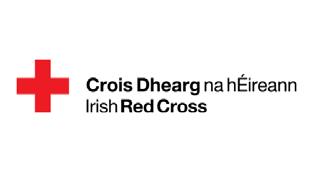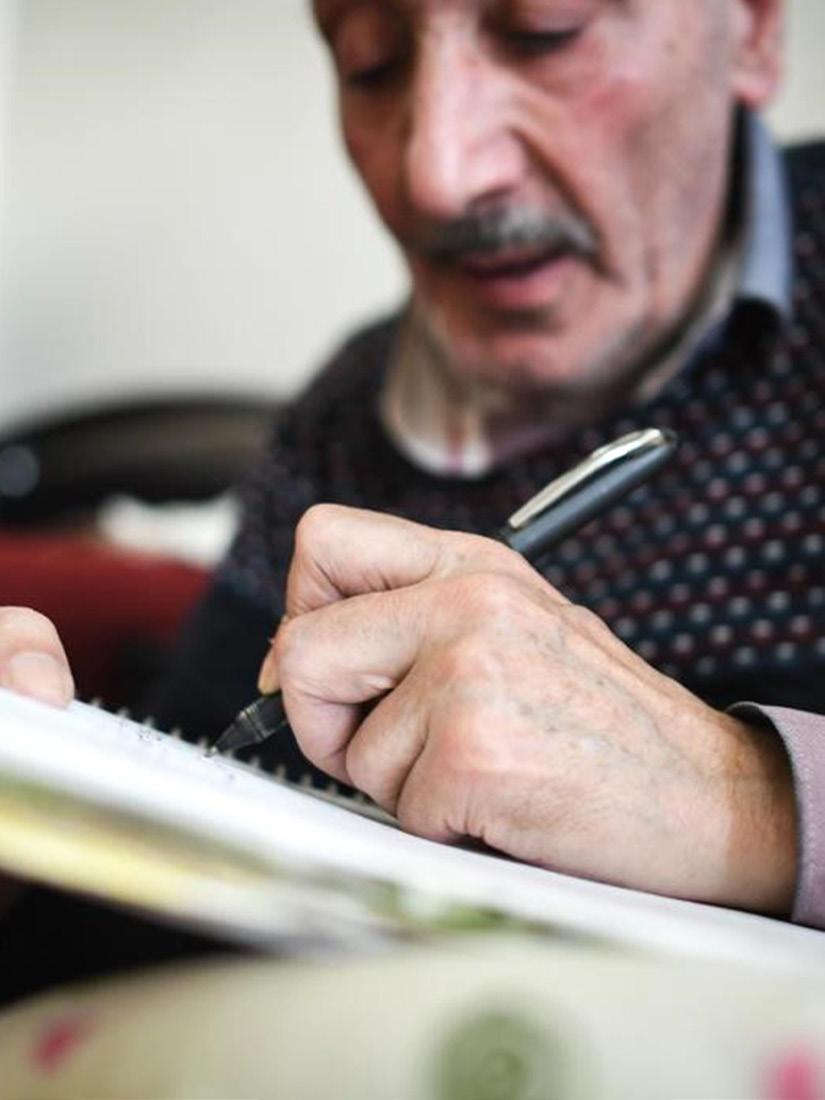




WIN a 2 Night Stay in the Clifden Station House Hotel

Anatomy of a stroke
Exploring Jane Austen’s Bath How one woman survived the trauma
A guide to where the author lived and visited


Cork woman fights for India’s street children
PLUS: News, Bridge, History, Competitions, Wine, Beauty, Health, Travel, Meeting Place And Much More.. Our National Treasures A celebration of Ireland’s National Parks

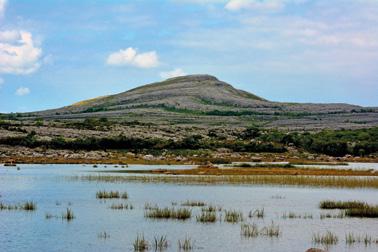





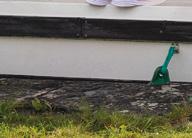




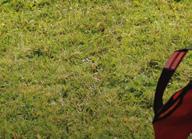
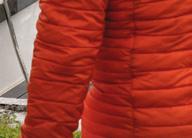




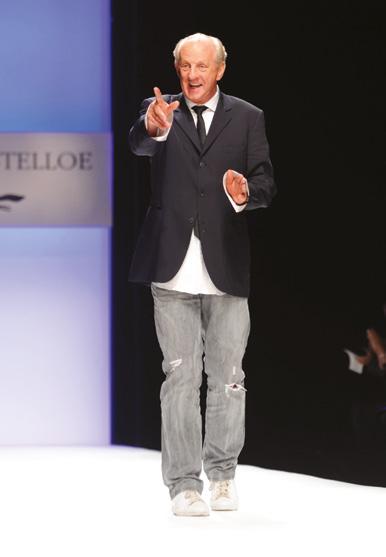

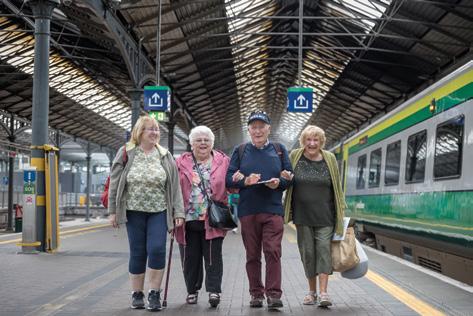
Editorial
Advertising:
Contributors:




urges patients ‘Don’t be shy –Just ask’
Ahead of International Clinical Trials Day on May 20, Cancer Trials Ireland is mounting a “Just Ask” campaign urging people with cancer undergoing treatment to “just ask” their doctors of the clinical trial options open to them.
With over 24,000 people newly diagnosed with cancer each year in Ireland1, Cancer Trials Ireland is dedicated to finding new ways to prevent, find and treat cancer. It currently has over 110 trials open and recruiting new patients.
The charity is hosting an information webinar on Tuesday May 20 from 2.30-3.30pm offering an overview of trials here, how they work and how to access them. The session will feature the perspectives of both cancer researchers and patients, with contributions from Prof. Gerry Hanna, Vice Clinical Lead, Cancer Trials Ireland, Dr Claire Kilty, Head of Research at the Irish Cancer Society, and patient advocate Jed van de Poll. Broadcaster and former GP, Ciara Kelly, will host the webinar which is free of charge to members of the public—to register, visit www.cancertrials.ie/JustAsk.
For Prof. Gerry Hanna, Vice Clinical Lead at Cancer Trials Ireland, the ambition is to achieve an up to 75 per cent five-year survival rate for people diagnosed with cancer within the next decade: “We're seeking to constantly improve outcomes for people with cancer and we've gone from 25 per cent of people being alive five years after a cancer diagnosis 30 years ago, to now over 50 per cent. We want to get that figure up to 75 per cent in the next ten years and one of the ways that we can do this is through clinical trials in finding the next generation of treatments that will improve outcomes for people with cancer. The intention with a prospective trial treatment received by patients is that it should be at least as good as the standard of care and hopefully better."
“We also know that in hospitals that run clinical trials, the outcomes are generally better even for those patients who are not

taking part in the trial, as the quality of clinical care improves for everyone. With this campaign, I would encourage any person going through cancer treatment to ‘just ask’ their doctor if there is a cancer trial currently available that would be suitable for them.”
When it comes to the latest attitudes of members of the public to clinical trials, a survey conducted by Cancer Trials Ireland in July last year yielded some very interesting findings:
• Approximately one in five (18%) either know of someone who has taken part in a clinical trial, or have taken part themselves, while three in five (62%) would be willing to take part in one
• Seven in ten (70%) would take part in a trial to potentially help others get better treatment for their health issues in the future, while almost four in ten (38%) would do it to have a longer life, and approximately one-third would sign up to access a new treatment before it’s widely available (32%), or to cure their disease (30%)
• Over half (53%) would get involved in a trial to improve thei health and well-being, with two in five to have a more active role in their healthcare if ill (44%), or to access medical care and more frequent health checks as part of treatment (40%)
The Food Safety Authority of Ireland (FSAI) is reminding food businesses, including manufacturers, wholesalers, and retailers to ensure that robust food safety management systems are in place for the production and supply of chilled and frozen coated poultry products placed on the Irish market. It is further directing manufacturers to ensure that chilled and frozen coated poultry products include appropriate cooking instructions and are clearly labelled as non-ready-to-eat.

The FSAI is also recommending that consumers undertake the following actions when preparing chilled and frozen coated poultry products:
· Cook thoroughly: Always follow the cooking instructions on the packaging and ensure that the food is cooked
thoroughly, the internal temperature at the core of the food (this is the thickest part of the food) must be 75°C or higher.
· Practice good hygiene: Wash hands thoroughly with soap and water before and after handling raw poultry and clean all food contact surfaces and utensils with hot, soapy water after use.
· Store safely: Keep products at the appropriate temperature as indicated on the label.

No matter your age, maintaining optimal health and well-being is a lifelong goal. Did you know that the omega-3 fats EPA and DHA—found in oily fish like mackerel, salmon, anchovies, and sardines—are essential for heart health and cognitive function? Since our bodies can’t produce omega-3s naturally, it’s vital to get them through our diet. Surprisingly, 89% of Irish adults don’t consume enough oily fish. That’s why taking a high-quality omega-3 supplement like Eskimo-3 is a smart choice.

If you’re looking to support heart health, boost brain function, maintain healthy vision, and strengthen your immune system, Eskimo Brain 369 is ideal. It combines high levels of omega-3 EPA and DHA, plus omega-6, omega-9, plus vitamin D, vitamin E, and CoQ10—to help keep your heart strong and your mind sharp.
Eskimo Brain 369 is available in both liquid and capsules in Health Food Stores and Pharmacies nationwide. Find out more - eskimo3.ie
Introducing NEW Zerochol Cardio +, a new food supplement especially formulated to reduce and/or help maintain normal LDL cholesterol levels and support overall heart health.
• Clinically proven to lower cholesterol levels.
• Supports a healthy heart.
• High strength 1500mg plant sterols and 2.88mg red yeast per 2 tablets.
• Once a day formula
• Suitable for vegetarians and vegans.

Just two small tablets taken with your main meal, makes Zerochol Cardio+ a natural and easy way to keep cholesterol levels in check and keep your heart healthy and happy! ❤ Available in Health Food Stores and Pharmacies nationwide. Find out morezerochol.ie


Pictured at the launch of the 31st Croí Corrib Charity Cycle at Spiddal pier is Stephen Hosty, Volunteer, Croí Heart and Stroke Charity; Christine Flanagan, Director of Fundraising, Croí Heart and Stroke Charity; Bernard Dempsey, Driver, Corrib Oil; Sharon Spellman, Human Resources, Corrib Oil; Phillip Monks, Chief Marketing Officer, Corrib Oil.
The 31st Croí Corrib Charity Cycle is set to take place on Sunday, June 8th, 2025, and registration is now open. This year, the event will again depart from Dangan Sports Pavilion in Galway City and finish at the Croí Heart and Stroke Centre on Moyola Lane, Newcastle.
Cyclists can choose from two scenic routes: the 107km Route or the 47km Route. Whatever your ability this is your chance to cycle for a great cause and support Croí’s mission to prevent heart disease and stroke. Every Euro raised will go directly towards lifesaving programs, educational outreach, and support services for those at
risk or living with heart disease and stroke. Christine Flanagan, Director of Fundraising at Croí Heart and Stroke Charity, shared: "The Croí Corrib Charity Cycle is more than just an event – it’s a movement that brings people together to make a real difference in the fight against heart disease and stroke. We are calling on cyclists of all abilities to sign up, rally their friends or colleagues, and join us for a fantastic day of cycling, camaraderie, and community support."
Phillip Monks, Chief Marketing Officer of Corrib Oil, added: “We are delighted to once again support the Croí Corrib Charity Cycle and raise vital funds for preventative and lifesaving heart and stroke services. Having been involved since the very beginning, we’ve seen it go from strength to strength over 31 years. ”
All registered cyclists will receive: A limited-edition medal and snood. Full route support and mechanical assistance. Food stops and a post-cycle party at the Croí Heart and Stroke Centre. PLUS – Raise €50 or more to receive a limited edition Croí Corrib Charity Cycle Jersey and be in with a chance to win a bike worth over €1,000, courtesy of Westside Cycles!
Register at www.croi.ie and be part of something truly special.
Let’s cycle together to help save lives!
How to ‘Alzheimer’s-proof’ yourself: A new book claims prevention is possible for 99 per cent of people
A new book is set to challenge the conventional view of Alzheimer’s, claiming that for the vast majority of people, the disease is not an inevitable part of ageing but something that can be prevented. Alzheimer’s: Prevention is the Cure argues that less than one percent of cases are due to genetics and that current drug targets, such as amyloid plaques, are neither the cause nor the solution.
The book’s author, Patrick Holford, Chair of the Alzheimer’s Prevention Expert Group and founder of the charity Food for the Brain, suggests that Alzheimer’s is largely the result of lifestyle, dietary and environmental factors.
“Becoming an Alzheimer’s patient is almost always a choice,” says neurologist Dr David Perlmutter, a member of the Expert Group, who adds that lifestyle, not genes, is what’s truly driving the rise in dementia. According to Holford, cognitive decline is the outcome of a “perfect storm” of negative influences that impair the brain’s structure, function or energy supply. “Every known risk factor affects one or more of these areas, and it’s the combination—many of which we can control—that leads to cognitive decline,” he says.
The book is the result of a global Alzheimer’s prevention initiative launched by Food for the Brain. The project has
tested the cognitive function of over 400,000 people through a free online tool, which includes a follow-up assessment of diet and lifestyle. This generates a personal Dementia Risk Index score and practical advice to reduce risk, with users encouraged to retest and track their progress over time. Holford notes that signs of decline are being detected from as early as age 18, with most people experiencing noticeable impairment by their 70s or 80s. However, he insists that decline can be halted—and even reversed— through the right nutrition and lifestyle adjustments.
The book outlines modifiable risk factors and the impact of addressing them. Central to its message are what Holford calls “the four horsemen of the brain health apocalypse”: insufficient intake of omega-3 fats, B vitamins, antioxidants, and overconsumption of sugar and refined carbohydrates. Increasing omega-3 through fish or supplements can cut dementia risk by 20%, as can optimising vitamin D levels. Supplementing with vitamin D alone has been associated with a one-third reduction in risk
Alzheimer’s: Prevention is the Cure , by Patrick Holford, is published 1st May 2025 and is available from Amazon and all good book shops. More information can be found here: https://foodforthebrain.org/apic/
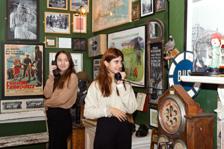
The Little Museum of Dublin has announced that tickets are now available to purchase (www.littlemuseum.ie) ahead of the summer season. The museum will close its current temporary location at 33 Pembroke Street on May 25th as the team prepares to return to its restored Georgian home on St. Stephen’s Green in the heart of Dublin. Doors are scheduled to reopen to the public in early June.
After an ambitious €4.3 million renovation, the museum's historic townhouse has been transformed with remarkable enhancements. Visitors can look forward to expanded and reimagined exhibition spaces, a new reception area, a discreetly integrated lift to improve accessibility, a sun-trap patio and an enriched collection of artefacts donated by the people of Dublin.
Since 2011 the Little Museum of Dublin has welcomed over one million visitors and stands as a vibrant celebration of the city’s history and community. Ranked number twelve among Europe’s top twenty-five attractions on TripAdvisor, the museum has earned a reputation for immersive storytelling, theatrical flair, and warm Irish hospitality. Despite operating from a temporary home on Pembroke Street for nearly a year, the museum retained its crown as the number one “Thing to Do” in Dublin on TripAdvisor, which is a testament to the extraordinary response from guests who enjoyed the museum’s guided tour experience.
The reimagining of the Little Museum of Dublin was part-funded by Fáilte Ireland, along with the Department of Tourism, Culture, Arts, Gaeltacht, Sport and Media, Dublin City Council, and generous corporate and individual funders. The museum worked with distinguished conservation architects Deaton Lysaght to realise this ambitious project, which not only enhanced the building’s fabric but also created a new youth education space, upgraded exhibitions, and improved interpretation throughout.
The museum will be opened seven days a week from 9:30am to 5pm, offering guided tours every forty minutes. In addition, a new daily walking tour, The Little Walking Tour of St. Stephen’s Green, will take place each afternoon at 2:15pm.
When we think about retirement, we often picture peace of mind, time with family, travel, hobbies, or simply enjoying the comfort of financial security. But there’s a silent threat that can quietly erode even the most carefully built nest egg: inflation.
And for many Irish savers, the impact is far more severe than expected.
If inflation continues at the historical level of the past fifty years, a modest €20,000 saved today could shrink in real value to just €13,000 in ten years, and a mere €8,600 in twenty. Even if inflation stays at the 2% target set by central banks, the value still drops to €13,460 after two decades.
Put simply: what buys you comfort today might only cover the basics tomorrow.
At Raisin, we believe in empowering over-50s with the tools and knowledge to protect their savings and secure the retirement they deserve.
Inflation means rising prices over time. It’s the reason a cup of coffee that once cost 50c now sets you back €3. While a few cents here and there may seem trivial, over years and decades, those small changes compound dramatically.
Let’s say you’re 60 today, with plans to retire at 66. Using long-term average inflation, every €100 in savings would only be worth around €65 when you retire. By the time you’re 80, it could drop to €43 in real purchasing power.

If you're younger, the effect is even starker. For a 30-year-old aiming to retire at 66, that same €100 could be worth as little as €21.50 by retirement.
For many, savings accounts feel like a safe haven. But with Irish Deposit Interest Retention Tax (DIRT) and historically low domestic interest rates, traditional savings may not even beat inflation, meaning you're effectively losing money.
At Raisin, we help customers go beyond local options to access competitive interest rates across Europe, all within a secure and regulated environment.
Here are some smarter strategies:
Term Deposits: Often offering higher interest rates than standard savings accounts, ideal for stable, inflationbeating returns.
Savings Abroad: Through our platform, you can easily open deposit accounts with trusted EU banks offering significantly higher rates than Irish institutions.
Pension Growth: Maximise tax reliefs and employer contributions to build a larger, more resilient retirement fund.
Diversified Investments: Property and equities have historically outpaced inflation, but should be balanced with lower-risk products depending on your time horizon and risk tolerance.
Four Simple Steps to Get Ahead
Eoghan O’Hara of Raisin Ireland shares this practical roadmap for futureproofing your finances:

Forecast Realistic Needs: Factor in inflation when projecting your retirement expenses.
Invest Wisely: Choose products that offer real growth, not just nominal returns.
Maximise Contributions: Make the most of your pension scheme’s tax advantages and matching contributions.
Review Regularly: Life changes, and so should your financial plan. Schedule periodic reviews to stay on track.
Your Retirement Should Work for You, Not Against You
With thoughtful planning and the right savings strategy, you can hold on to more of your money’s value and your freedom in retirement.
Raisin is here to help. Our easy-to-use platform gives you access to high-interest term deposits across Europe all under one roof, all from the comfort of your home.
Because peace of mind shouldn't come with a price tag that rises faster than your savings.
Visit Raisin.ie/st to explore how you can make your money work smarter.

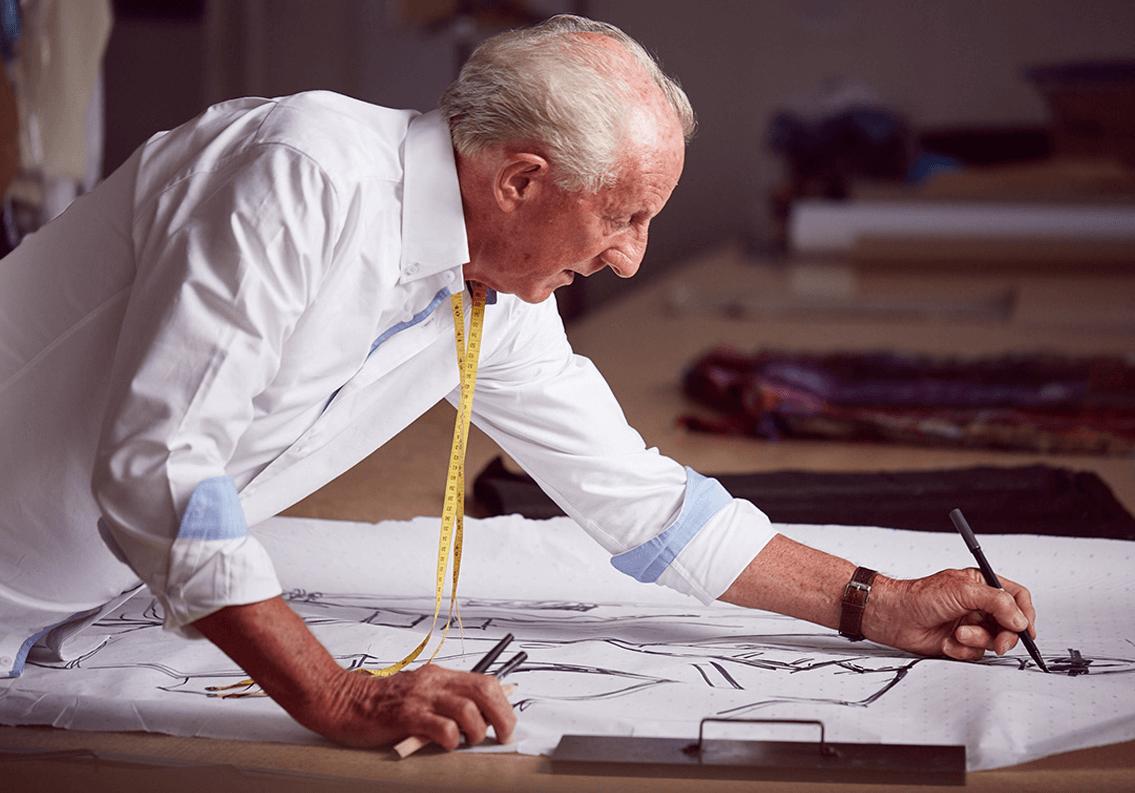
Master at work..Paul Costelloe learned his trade at the Grafton Academy of Fashion Design
For a man who did not sit his Leaving Cert, instead in 5th year he was packed off to a pig farm – Cappoquin Bacon Factory in Waterford – Paul Costelloe’s life and career took off in directions he would never have imagined as a young teenager.
But yet there is a hint of genetic influence even then as his father had ‘the gift of fabrics’ and his brother Robert was artistically talented, so after his time in the pig business, Paul then spent a year at Grafton Academy of Fashion Design – a transition he describes as ‘from farming to fashion’. After this he spent a couple of years in Paris and slowly he found his feet in style and fashion. The rest as they say is history.
Paul Costelloe’s story began as a young boy in south county Dublin, the youngest of seven children. It was a ‘typical IrishAmerican family’ as he called it, as his father hailed from Limerick while his mother came from America. She met Paul’s father on a short visit to Dublin, and he followed her back to America and they got married there and returned to Ireland together settling in south Dublin. When he talks about the influences he grew up with that preceded his rise to the top of the fashion world, he credits first his father as he knew about fabrics from his time working in a textiles manufacturing company.
‘He’d got these great hands that he could touch something and say – ‘that is polyester or cotton, that is pure wool’. He would know immediately and he never went to textile school’. Paul was very fond of his father and admired his work ethic as he worked his way up in the world. Paul also credits his mother’s influence by giving him ‘this kind of American savoir-faire. Its a New York thing, dictatorial, bossy, difficult’ he laughs.
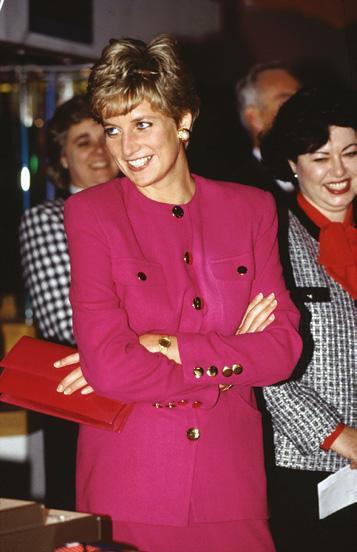
when in 1983
“Naxos is part of every music lover’s life” – Gramophone






FOLK TALES, VOL. 2
2ND VOLUME NOW AVAILABLE Gerald Peregrine, Antony Ingham

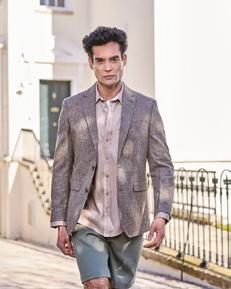


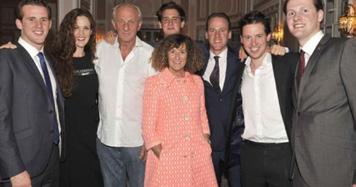
While he was the youngest of seven children, Paul is clear that he was not spoilt or doted upon, and spent a lot of time out in the garden which had tennis courts and stables and was over the wall from Willow Park School and Blackrock College. Not being academic, he found school difficult and his grades never rose above a ‘C’. However he credits his lack of academic brilliance with allowing him the time and space to explore his inherent creativity and he often indulged in skipping a day at school altogether and just lie in the grass in the garden’s orchard of apple trees. He describes himself in those days as ‘as the happy little boy in the high grass’. That was until his parents decided they had had enough, and he was packed off to the pig farm.
After a year at the pig farm, Paul spent a year at the Grafton Academy of Fashion Design. And from there Paul moved to Paris for further study. Without the language he found it difficult and did not finish the course at the Chambre Syndicate de la Haute Couture. Feeling completely out of his depth, he ended up wandering around Paris with his portfolio until he met Jacques Esterel, a designer for whom he worked for the next few years, being paid only for the sketches he sold. But he found he learnt more just by living in Paris during the era of Ungaro and Cardin.
After some years in Paris, he was approached by Marks & Spencer who were looking to establish in Italy, and so Paul moved to Milan for a time. He also visited America and checked out Seventh Avenue and then returned to Milan where he worked for a label called Anne Fogarty, however that did not last as his style was deemed to be ‘un-American’. He stayed on in Milan as designer for the luxury department store La Rinascente. While that was a disappointment for him, he then moved on to work designing for a lingerie company. But eventually he decided to come back to Ireland and he set up the Paul Costelloe brand out of a factory in Northern Ireland in the late 1970s. He found a company in Dungannon who would manufacture his label and so he stayed in a small local hotel during he week, and then return

to Dublin for the weekend. This was a very positive time for him. ‘It was great because in those days I was employed. It was really nice and as a designer I could go home and enjoy my weekends.’ He opened a shop in Dublin on Drury Street. One day he was in town and he saw a woman getting off a train. She was wearing one of his designs, a skirt. He approached her and told her ‘by the way, that’s my skirt!’ The rest, as they say, is history as that is how he met his wife Anne Cooper.
And what is even more remarkable, is that while Paul was one of seven children, it turned out that Anne herself was the eldest of seven children. It seems that seven is the magic number as Paul and Anne married in 1979 and went on to have seven children themselves – Jessica, William, Robert, Gavin, Justin, Paul-Emmet and Nicholas. Grown-up now, his sons seemed to have followed in his footsteps in the fashion industry and Paul frequently posts pictures with them on his instagram account.
The brand ‘Paul Costelloe’ has grown to become one of the most established names in British and Irish fashion. Since the establishment of the fashion house under his own name, the family owned and run business has been a leader in the use of hand-crafted, luxurious fabrics combined with cutting edge design, innovation and creativity. One of his sons, William, works full time in the business and they get on well.
Now based at his design studio in the heart of London’s fashion district, Paul works with renowned technicians, suppliers and manufacturers to deliver collections of high quality, texture and comfort. He has a sampling unit in central London and as well as working with a family owned manufacturing unit in the Ancona region of central Italy. Having established himself in London there soon followed a fast growing success of his brand and Paul was invited to show at the London Fashion Week in 1984 and his Spring/Summer 2020 collection celebrated the designer’s thirtyfifth year on the London Fashion Week catwalk.

Experience a transformative journey and engage in daily movement adapted to your abilities, learn to cook and enjoy nutritious meals with a personal chef, and immerse yourself in meaningful projects that connect you to Ericeira’s vibrant local and international community.

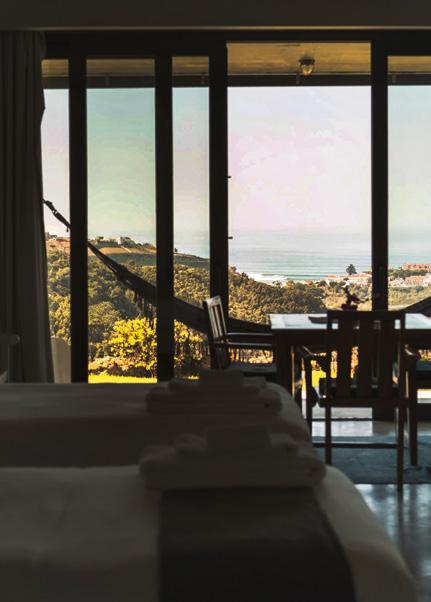
Join an immersive 1 or 2 week Bluceira retreat to foster self-confidence, long-term well-being, and renewed enthusiasm for life.



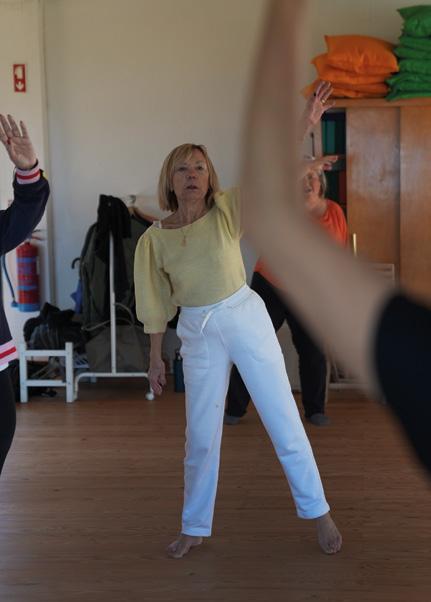


His label, Paul Costelloe Collections, really took off when in 1983 he was appointed as the personal designer to Diana, the Princess of Wales, this was a collaboration that flourished until her untimely death. These days Paul has worked extensively with celebrities all over the globe and is close to Vogue Williams. He designed her wedding dress for her big day when she married Spencer Matthews, and also put together the Christening robe for their son Theodore. Vogue is frequently seen wearing his designs.
His collection ‘Paul Costelloe Living’ is very popular here in Ireland and is available in Dunnes Stores where he caters for women, men, home and children’s wear.
He designed green and white shorts adorned with an ivy leaf and his trademark fox motif for staff at The Ivy Dublin in collaboration with the Six Nations Rugby League, something that he was especially excited about as he is an avid rugby fan.
Royal connections are also part of his creations, as after dressing Princess Diana, he went on to dress Zara Tindall and Princess Anne, both of whom are still clients of his. He says that working with the People’s Princess was ‘the beginning and one of the biggest things for my career’.
He would like to dress Kate Middleton, whose style he describes as ‘totally correct’. However he does not feel the same about Meghan Markle who he says ‘gets swallowed up in a lot of the clothes she wears. She is a lot smaller than Diana, so she shouldn’t really try to imitate her. She has a touch of Diana, without the class’. When it comes to royalty it is back to Kate Middleton – ‘I think she is elegant. She’s understated, she’ll hopefully wear Paul Costelloe one day’.
Indeed, judging by his outstanding success over the past few decades, Kate just might find that his creations are a perfect match for her elegant style which Paul describes as of a very high standard. Time will indeed tell.


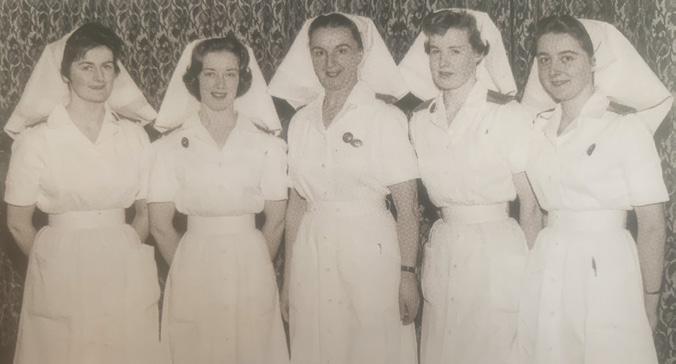
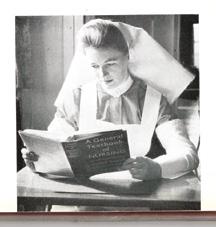


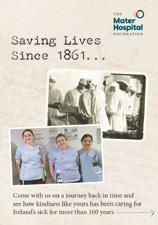

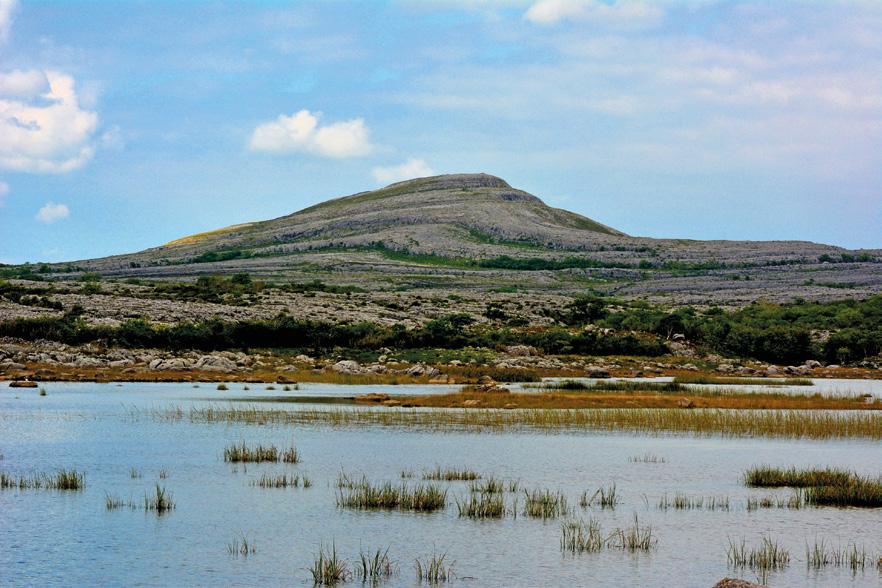
In the Burren, Lough Gealáin (a turlough), lies close Mullaghmore mountain which has been likened to a collapsed wedding cake
In the second part of her study of Ireland’s National Parks Zoe Devlin, among others, takes in Burren National Park, Wicklow Mountains National Park, and Páirc Náisiúnta na Mara, Ciarraí, Ireland’s first Marine National Park.
Sometimes it is the pungent smell that gets to you first, other times it is the sound of little cloven hooves rattling along on the limestone that tell you a small herd of wild goats is not too far away. Bearded, brown and white creatures with magnificent horns, these Old Irish Goats wander freely across one of our most interesting of parks – the Burren National Park. As a result of hybridisation, the number of true Old Irish Goats is now reduced to around one hundred, domestic goats having disturbed their genepool, so to come across a number of them on a sunny summer day, a heat haze shimmering across the landscape, one can only feel privileged to witness such a spectacle.
The Burren National Park occupies 1,500 hectares in a corner of the area of County Clare that is known simply as the Burren. One of our smallest parks, it got its name from the Irish word – boireann – which means a rocky place and it describes this karst terrain most aptly. Karst is formed when bedrock has been dissolved, creating caves, springs and underground streams. Oliver Cromwell’s second-in-command, Edmund Ludlow, famously described the Burren as ‘a country where there is not enough water to drown a man, wood enough to hang one, nor earth enough to bury him’ but also commented that ‘yet their cattle are very fat; for the grass growing in turfs of earth, of two or three foot square, that lie between the rocks, which are of limestone, is very sweet and nourishing.’
So, how did the Burren come to be formed? It is a fascinating history that begins with its creation during the Carboniferous period some 300 million years ago. The limestone was formed from marine sediment in a tropical sea close to the equator and, after its creation, the entire area moved up the globe over some twenty million years, tilting as it settled, hence the sloping terraces of Mullaghmore. The limestone contains fossils such as corals, ammonites, and sea-lillies or crinnoids. To get the most out of this superb national park, may I suggest you give yourself plenty of time to enjoy this extremely interesting area at a leisurely pace.

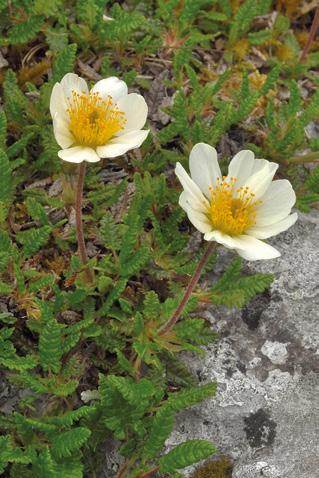





in pharmacies nationwide or online Now recognised by the European Association of Urology (EAU)
Jul 8;9:2020-4-13. 1. Diagnosis of UTIs should be made by a doctor. Utipro Plus AF is for the management of uncomplicated UTIs. Please consult a healthcare professional before using Utipro Plus AF.
Drugs

ask@pamex.ie


For botanists, the Burren is famed for being one of the most interesting sites in western Europe with wildflower species that would usually be found in diverse habitats such as sub-arctic and Mediterranean, but here, all of them grow in the same environment as one another. One of these beauties is bloody crane’s-bill, a magenta flowered species that is more usually found in the south of Europe and then, if you cast your eyes a little further you will see that scattered generously across the limestone pavement are the snow-white-flowered plants of mountain avens, the national flower of Iceland where it is far more common. In May, the bright blue flowers of spring gentian are a delight to find and also the stunning yellow hoary rock-rose is well worth looking out for. In Ireland we currently have at least 25% of the European population of this latter species. And let’s not forget the many orchid species that grow in the Burren –among them the fly orchid, the bee orchid and O’Kellys spottedorchid – named after a 19th century County Clare nurseryman, Bernard O’Kelly. Many of these rarities are protected by law but it is extremely difficult to imagine anything other than education giving them the protection they need in a practical sense.
A fascinating feature of the Burren is its turloughs – areas that are liable to flood when groundwater surges up through sink-


holes, creating small lakes, only to drain away within a short while, leaving the areas free of water. One such turlough, Lough Gealáin, lies close to Mullaghmore mountain on the southeastern corner of the park. This mountain has been likened to a collapsed wedding cake with giant steps of limestone rising in slanting terraces up to the top tier. Around the turlough are special plants rarely found elsewhere such as the turlough dandelion. It’s hard to magine a dandelion that is rare, but this one is different – it has deep red stems.
However there is more than wildflowers to interest a visitor to the Burren. Butterflies such as the brown hairstreak and the wall brown are two of the twenty-seven species that have been recorded here. Ninety-five species of birds enjoy the clean, fresh air above the limestone too, large birds such as the kestrel and the smaller yellowhammer.
Walking in the Burren is never difficult, with great limestone slabs to help you along the way but take care on terrain where the vegetation might have covered the spaces (grykes) between the slabs. They can catch an unwary walker! There are seven waymarked walking trails in the Burren National Park and Slieve Carran Nature Reserve, with a Green Road also. These walks vary from a short 30-minute loop walk to a three-hour walk over limestone hills. ¹

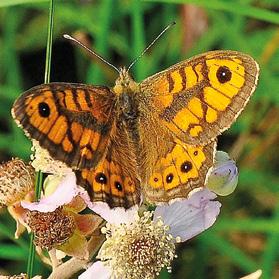











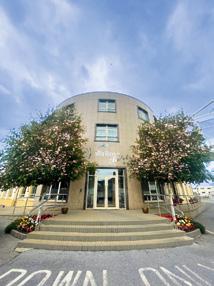

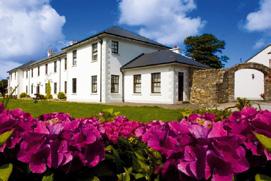



On the eastern-side of our island is the largest of our land-based parks, Wicklow Mountains National Park. This extends over nearly 23,000 hectares and here you can find diverse landscapes such as the Liffey Head Bog – a blanket bog, strewn with fluffy white plumes of bog cotton, that stretches between Djouce, Tonduff and Kippure and has been designated as a Special Area of Conservation. Then there are U-shaped valleys that have flat floors and steep sides such as Glenmalure and Glendalough where, on the slopes, one-hundred-year-old oak woodlands still stand. Between the trees, mosses in shades from olive green through gold to russet carpet the forest floor with the lowgrowing shrubs of fraochán (bilberry) filling the gaps.
At over 600m, the Wicklow mountains comprise the greatest upland area in Ireland and are part of the largest continuous area of granite in Ireland and Britain. They are home to several hanging valleys and corries or tarns. Corries are small lakes which were formed by glacial meltwater that became blocked and two of my favourites are Art’s Lough and Kelly’s Lough, both high up in the Glenmalure valley with crystal-clear waters that sparkle on a summer’s day. Glenmalure valley is one of the longest glacial valleys in Ireland and on both flanks are hanging valleys – Fraughan Rock and Barravore – which were carved out by glacial movement that slowly spilled down into the main Glenmalure valley after the last Ice Age. Remains of lead, zinc and silver mines can be seen in Glendalough valley along the track that leads from the Upper Lake, up along the Glenealo river. There were also workings in the neighbouring valley of Glendasan with lead mines also in the Glenmalure valley.
There are twenty-seven peaks in these mountains, the highest of which is Lugnaquilla (925m), followed by Mullaghcleevaun, (849m) and Tonelagee (815m). Several rivers begin their journey to the sea here, rivers such as the Avoca, Dargle, Liffey and Slaney, a meandering river that flows into the Irish Sea at Wexford.
These mountains are home to a wide variety of wildflowers. One species is round-leaved sundew, a carnivorous species that gets its nutrition by trapping insects on its sticky leaves. It has to survive and the soil is so poor that the plant’s existence depends on esnaring these tiny creatures. The golden blooms of gorse speckle the landscape for most of the year while purple heathers carpet large swathes of the hillsides and bogs. In springtime, the deciduous woodlands come alive with masses of bluebells and, scattered here and there, are the deep magenta flowers of the early-purple orchid.
A wee bit later, butterflies flit across the landscape. Between June and September, a stunning sight is the dark green fritillary,

sometimes just a flash of russet but other times, when it settles on a thistle it is worth standing, very still, to observe the intricate designs on its wings. Not half as bright but in greater numbers are speckled wood butterflies – insects with delicately patterned brown wings that prefer shaded woodland where they can feed from the honeydew in the treetops. The pretty, small heath butterfly is another species that flies freely over parts of these mountains, visiting wildflower species such as blue-flowered devil’s-bit scabious and the snow-white blooms of greater


Avian species are represented by more common birds such as stonechat and skylarks while the sighting of the less frequently seen merlin, goosander and red grouse could be the reward for a lot of patience and persistence. stoats, pine marten, badgers and hares are at home here, with a large number of red-sika hybrid deer, and for those who visit the park at night, at least nine species of bats have been recorded.
There are nine waymarked trails in Glendalough, from short walks to long hikes, with some superb walks in Glenmalure also. For longer waymarked walks, three long-distance trails pass through the National Park – the Wicklow Way, St. Kevin’s Way and the Miner’s Way. ²





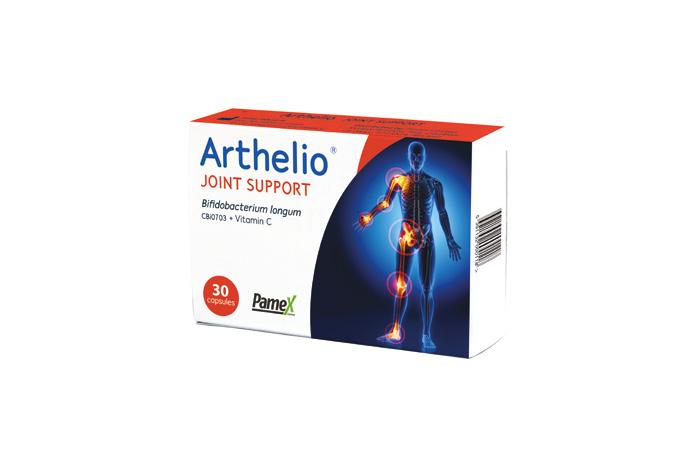


Good news! two more National Parks are on the way. In September 2023, the State’s purchase of the World Heritage lands of Dowth Hall and Demesne, including Netterville, in Co Meath was announced and the establishment of a new National Park –the Boyne Valley (Brú na Bóinne) National Park.
Dowth Hall is an eighteenth century neoclassical country house and Netterville Manor, a late Victorian almshouse. The heritage of Dowth spans from early prehistory’s passage tombs through the medieval period, the eighteenth and nineteenth centuries and right up to the modern era. The diverse range of historical periods reflected in its archaeology and built heritage, along with its natural beauty and biodiversity makes Dowth a unique site within the list of UNESCO World Heritage Properties. As well as their position within the Brú na Bóinne World Heritage Property, the Dowth lands are important places for nature. They host a wide range of habitats, including species-rich grasslands, native woodlands and mature hedgerows. The property is 224 hectares in size. ³
Then in April 2024, the Minister of State for Nature, Heritage and Electoral Reform, Malcolm Noonan TD confirmed the establishment of Ireland’s eighth and largest (29,000 hectares) park – Páirc Náisiúnta na Mara, Ciarraí, Ireland’s first Marine National Park. He said “With the iconic Conor Pass as the gateway, Ireland’s first Marine National Park brings mountains, blanket bog, heaths, rivers, coastal dunes, limestone reefs, sea cliffs and some of the wildest land and seascapes in the country together in celebration of nature.”
The County Kerry park will include lands on the Great Blasket Island, Sceilg Mhichíl, and Derrynane House, as well as Little Skellig and Puffin Island. 4
¹ https://www.nationalparks.ie/burren/things-to-do/#walking ² https://www.nationalparks.ie/wicklow/things-to-do/ ³ https://www.nationalparks.ie/wild-nephin/establishment-ofa-new-national-park/
4 https://www.nationalparks.ie/mara-ciarrai/
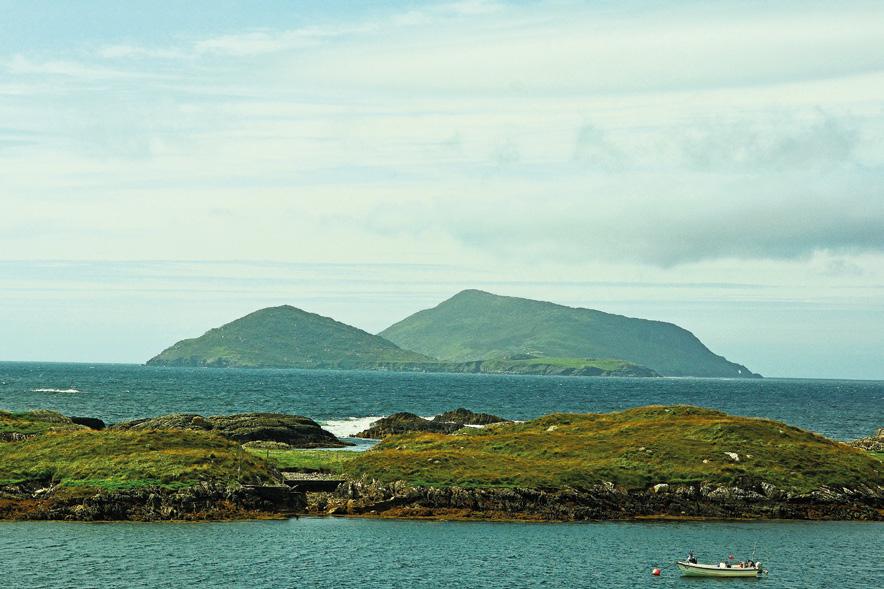













always includes
Flights from Dublin, plus transfers


Hand- picked hotels in the best locations for all the sights
Luxury accommodation on our five-star ships with impeccable on-board service
Spacious cabins with window or French balcony on all river cruises
Daily excursions & visits


Breakfast each morning, plus select other meals (river cruises are full board)
Free drinks package on river cruises*



Expert Riviera Tour Manager or Riviera Cruise Director and Concierge looking after you throughout




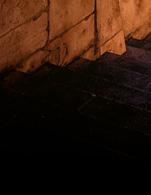








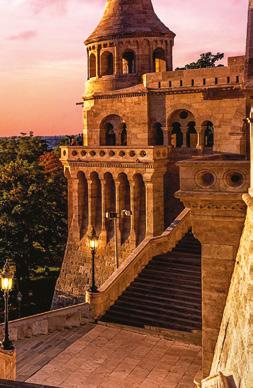




If you enjoy visiting or reading about the home patch of a favourite writer, you may note how often stories are set against a physical background, and just how important that can be to the book. Whether featuring its characters against sylvan pastures, or tough, impoverished cities and towns – background can clearly be a powerful influence on the experiences – and writing, of many of our favourite authors.
They can be inspired, shocked, angered or intrigued or by their surroundings, to the extent that the two become inseparable. One such writer, of course, is Jane Austen. Despite the fact that she used various settings for her books, Austen will forever be linked to the spa town of Bath, in the South West of England. Somewhat ironically, however, Jane’s time in Bath was challenging at times. Her wider family remained wealthy, but after her clergyman father’s retirement, the family developed financial difficulties. This gave her writing a subtle edge, which only added to its appeal.
Jane’s family moved to the idyllic eighteenth century spa town of Bath, which nestled in the picturesque Cotswold, when her clergyman father found life a financial challenge after
retirement, and decided on a fresh start. Jane’s wealthy aunt and uncle lived in one of the grandest areas of Bath - the still sought after and very expensive Paragon. Jane’s first Bath visit was in 1797, and she would later use some of her Bath experiences, living in several different houses and areas during her time there.
Bath, of course has a history much older than its Georgian fame, dating back to King Blad, who was cured of leprosy here. The Romans developed the Aqua Sulis, and visitors have ranged from bishops to royalty. One reason why Bath has continued to flourish over the centuries is its ability to adapt, change and develop – the latest in 2006 has been the Thermae Bath Spa. People initially came to use the mineral springs to cure a range of complaints – hence the early spa function of - ``taking the cure’ or `taking the water,’ which became fashionable in the eighteenth and early nineteenth centuries.
However, visitors also needed to be entertained in this rural area - and theatres, concerts and balls attracted the wealthy. Within easy reach of London, it soon became very popular, a fact not lost on Highwaymen!
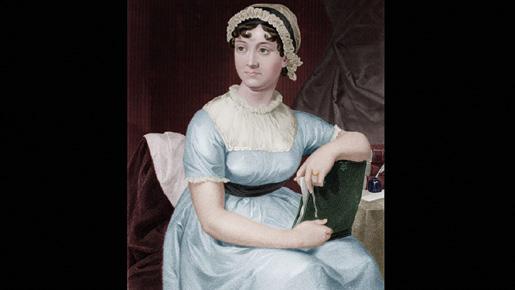

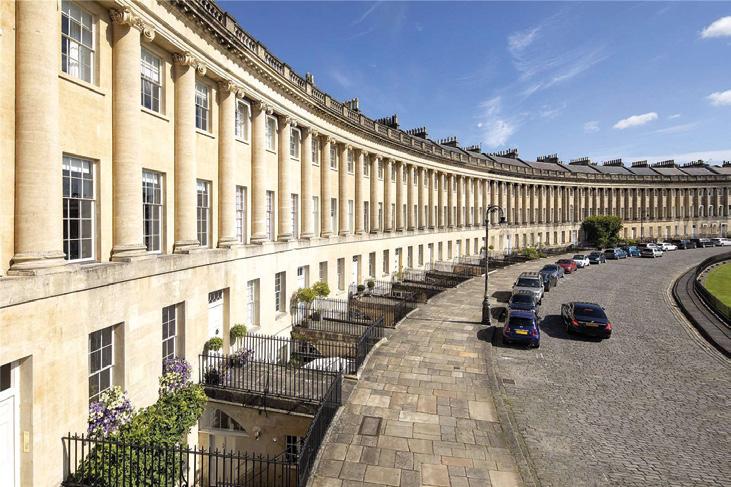
The city was much smaller then, but thanks to careful preservation, visitors can still enjoy the largely unspoiled eighteenth century city, which still has a hotel known to Jane – The Francis. Homes, some set on Bath’s famous crescents, appear to crawl up the beautiful surrounding slopes. When Jane’s clergyman father planned to retire, the family visited relatives in Bath, to consider their options. She would live in a variety of Bath homes - jokes have been made that she moved –socially and literally, down in the world. She started at the top of Bath – literally. The family’s first home was that of her wealthy aunt and uncle. Their residence in The Paragon, (the name says it all!) was where Jane stayed in 1797, on her first visit. Bath soon inspired Jane. In her book, `Northanger Abbey.’ a gentle mockery of the popular Gothic novel of the times, its heroine falls for the charms of a young man in Bath. He invites her to meet his family – who assume she is an heiress. The naïve heroine soon learns to be wary of pride and greed – and learns "common sense, prudence and self-control’’.
13, Queen Square was home for Jane in both 1797 and 1799. The family returned to Bath for a stay at Sydney Place from 1801-4. It is sited near to the beautiful Beechen Cliff, where Jane liked to walk. In 1804, they moved to Green Park Buildings for a time. When her father died, however, the family’s life, finances – and locations, changed utterly. In 1805 they moved to rented rooms in No. 25 Gay Street for a year. This could truly be said to have been `coming down in the world’ – socially as well as physically. The cash strapped family lived there for year after her father’s death, However, their finances meant that they had to move to the even less expensive noisy and crowded area around No. 7, Trim Street, where they lived for a few months in 1806, before leaving Bath.
Two centuries later, visitors are still keen to experience Jane’s Bath, many during the events of the annual and internationally famed annual Jane Austen Festival. These range from `taking the waters’ and dances ( classes are available!), to balls, teas and events in the Assembly Rooms. There is plenty to celebrate this year - `Bath and Austen 2050’, celebrates two hundred and fifty years since her birthday. Age, however, has certainly not withered’ the fun. The characters in Austen’s books would recognise the Bath of today, albeit with its (slightly) modernized events.
Visitors still attend events in the Assembly Rooms. They still `Take the Waters’ (some from the new modern dispensers) at the Pump Room – and enjoy afternoon tea, with Sally Lunns
(sweet buns) . Some stay at the nineteenth century Francis Hotel, and stroll in Sydney Place Garden, When it comes to the (swiftly sold) out balls, concerts and candle lit events, they are just are particular about their costumes – period of course, for formal events. They still dance minuets and quadrilles at Balls which still take place in the Assembly Rooms. They enjoy afternoon teas – and no-one bats an eye at encountering a lady and gentleman in eighteenth century costume strolling past Marks and Spencer!
One aspect of Austen life has changed, of course. In Jane’s time, Bath was one of the most favoured - and best known, Marriage Markets in 18th century England. With a social calendar of balls, reception, teas, fireworks, anxious mamas and soon to be cash-drained Papas, provided the background for daughters to socialize, have fun and ideally marry well. Jane was well aware of this, and along with other topics which interested her, utilised the subject in her storylines. She would have gauged the competition, observed the discreet introductions, Issuing of invitations and the ever intriguing new arrivals in the city.
This year, of course, 250 years after her birth, the celebrations surrounding Jane Austen reach a new high, with a wide range of events from which to choose. At this stage, don’t count on getting tickets to the Pump Room Balls – but Austen fans and observers can have as much fun as their eighteenth century counterparts.

The Assembly Rooms. Its likely Jane would have attended fashionable balls here
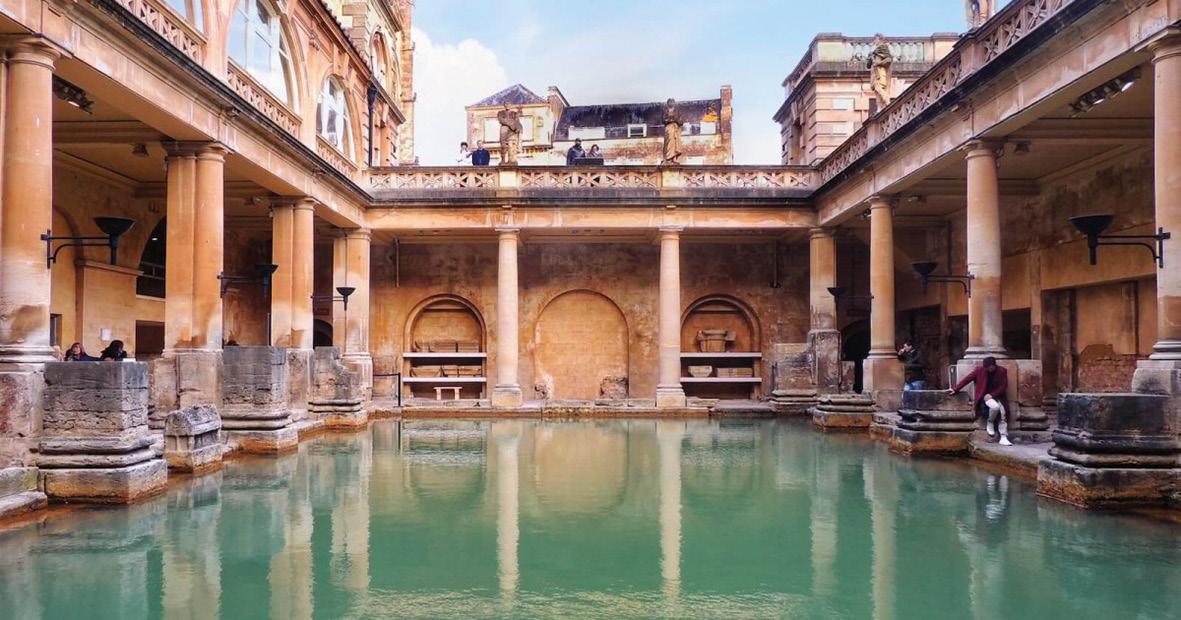
The Roman baths have long been a favourite for visitors to Bath
Taking the waters..
In the 2020s, it can be difficult for enthusiastic readers to be able to visit and admire sites, houses and landscapes which inspired favourite authors. It is even rarer to find them largely unspoiled and still retaining traces of their original purpose. Happily, Bath is one famous exception –and it is possible to still see much of Jane’s Bath, in all its Georgian aspects. Eighteenth century building and city streetscapes happily have been protected, and remain in much the same condition as would have been enjoyed by Jane. The magnificent views over the surrounding countryside remain much the same. So do the walks, public buildings, theatre - and even a nineteenth century pub, which still exist, to the delight of enthusiastic worldwide visitors. So what was Jane’s Bath like to live in and how did it inspire her?
Jane Austen’s Bath Spa
Jane lived with her family for a couple of years at No.4 Sydney Place. One of Bath’s most desired – and desirable areas, it remains unspoilt, from references in `Persuasion’ Now with the addition of a sympathetically created canal and wrought iron bridges, both providing excellent vistas, and you can take a boat ride on the canal for another perspective, as an occasional train roars overhead.
Still going strong, the grandeur of the Pump Room was a social magnet in Jane’s day. It has now become a tourist magnet, and part of the Bath experience. The nearby Assembly Rooms were originally the site of general dancing, flirtation, and general partner scanning. Of course, in Jane’s day, this activity was not just part of the fun and relaxation of a holiday – it was a vital part of the Marriage Market, when a woman’s life and future would depend on her ability to attract – and choice of, partner. However, women to-day still like to dress up, - and when it comes to the Summer Balls held here, visitors are just as enthusiastic about their hired Regency costumes and court curtsies as they were in Regency time!
Milsom Street was – and remains, at the heart of Bath. Visitors and locals, eat, socialize and relax here – and shop at a nineteenth century department store - Jolly’s. During the day light hours, like the rest of Bath, Milsom Street is bustling and crowded. However, at dusk, as the lights come on, dusk draws in, and coach parties have gone home, it is possible to possible to stroll down Milson Street, and go back in time to Jane’s Bath.
This beautiful and internationally famous Crescent has retained it unspoiled Georgian architecture, and setting, against the skyline, sweeping down to green meadows. Sited at the top of Bath, it is mentioned in `Northanger Abbey’. Unsurprisingly it has been utilized as a locations for worldwide TV and film productions. A visit to the No.1 Royal Crescent Hotel is a must, for afternoon tea, if a stay here is beyond the budget!
We like to think that our generation introduced `fast’ and `’street food. However, Sally Lunns have been sold in Bath for centuries, and remain popular to this day. They were introduced by Frenchwoman, Solange Luyon, who like many Huguenots, fled the country in 1680. The Bath locals had difficulties pronouncing her name – and Sally Lunn was the result! They are based on the French brioche, and could be served hot from portable baking ovens.

Useful websites
https://thepumproombath.co.uk https://romanbaths.co.uk www.visitbath.co.uk www.nationaltrust.org.uk



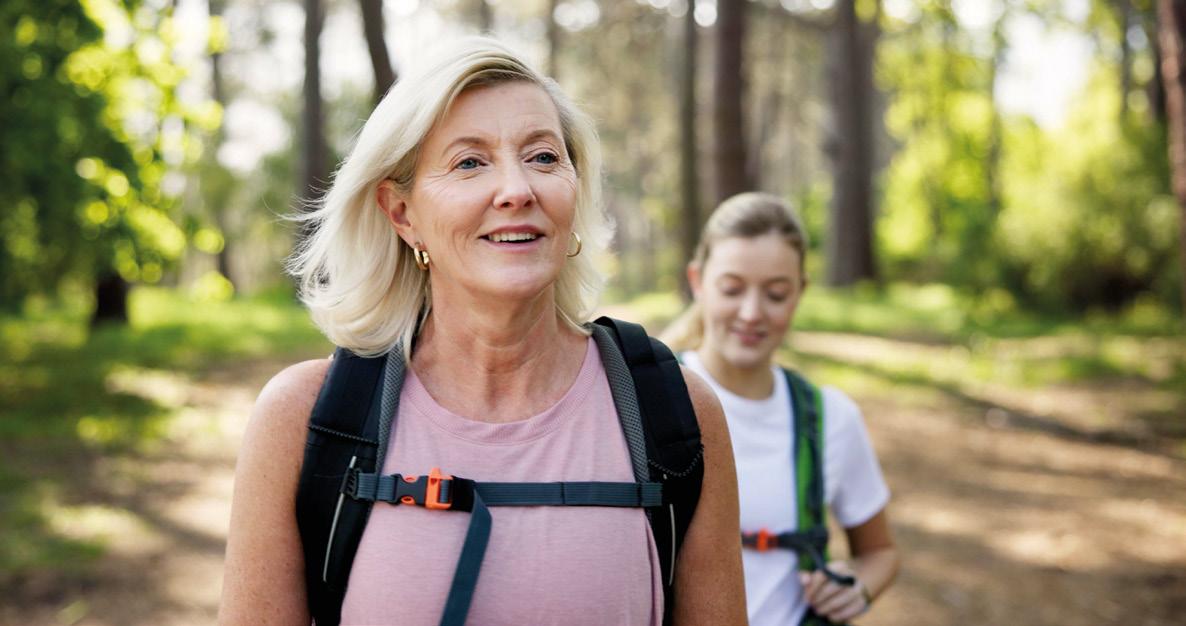






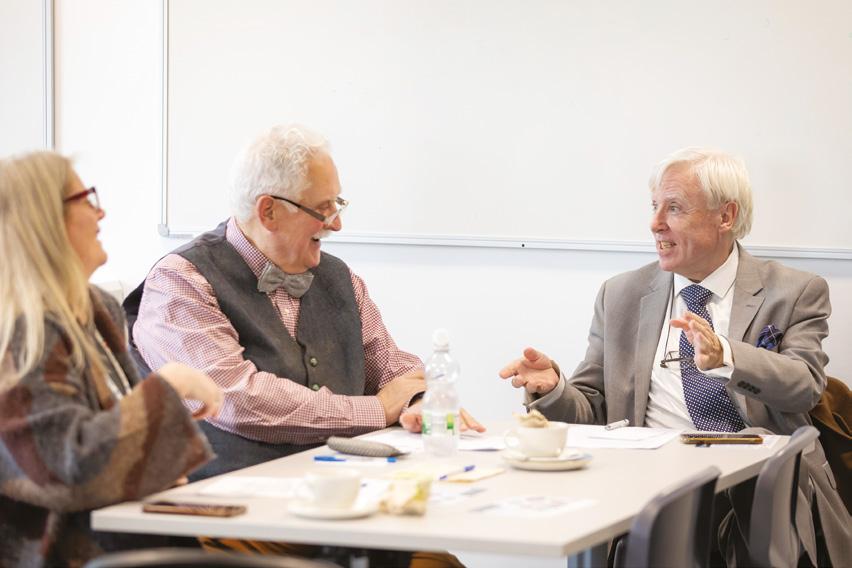
Have you been hearing a lot about Artificial Intelligence - or AI - lately and wondering what it all means for you? Well, a brand new initiative is here to help.
On March 27th, 2025, the Technological University Dublin (TU Dublin) and the ADAPT Centre at Dublin City University (DCU) teamed up to launch a special two-year project called "Age-Friendly AI: A National Conversation on Artificial Intelligence".
This ground-breaking project is all about making sure older adults across Ireland understand artificial intelligence (AI) and have a say in how it's used. Paula Kelly from TU Dublin says "AI is becoming a bigger part of our everyday lives, from the technology we use to the services we access. It’s important that everyone feels comfortable with it and that their opinions are heard."
Well-known Irish hotelier, television personality and Age Friendly Ambassador for Kerry, Francis Brennan, officially launched this important initiative at TU Dublin in Grangegorman.
Over the next two years, this project aims to connect with around 60,000 older people across the country. They want to hear your thoughts and concerns about AI and you don't need any background in AI or technology to take part.
How will they do this? Through a variety of ways including:
• Workshops happening nationwide: These will be opportunities to learn about AI in a friendly and easy-to-understand way.
• A simple Freepost postcard campaign: You can share your views on AI just by filling out a postcard and sending it in for free.
• An easy-to-use online website: This will provide information and a place to share your thoughts online.
• In-person events: Opportunities to meet and discuss AI with others.
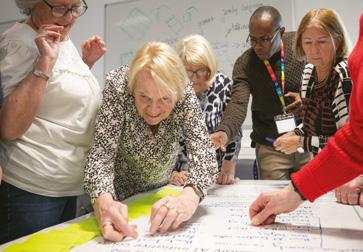
Dr Emma Clarke from DCU says "The goal of the 'Age-Friendly AI' initiative is to gather the experiences and ideas of older adults so that the people who make decisions about AI (like the government, researchers and technology companies) can understand what's important to older people. This will help ensure that future AI is designed in a way that benefits everyone.".
This new project builds on previous work that has already shown a real interest among older people in learning about AI. Pilot workshops held with groups like U3A (part of Age Action) showed that many older people are keen to understand more.
This initiative is funded by Research Ireland, and brings together experts from universities, technology companies, government, and important organisations that support older people, such as Age Action, Age Friendly Ireland, ALONE, the National Disability Authority and the Centre for Smart Ageing in County Kerry.
The 'Age-Friendly AI' initiative will be developing special AI training that is relevant to the needs of older adults around the country. To register, email AgeFriendlyAI@adaptcentre.ie or call or text 087 2815 224.
Keep an eye out for opportunities to get involved in "AgeFriendly AI." It's a great chance to learn about this important technology and make sure your voice helps shape its future in Ireland. Visit



Return flights with 20kg allowance from Dublin or Shannon
All transfers
7 nights at the 4 star plus Hotel Bristol with breakfast and evening meal in a seaview room
Excursion to Pompeii and Vesuvius
Tour of the Amalfi Coast by coach
Guided Sorrento walkabout
Topflight’s Resort Manager Service
Holiday Bonded and Protected
dates available from May - October

29 JUN €1874
27 JUL €1824


Return flights with 20kg baggage allowance from
All transfers
7 nights at the 4 star Hotel Relias Porta Del Sud with breakfast and evening meal
Excursion to Ostuni and Alberobello
Excursion to Matera and Altamura
Excursion to Lecce and Otranto
Excursion to Trani and Polignano
Topflight’s Overseas Concierge Service
Holiday Bonded and Protected



TOUR HIGHLIGHTS
Return flights with 20kg baggage allowance from Dublin
All transfers
7 nights at the Grand Hotel Croce di Malta with breakfast
Day trip to Lucca and Pisa
Day trip to Siena and San Gimignano
A tour of Florence
Farewell pizza meal
Topflight’s Overseas Concierge Service
Holiday Bonded and Protected

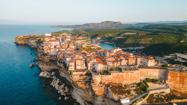

Return flights with 20kg baggage allowance from Dublin All transfers
7 nights at the 4 star AHR Baja Hotel & Spa with breakfast and evening meal
Excursion to La Maddalena
Excursion to Costa Smeralda with Wine Tasting
Excursion to Corsica
Topflight’s Overseas Concierge Service
Holiday Bonded and Protected

It is ten years since Hannah O’Connor had multiple strokes and was resuscitated back from the dead. Here she recounts the life-changing event, the ups and downs of her journey back to health and her everlasting gratitude to the multidisciplinary medial teams who treated her and how she is now embracing a new phase in her life.


F.A.S.T - a life saving acronym
Ten years ago this month I had multiple strokes and was resuscitated back from the dead. Thanks to a fast-acting husband, ambulance service and the expertise in Beaumont Hospital I got another chance at life and am still happy to be alive.
The F.A.S.T. (Face, Arms, Speech, Time) campaign had gotten through to both hubby and me and it was apparent to Himself that my face had collapsed, I’d lost control of my limbs especially my hands and could only crawl up the stairs to wail at him that I couldn’t speak and he took no time at all in calling for the ambulance.
I was 52 and we’d only been married a few years. The first responders told him to ask me to raise my arms above my head (which he interpreted as telling me to Stick ‘em up with his forefinger and upraised thumb pointed at me) but he had to help me lift my arms up while we were waiting the few minutes it took the crew to get to the house. Thank God there’s an ambulance crew stationed in our town and as we sped into the hospital the paramedics engaged me with easy questions while they did all the vital first tests necessary for the emergency department. To be honest I don’t remember dying because the
hospital’s intervention was immediate and life-saving. And therein remains the easy to relate bit of the aftermath of a stroke.
I stayed in the hospital until I asked to be discharged because I was eager to get home to a familiar environment. This isn’t always the optimal choice in aftercare but it was the reality for Himself and me. There were still issues with my walking and fine-motor skills and there was the whole raft of emotional adjustments and physical adjustments within the household and our lifestyle that had to be addressed.
My husband, the stalwart, got into carer mode and took over the transportation to and from various outpatient departments of the HSE’s ancillary disciplines relating to rehabilitation from a stroke. Although I had technically passed a test to ascertain if I was fit to drive a car, I had completely lost my confidence and was hesitant in a myriad of ways that impacted more aspects of our life together than I acknowledged within the first five years. They say the worst thing is when you don’t know that you don’t know. Tiny things like he was told to hold my hand when we were crossing the road and my strops when I’d snap my hand away in mortification. There was worse to come.
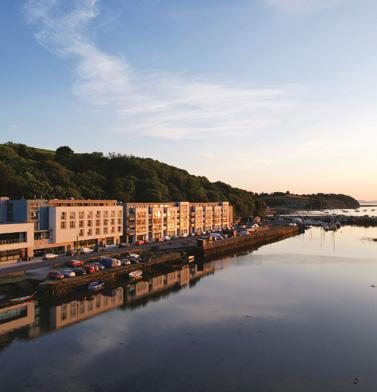



This summer, soak up the magic of West Cork with an escape to The Maritime Hotel, perfectly perched along the spectacular Wild Atlantic Way. From scenic strolls and sea air to local artisan delights and unforgettable sunsets – Bantry offers everything you need for a rejuvenating staycation.
✓ Prime location on the Wild Atlantic Way
✓ Complimentary Wi-Fi & Parking
✓ Nightly Entertainment for Residents
✓ Summer Special Offers Just for You
✓ Full Access to Leisure Centre – 19m Pool, Sauna & Gym
Your Summer Starts Here – Only in Bantry.









The hospital’s intervention was immediate and life-saving
That Safe Cross Code thing was just a symptom of the gradual acknowledgement that for a while he was effectively my primary carer rather than ‘just’ my life partner that in our case sapped quite a bit of the patience and co-operation that a couple can sometimes take for granted. Sometimes he could wearily tell me to do something in a new way and at others I perceived that I was being spoken to like a dog. (He does actually come from a family that trains gun-dogs so the notion, though a bit off the wall, wasn’t entirely born in a vacuum.) That’s about as far as I can venture into that can of worms.
Finding a new way to reach the desired goal became a much practised technique during the first five years of my recovery. The hospital had given me the wherewithal to live a life in which to find fulfilment and new skills, some of which involved going to see a nutritionist in Baggot Street Hospital who was essentially telling me to eat from the food pyramid as much as possible. While I couldn’t adequately explain to this professional that she was practically telling her granny how to suck eggs it sometimes became dispiriting to understand that I would need the intervention of the psychiatric services to combat depression. The nutritionist’s time wasn’t wasted for up to to that point I had been the primary ‘housewife’ in the tradition of my mother who learned cookery from her mother and so on; it turned out through the probing of the woman in Baggot Street, that the husband had also learned cookery from his mother and we gradually adjusted to a whole new set of menus that evolved through trial and error into a routine that we could cope with. While we’ll never compete with Ballymaloe for all things fresh and fabulous, we have a more than average comprehension of the regulation three square meals a day. To mitigate the fractious coming to terms with who does what in this house bilateral talks, we attended couples’ counselling to uncover the underlying obstacles that my new-found intransigence was triggering. There were times when I was behaving like an unspeakable shrew. Deep down I knew there were vast swathes of my personality that I had been ignoring for decades.
Perhaps the oddest part was that while I had no problem following the hospital’s advice to commit to brain-boosting re-wiring of neural pathways by using the Duolingo app every day, there was an unforeseen issue that nearly blew my mind all over again. At one particular support group I joined about six months after the stroke there was a lot of self-examination
in terms of behaviours we didn’t want to continue into independent adult life and I suddenly started questioning, am I straight or am I gay? Have I ever known? Am I definitively heterosexual?
When I gormlessly ran that question past my husband as if—in all my blithely self-centred I must fix me earnestness —that question would have no impact on him, the notion made him cross. And also made him cross his fingers. We’d only been married about five or six years before the stroke after all.
It took me a good few years to be able to use a mobile phone, (as in the year before last) something my lifelong friends have said they simply cannot live without as it’s the entire structure of their lives in a hand-held computer. I was given the opportunity to engage with structured learning in a horticultural school which gave me the chance to retrain motor skills and communication skills in a class setting.
This coincided with a two-year period. By which I mean I was bleeding ‘down there’ for two solid years. I wasn’t properly menstruating because I could tell the difference when the monthlies took over like clockwork from the perpetual flow. This got missed by the stroke doctors because I reported it to the wrong out-patients’ clinic. By the time we all got caught up I had been six months’ post-menopausal and the gynaecologist could only tell me that because of the stroke medicine I couldn’t handle HRT and that the postmenopausal status meant that I would be about six months behind the HRT being useful.

Stroke support group



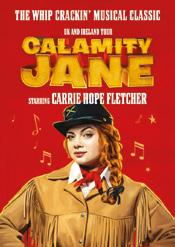



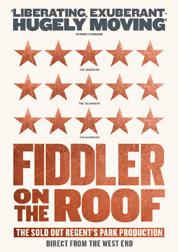

Meanwhile there were sporadic episodes of problems with my vision. I sometimes experienced the same ‘heat haze’–to my eyes it looked as though the air in front of me was rising as in a heat haze– which had originally happened only while I was having the initial stroke. At other times tiny black specks floated downwards from top to bottom and sideways when I opened my eyes. I started getting migraine-type headaches that I could only describe as my brain ‘clenching’, by this stage the husband was in need of respite care himself. As a result I had to withdraw from the first re-education course. Eventually I accepted that I had been sublimating the need for a 12-step programme to tackle the smoking addiction that contributed to the stroke in the first place. The number to contact should you need thisparticular option is 1800-201203 and I can personally attest to its efficacy.
Since then life has taken a sweetly unexpectedly turn, the husband’s daughter has had a daughter and I am now one of three besotted grandmothers the four-year-old enjoys: me, her mom’s mother and her dad’s mother. Her grand-dads and greatgrandparents’ lives are as enriched by her vitality as mine and I am now looking forward to spending the rest of my 60s staving off my dotage for as long as possible. I am finally improving in achieving the desired amount of exercise the doctors recommend.
My 60s stretch before me and with profound gratitude to Professor David Williams and the multidisciplinary teams of the RCSI at Beaumont Hospital I know I have many more milestones to celebrate.

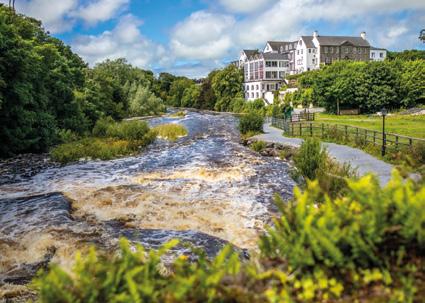

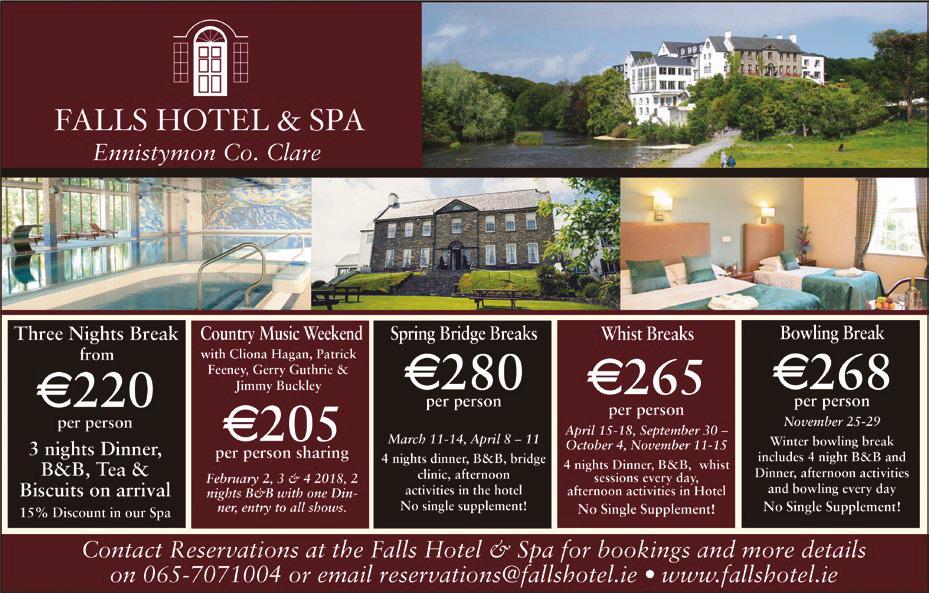

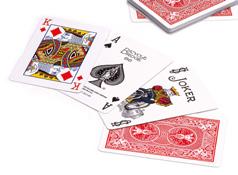
Michael O’Loughlin has enjoyed teaching bridge for over 40 years; his book, “Bridge: Basic Card Play” is available from the Contract Bridge Association of Ireland (01 4929666), price: €10.
Contract 1NT. Opening lead: ♥ 3.
Calling all Novices – Intermediates!
by Michael O’Loughlin
Play like a tortoise, not like a hare
tortoise,
13 tricks to be played. It is not the 60-yard dash, rather the 10,000 metres. As declarer you should be most reluctant to play out your top tricks early. Play like a tortoise, being happy to give up early tricks, prepared to polish up towards the end; not like a hare, who loves to play out his aces and kings as soon as possible. We know the fable, apply it at the table.
13 tricks to be played It is not the 60-yard dash, rather the 10,000 metres. As declarer you should be most reluctant to play out your top tricks early. Play like a tortoise, being happy to give up early tricks, prepared to polish up towards the end; not like a hare, who loves to play out his aces and kings as soon as possible. We know the fable, apply it at the table.
Contract 1NT. Opening lead: ♥3. On our introductory deal, trick one goes:♥3, ♥2, ♥J, ♥K. As declarer you count your six top tricks: These are tricks that you can win off the top, without losing the lead: ♠AK, ♥AK, ♣AK.
On our introductory deal, trick one goes: ♥ 3, ♥ 2, ♥ J, ♥ K. As declarer you your six top tricks: These are tricks that you can win off the top, without the lead: ♠ AK, ♥ AK, ♣ AK. The hare would immediately cash those tricks to a flying start. However, that would be the end of the road, for when necessarily loses the lead at trick number seven, by then the hare would set up the seven remaining tricks for his opponents. 1NT – 1 would be result for the hare declarer. One down.
The tortoise declarer would reason that those six top tricks would not but that his first job is to set up the extra trick he needs to fulfil his contract: from the suit in which he has no top trick but does have a very useful sequence. Diamonds.
In our main deal, dummy is tabled and declarer counts six top tricks: ♥AK, uAK, ♣AK. Three tricks short of his target. The hare would play them out.
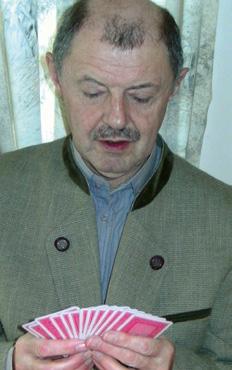
At trick two declarer leads the ♦ 4 to the ♦ 3, ♦ 10 and ♦ Q. He wins the return with the ♥ A and leads the ♦ 8 to the ♦ A. He wins the say ♣ 4 (to the ♣ K and leads the ♦ 2 to ♦ 9 and the ♦ K. West cashes the ♥ Q and ♥ declarer wins the♣ 5 with the ♣ A and cashes the promoted ♦ J, his vital trick. The ♠ A and ♠ K make up declarer’s tally of seven tricks. 1NT made.
As the tortoise, you can see three risk-free extra tricks in the spade suit because of the lovely spade sequence: ♠KQJ10. Trick one goes: u4, u2, uJ, uK. Now all declarer has to do is drive out the opponent’s ♠A. Once that is achieved, declarer has his required three extra tricks. Declarer gives one trick to get three back in return. 3NT made.
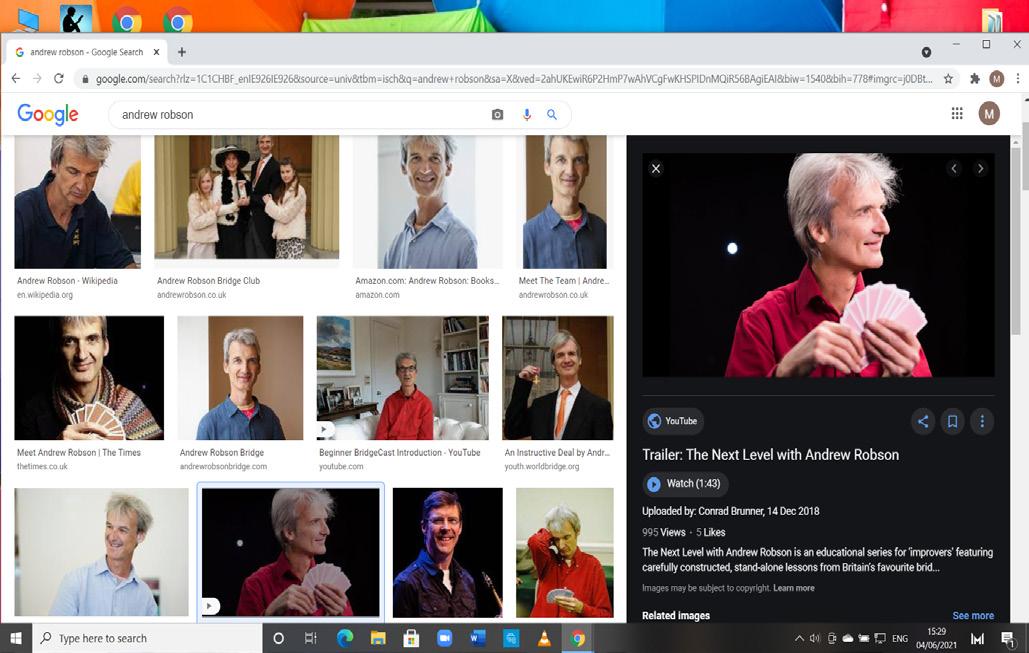
Whether you’re a beginner or an experienced club player, join the BridgeCast community and access the expertise and insight of a world-renowned player and teacher to improve your bridge game. BridgeCast is a monthly video subscription service offering Andrew's new Bridge videos either daily or three times a week.
In our main deal, dummy is tabled and declarer counts six top tricks:
https://www.andrewrobson.co.uk/andrew/tips_for_intermediates
In our main deal, dummy is tabled and declarer counts six top tricks:
AK. Three tricks short of his target. The hare would play them out.
♣ AK. Three tricks short of his target. The hare would play them out.
As the tortoise, you can see three risk-free extra tricks in the spade suit because of the lovely spade sequence: ♠ KQJ10. Trick one goes: ♦ 4, ♦
As the tortoise, you can see three risk-free extra tricks in the spade suit because of the lovely spade sequence: ♠ KQJ10. Trick one goes: ♦ 4, ♦
Now all declarer has to do is drive out the opponent’s ♠ A. Once that is achieved, declarer has his required three extra tricks. Declarer gives one get three back in return. 3NT made.
Now all declarer has to do is drive out the opponent’s ♠ A. Once that is achieved, declarer has his required three extra tricks. Declarer gives one get three back in return. 3NT made.
https://www.andrewrobson.co.uk/ andrew/tips_for_intermediates/
More tips for Intermediate players can be found at:
More tips for Intermediate players can be found at: https://www.andrewrobson.co.uk/andrew/tips_for_intermediates
https://www.andrewrobson.co.uk/andrew/tips_for_intermediates
Also: Mastering Bridge with Andrew Robson
Also: Mastering Bridge with Andrew Robson
If you wish to receive three times per week free bridge emails which include lessons, videos & quizzes, please email me: michaelolough@yahoo.com
Whether you’re a beginner or an experienced club player, join the BridgeCast community and access the expertise and insight of a world-renowned player to improve your bridge game.
Whether you’re a beginner or an experienced club player, join the BridgeCast community and access the expertise and insight of a world-renowned player to improve your bridge game.
This is a simple formula and a quick way to determine the
side with the majority of the High Card Points divides that number
MiniBridge is a simplified form of the complex card game Contract Bridge. MiniBridge is designed to introduce newcomers to playing techniques without the burden of learning a detailed bidding system.
A player needs some way to judge how good her hand is. The time-honoured way is to give a value of 4 to an Ace, 3 to a King, 2 to a Queen and 1 to a Jack. These are called High Card Points (HCPs for short) because one is allocating a Point value to one’s High Cards. These values make sense as an Ace is better than a King, a King better than a Queen and a Queen better than a Jack. If you are familiar with the card game “Beggar my Neighbour” in which 4 cards are played on an Ace, 3 on a King, 2 on a Queen and 1 on a Jack, this will help you remember.
In MiniBridge, starting with the Dealer, players, in turn, announce their number of high-card points. MiniBridge like Contract Bridge is a partnership game. North and South sitting opposite each other form one partnership while East and West sitting opposite each other form the opposing partnership. The partnership with more HCPs then plays the hand. If both partnerships have the same number of high card points (i.e., 20 each), the hand is redealt.
From within the partnership with the more HCPs, the particular player with more high-card points becomes the Declarer. If both partners have the same number of high-card points then the player who announced her points first becomes Declarer. Declarer has a certain target: to make 1 trick for every 3 HCPs her partnership holds, e.g., 21 – 23 HCPs requires 7 Tricks. Declarer has a certain target: to make 1 trick for every 3 HCPs her partnership holds, i.e.,
fractions: the result is the number of tricks that Declarer has to win. (Note: Later more exact and exacting method will be described – this simpler method is used people playing the cards – with a realistic target – as quickly as possible).
An Example:
ªA 3 2
©K63 ¨A842 §Q105 ªQ104
J975 ©J974
QJ10
A87
Q108
973
962
K86
A52
Let’s suppose that East is the Dealer. Each player, beginning with her number of points:
K65 §KJ43
East: “3”; South: “14”; West: “10”; North: “13”
1. The player on Declarer’s left leads the first card. Generally, she will lead a low card from the suit in which she has the most cards because the suit in which she has the most cards is potentially her best source of tricks because her opponents will tend to have fewer cards in that suit. West decides to lead the ♥4 because that is the suit she has the most of. West decides to lead a low ♥ because she needs some help from her partner in order to win tricks in the ♥ suit. She starts by leading the card face down.
East: “3”; South: “14”; West: “10”; North: “13”
Note that 3 + 14 + 10 + 13 has to add up to 40, the total number Since N/S have more points (27) they become the Declaring side. more points (14) than North, South becomes Declarer. The Declaring in total: therefore, South has to try to win 27 ÷ 3 = 9 tricks.
Let’s suppose that East is the Dealer. Each player, beginning with the Dealer, announces her number of points:
2. Then, her partner gives her the nod to confirm that she is the correct person to lead.
Note that 3 + 14 + 10 + 13 has to add up to 40, the total number of points in the Since N/S have more points (27) they become the Declaring side. And since South more points (14) than North, South becomes Declarer. The Declaring side have in total: therefore, South has to try to win 27 ÷ 3 = 9 tricks.

1. The player on Declarer’s left leads the first card. Generally, she will lead a low card from the suit in which she has the suit in which she has the most cards is potentially her best source her opponents will tend to have fewer cards in that suit. West decides because that is the suit she has the most of. West decides to lead needs some help from her partner in order to win tricks in the © leading the card face down.
https://www.andrewrobson.co.uk/andrew/tips_for_intermediates
3. Now, West turns the lead card face up and the second player, i.e., Declarer’s partner, becomes what’s called the Dummy. Dummy places all her 13 cards face up on the table. Dummy’s cards should be arranged in suits, facing Declarer. Dummy arranges her cards from the highest to the lowest, in suits, in columns, facing towards her partner, the Declarer, thus:
1. The player on Declarer’s left leads the first card. Generally, she will lead a low card from the suit in which she has the most cards the suit in which she has the most cards is potentially her best source of tricks her opponents will tend to have fewer cards in that suit. West decides to lead because that is the suit she has the most of. West decides to lead a low © because needs some help from her partner in order to win tricks in the © suit. She starts leading the card face down.
2. Then, her partner gives her the nod to confirm that she is the correct
3. Now, West turns the lead card face up and the second player, i.e., becomes what’s called the Dummy. Dummy places all her 13 cards Dummy’s cards should be arranged in suits, facing Declarer. Dummy from the highest to the lowest, in suits, in columns, facing towards Declarer, thus:
2. Then, her partner gives her the nod to confirm that she is the correct person
3. Now, West turns the lead card face up and the second player, i.e., Declarer’s becomes what’s called the Dummy. Dummy places all her 13 cards face up on Dummy’s cards should be arranged in suits, facing Declarer. Dummy arranges from the highest to the lowest, in suits, in columns, facing towards her partner Declarer, thus:
4. For the duration of this deal Declarer makes the decision as to which card to play each time from Dummy’s hand, as well as which card to play from her own hand.

If you wish to receive three times per week free bridge emails which include lessons, videos & quizzes, please email me:
Dummy does not take any part in the play of the cards. It is Declarer’s job, on this deal, to marshal her combined resources i.e., the cards in her own hand plus those in Dummy. Declarer has declared that she is going to win 9 tricks. To be continued.
• See and speak to your partner and opponents - just like face-
• Connect with everyone at the table. Bid and play and go over the hands afterwards to learn from the post mortem. If you wish to try RealBridge for free, just email me:
just like face-to-face bridge.
• Connect with everyone at the table. Bid and play and go over the
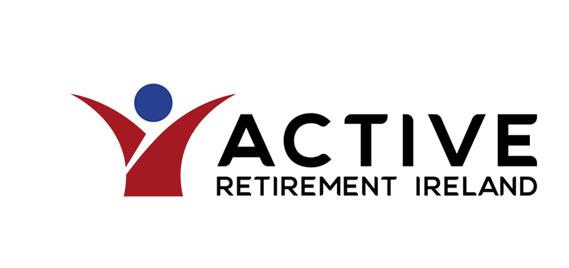
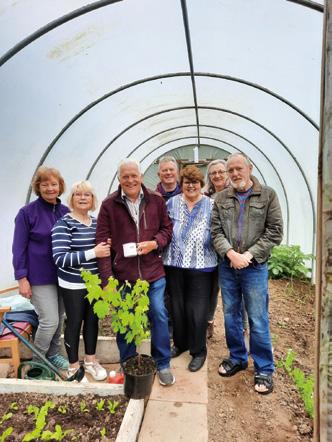



John Terence Reese (28 August 1913 – 29 January 1996) was a British bridge player and writer, regarded as one of the finest of all time in both fields. He was born in Epsom, Surrey, England to middle-class parents, and was educated at Bradfield College and New College, Oxford, where he studied classics and attained a double first, graduating in 1935.
Within a year of graduating Reese started working for Hubert Phillips's bridge magazine and co-wrote his first book with him in 1937. Phillips acknowledges that although the book is published jointly under their names, "Terence is the real author of the book", receiving only assistance in planning contents and editing from Phillips. From that point on, Reese's profession was that of a champion contract bridge player and prolific writer on the game.
Career as a bridge player
As a bridge player, Reese won every honour in the game. In his later years he preferred backgammon as an alternative. In old age, Reese played little competitive bridge, owing in part to increasing deafness. However, his career as a bridge writer continued unabated.
Career as a bridge author
Reese was one of the most influential bridge writers, with a large output (over ninety titles), including several books which remain in print as classics of bridge play.
Reese contributed to the Acol bidding system originally developed by Maurice Harrison-Gray, Jack Marx and S.J.("Skid") Simon in the late 1920s and early 1930s and co-authored the first textbook on it with Ben Cohen in 1938. Named after the Acol Bridge Club in North London (located on Acol Road at the time), it became the prevailing bidding system in Britain, Ireland and some other former British colonies. The book and its subsequent editions in 1939, 1946 and 1949 gave unity to what was otherwise a rather free-wheeling bidding system.
The great success of Reese on Play (an outstanding guide to dummy play and defence) was followed by an even more ambitious work. The Expert Game was the book which really made his name. As the title suggests, it dealt with card play at the highest level, including some ideas that were novel at the time, for instance, inferences from events that did not occur,
and the principle of restricted choice.
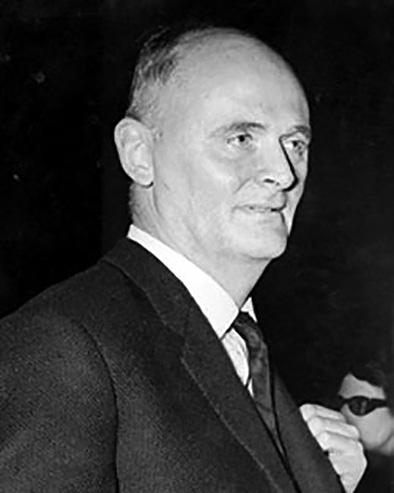
Terence Reese
Reese, for instance, a player who overcalls but does not lead his suit is likely to lack one or two key honours; this concept is often called 'the dog that did not bark in the night' (after Sherlock Holmes in Arthur Conan Doyle's "The Adventure of Silver Blaze"). Another form of logic can be seen in 'If it must be so, assume it is so'. His examples of counting (and other ways of drawing inferences from the bidding and play) spread such ideas from a coterie of masters in London (or New York) to a much wider group of nascent experts. For at least twenty years after this book was published, one could be sure that virtually every top-class player had studied it minutely.
Reese also had the distinction of creating several new genres of bridge book. The most significant was the 'Over my shoulder' genre, where the reader is taken through the master's thinking as the bidding and play proceeds through the hand. Play Bridge with Reese was the model for several such works. Later, Reese made use of the growing library of hands from international competitions to create interesting quiz-type books. Famous Hands from Famous Matches was the first of these, followed by Famous Bidding Decisions and Famous Play Decisions, all written with David Bird. In his career as a writer, Reese had a number of coauthors, mostly highly competent players and writers, yet all his books were in his inimitable style. Another of his ideas was to raid the stock of hands in bridge magazine bidding competitions for interesting and instructive hands. What Would You Bid? was the result.
The Buenos Aires affair
In the 1965 Buenos Aires Bermuda Bowl, B. Jay Becker noticed Reese and his partner, Boris Schapiro, holding their cards in what he regarded as unusual ways during bidding The claim that was made was that the number of fingers showing at the back of the cards revealed to partner the number of cards held in the heart suit.
A number of players and observers, all watched Reese and Schapiro and were convinced that they were signalling illegally. It was also confirmed that Reese was not using such signals while playing with his other partner, Jeremy Flint. At a hearing held at the tournament site in Buenos Aires, the World Bridge Federation (WBF) judged Reese and Schapiro guilty of cheating, and announced that due to "certain irregularities", the British team was forfeiting the matches they had already won against North America and Argentina, and that Reese and Shapiro would not be playing in the remaining matches.
The British Bridge League (BBL) subsequently convened their own enquiry, The BBL Inquiry did not merely find that there was inconclusive evidence that the players had benefitted from the signals in their bidding or play but rather 'We find that Messrs. Reese and Schapiro were not guilty of cheating at the Tournament in question'.
The bidding and play of the suspect hands do not provide convincing evidence of cheating.
In May 2005, the English journalist David Rex-Taylor, a bridge player and publisher, claimed that Reese had made a confession to him forty years earlier, one that was not to be revealed until 2005 and after he and Schapiro were dead. The purported confession claimed that Reese and Schapiro were indeed signalling, but only to show that such signalling was possible (and so were not actually paying attention to each other's signals), purportedly as part of a book on cheating. Reese was in the process of writing a book arguing how easy it is to cheat at bridge. His intended book was abandoned after the scandal broke. This explanation could conceivably reconcile the use of finger signals with the absence of evidence based upon the bidding and play.
Bibliography: The Bridge Immortals by Victor Mollo



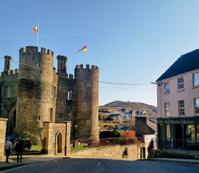







Award-Winning Exhibition presented by the Irish Architecture Foundation goes to Scotland


The Irish Architecture Foundation (IAF) has announced it is bringing its award-winning exhibition, The Reason of Towns, to Scotland this June. The Reason of Towns, an exhibition with Valerie Mulvin, will tour to Architecture Fringe, the Scottish festival of design, architecture and built environment, launching on June 6th and running until June 22nd.
Based in Dublin, but with a national remit and an international network, the IAF is Ireland’s independent organisation that fosters and advances the culture and communication of architecture. This is a first for the organisation to bring an exhibition that has toured Ireland to an international audience. This international stop on The Reason of Towns tour offers an opportunity for new learning and knowledge exchange.
It will be a locus of discussion about shared or distinct urban traditions, anticipating new potentials of reciprocal exchange through architecture between Scotland and Ireland. Responding directly to the theme of Architecture Fringe in 2025, Reciprocity, The Reason of Towns reveals the reciprocity between people and the places they build, and how thereafter places build them. Addressing issues of climate, heritage, housing, vacancy, and the transformative potential of professional and community practice, the exhibition reminds that all such things are connected and are best considered together.
The exhibition features models, drawings, texts, and a series of slides, notes, personal memorabilia, building fragments, and three specially commissioned films. “The Space Is the Thing” is a spatial-portrait of Clones, Youghal, Dungarvan and Templemore, describing their ‘ordinary-spectacular’ town forms. “Of Pride and Place” documents ten optimistic stories of action and change by architects working in towns across Ireland. Finally, the third film is an interview with Valerie Mulvin by broadcaster Vincent Woods, reflecting on her work and the subject of the exhibition.
The Reason of Towns is currently on display at Uillinn: West Cork Arts Centre, Skibbereen until 21 May. This is its final stop in Ireland before opening at The Briggait, Glasgow, as part of Architecture Fringe on 6 June, where it will run until 22 June. For more information on the IAF visit: www.irisharchitecturefoundation.ie
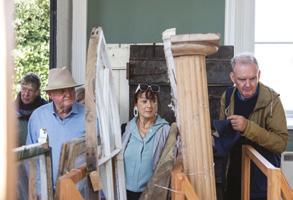
This exhibition won an Architectural Association of Ireland Award in April 2025, one of six projects selected in this category, a first for the IAF.
Exhibition Team
Architect: Valerie Mulvin, McCullough Mulvin Architects
Curator: Emmett Scanlon, Irish Architecture Foundation
Producer: Felix Hunter Green, Irish Architecture Foundation
Exhibition Design: Laurence Lord and Jeffrey Bolhuis, AP+E
Visual Identity and Design: Eamonn Hall, ART DEPT
Exhibition Build and Installation: Sara Murphy and Frank Prendergast, Space Forms
Film: “The Space Is the Thing” produced by Martin Danneels and Geoff Power, Red Pepper Productions
Film: “Of Pride and Place” produced by Shane Hogan, Areaman
Film: Interview with Valerie Mulvin and Vincent Woods produced by Shane Hogan, Areaman
About the Irish Architecture Foundation
With a focus on public audiences and established in 2005, the Irish Architecture Foundation is Ireland’s independent organisation that fosters and advances the culture and communication of architecture. Based in Dublin, but with a national remit and an international network, the IAF is principally funded by the Arts Council/ an Chomhairle Ealaíon.
We are core funded by the Department of Housing, Local Government and Heritage, the Office of Public Works, and Dublin City Council. Across an increasingly broad range of events, programmes, and exhibitions, the IAF partners with individuals, organisations, government agencies, education institutions and civil society groups to ensure that our work builds civic pride and action, and outcomes are impactful and transformative.
The lives we save start with the gifts you leave

Médecins Sans Frontières/ Doctors Without Borders (MSF) is an international humanitarian organisation providing medical care in more than 70 countries. From our paediatric nurses to our logisticians, we are experts at working in fast-moving and highlyinsecure environments, like Ukraine, Yemen and Gaza.
1 in 6 MSF projects is funded by gifts in wills
Gifts left to us in wills play a vital role in making sure we have the funds we need to deliver emergency medical care to wherever in the world it is needed.
By leaving a gift in your will to MSF, you can ensure that our financial independence – which enables us to provide medical aid where and when it is needed most –will continue.



To celebrate our new brand - Select Hotels & Experiences, we want to share the love, wonderful hotels, great locations, luxury coach tours and gift vouchers.
Be in with a chance to win a luxury two-night stay for two at the stunning Clifden Station House Hotel in Galway — the perfect way to relax, recharge, and experience one of Ireland’s best-loved destinations.
Set around the old Clifden railway station, this historic property offers relaxed comfort, great food and popular bar. The perfect base from which to explore Connemara scenery.
Your Prize Includes:
• A 2-night stay for two at the Clifden Station House Hotel
• Full Irish breakfast each morning
• Dinner on one evening
To be in with a chance to win – please go to www.selectexperiences.ie/senior-times-competition.html

Formerly known as Select Hotels of Ireland, our new brand – Select Hotels & Experiences – reflects everything this trusted Irish brand now offers:
• Handpicked hotel breaks across Ireland
• All-inclusive group tours and coach holidays
• Gift vouchers for memorable getaways
• Warm Irish hospitality, with even more ways to stay, gift, gather and explore
Same team. Same hotels. Even more to love.


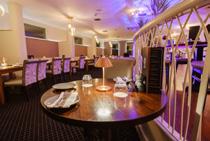

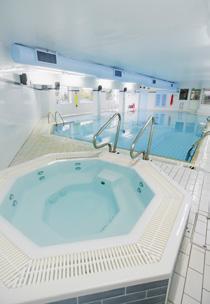
George Keegan on what’s happening in travel, the arts, food and entertainment along the Western





The North Mayo Heritage Centra is situated on an estate 3km south of Crossmolina and is dedicated to promoting the rich heritage of the area and has a Family History Unit providing a genealogy service for people from around the world. There is also a small museum containing artifacts from the North Mayo region dating from the estate’s agricultural period, plus an exhibition area.
The Centre is located on the Enniscoe Estate dating from ancient times. Today there is a large country house with beautiful gardens. From the Centre visitors can enjoy taking looped walks through the woods leading to Lough Conn. These woods have many species of birds and wildlife and if lucky enough you might get a glimpse of the pair of Great Spotted Woodpeckers which have taken up residence here.
It is just a short distance from the main house to the walled garden. Sadly, during the 1950’s the gardens fell into disrepair. However, In June 1996 the owner Susan Kellett with support of the Great Gardens of Ireland Restoration Programme worked to restore them to their former glory.
The walled garden is spread over two acres with a vegetable area leased from
the estate. The project is supported by the Department of Rural & Country Development and Pobal through the Country Services Programme and has charity status. This year marks 30 years of being certified as organic and a garden party is planned during the summer to celebrate the anniversary. Around the garden are five large poly tunnels and recently another one has been acquired specifically for seed saving. The garden co-operates with Irish Seed Savers who select from the various varieties that grow here.
Within the garden are 28 heritage apple trees, six of them original trees planted when the garden was in full use by the family many years ago. At its height the

estate was set on more than 6,000 acres of land and during this period there were seven gardeners employed to look after the walled garden.
This summer scheduled tours are being introduced for individuals and small groups and opening hours will be 12 noon to 3.30pm Tues-Thurs, but be sure to check before arriving. At weekends produce is available to purchase in the Centre’s reception area. A catalogue is available for visitors to order from a long list of open pollinated seed varieties of vegetables, herbs and flowers. A new café opened up last year beside the Centre and its hoped it will re-open for summer 2025.
I was really impressed with this majestic and historic house which has been occupied by the same family for 13 generations. Around 1740 The back of the current building was originally built as a farm house. A new part was added between 1796 and 1798. So, while it appears today to be a classic Irish Georgian country house, it is in fact one house constructed on to another much older one. The two-storey house has a five bay entrance front and central window flanked by sidelights above a pedimented tripartite doorway with doric columns and pilasters. In the interior the stairs leading up to the oval landing were built on the exterior wall of the old house and have a balustrade of plain slender uprights.
The drawing room has the original silk Adam design wallpaper from 1850 which down the years has faded from pale blue to mushroom pink. The original library (in the older section of the house) was extended and is used today as the dining room.

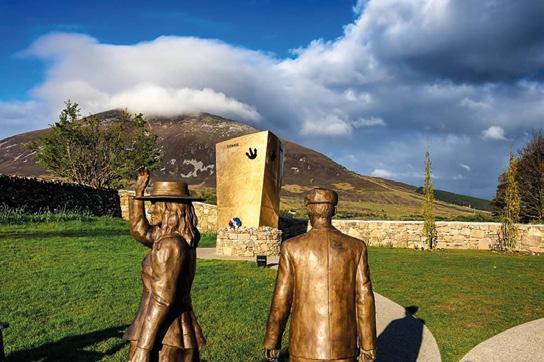
Susan Kellett took over the ownership and management of both the house and estate 30 years ago. Forty years previously her father inherited the property from his cousin Mervyn Pratt. Susan immediately set about restoring her home to its former glory and In 1984 she decided to open it up as a Guest House. It has six bedrooms with the three large rooms at the front containing canopy or four posters beds, all with stunning views of the parkland and lake. Today Susan, her son Dj, his wife Colette and their daughter reside in the house.
Many famous names have passed through their doors since then but Dj points out the visit for lunch in 2023 by President Joe Biden was quite spectacular. The family have put together an album of photographs to commemorate that day. An interesting inclusion are the personal letters they received from the President on his return to the USA. The album is now sitting proudly on a mantlepiece in one of the drawing rooms, for guests to view. Enniscoe House is certainly situated in an idyllic setting and perfect for a week-end getaway break or a longer stay. There are self-catering options available as well in the restored courtyard buildings.
memorial
A short drive from Enniscoe is the Titanic Memorial and garden takes pride of place in the tiny village of Lahardane. This village, at the foot of Nephin mountain, has its own story to tell about the great ship’s tragic sinking. The Addergoole Titanic Society erected a memorial as well as life size sculptures of people walking with suitcases, within the delightful small park. It was officially opened by Taoiseach Enda Kenny T.D in April 2012, to remember the 14 men and women who boarded Titanic at what was then called Queenstown in Cork. They had travelled the long journey from Mayo to set off for America on the liner with high hopes of a better life. Eleven of them perished in the North Atlantic.
Lahardane is now known as Ireland’s Titanic village. The Parish church of St. Patrick contains beautiful Titanic & Emigration themed stained glass windows and every year on the 15th April at exactly 2.20am (when Titanic sank), the Timoney church yard bell tolls in memory of those who died.
During the months of May and June Galway, City of the Tribes and indeed the surrounding areas come alive with festivals and events giving tourists and locals plenty of choice on the long summer evenings.
For 2025 the Tiny Traders Village is back and will take place at the city’s Spanish Arch. It will run for three days a week until September. Stalls will be brimming with handicrafts, jewellery, artisan foods and much more.
Other events during the period include:
The Galway International Theatre Festival (2nd-10th May) Over 9 days it will present a mix of political dramas to surreal comedies. The organisers point out that their goal is to bring a fresh and lively programme of performances to
evoking a raw energy and adventurous spirit to their audiences.
Early Music Festival: Now celebrating its 29th year and scheduled for early June, it highlights old world music and arts with concerts, workshops and street performances.
4th Folk Festival (4th-8th June)
Showcasing the very best of folk, roots and traditional music. Main venues are the Town Hall and Munroe’s Tavern but there will also be gigs taking place across the city.
This very popular trail was set up back in 1993 by a group of garden enthusiasts who decided to open their gardens to visitors during the summer months and so the West Cork Garden Trail was established. The idea took on immediately and before long several more garden owners joined up. By 1998 the number along the trail had risen to seventeen. It has since become the longest of its kind in the country and now represents a total of 20 gardens. These consist of small or large especially dedicated to other garden enthusiasts, or places suitable for a family day out. They are described as a mix of formal, informal, traditional or just quirky.
Because of the length of the trail it was decided to divide it into 5 geographical areas to make it easy for people to navigate and when planning a trip.
As there are too many gardens involved to describe each individually, best to check out the Garden Trail website so you don’t miss out on any of them.
Useful websites:
www.northmayogenealogy.com www.enniscoe.com . www.addergoole-titanic.com www.galwaytourism.ie/galway-events www.westcorkgardentrail.com www.northmayo.ie





This year we remembered the closing of Monto 100 years ago. At the time Monto was said to have been Europe's largest red-light district. It covered an area bounded by todays Talbot Street, Amiens Street, Gardiner Street, Seán McDermott Street, then Gloucester Street and Monto was short for Montgomery Street, now Foley Street which runs parallel to the lower end of Talbot Street toward Amiens Street Railway Station, now Connolly. It was, they say, where Queen Victoria's son Bertie lost his virginity and went on to become King Edward VII. While most brothels were low-rent poor and run down there were some posh, more like gentlemen’s clubs.
Monto in its heyday from the 1850s to the 1920s was the workplace of about 1,600 sex workers, unfortunate and poor trying to earn a living. Many single mothers with children and were desperate enough to avoid ending up institutionalised and effectively imprisoned in despairing Magdalene Laundries and their children taken and sold and disposed by the nuns. Indeed ominously three years before the closing of Monto the 'Sisters of Charity' took over the Magdalene Asylum on Mecklinburgh Street, so becoming neighbours to the brothels and these unfortunate girls and children.
Before Monto there was an older 19th century red light district in Dublin's southside in what was then a run-down dilapidated Grafton Street where an estimated 1,500 prostitutes worked. In 1870 police logged 3,255 arrests. For comparison that same year 2,183 arrests were made in London. As Grafton Street began becoming wealthier with tourism, new retail properties and the arrival of major stores like Brown Thomas, Switzer's and Weirs jewellers. prostitution was forced to move out of sight to the poorer lower rented northside Monto district.
But it was senior civil servant Frank Duff and his newly founded Legion of Mary which had the greatest impact on shutting down the prostitution in Monto, persuading of many women to leave brothels and in fairness he helped many of them to find paid work elsewhere. His actions forced the hands of his admirers in Dublin Castle to take action and on Thursday, March 12th, 1925, dozens of the new formed Garda Síochána from Store Street moved into adjacent Monto to close down the brothels and arrest the occupants.
A week later in a major display of the new power of the Catholic Church in lockstep the new nascent state, hundreds of priests and members of the newly founded 'Legion of Mary' marched in procession from the adjacent St. Mary's Pro Cathedral in Marlborough Street into Monto carrying rosary beads, large crucifixes, singing hymns and pinning 'Sacred Heart' leaflets to brothel doors.
Down the years Monto is of course also famously remembered by the bawdy folk song 'Monto (Take Her up to Monto)' written in 1958 by George Desmond Hodnett, a music critic in the Irish Times, and popularised by 'The Dubliners' with renderings by both Ronnie Drew and Luke Kelly.

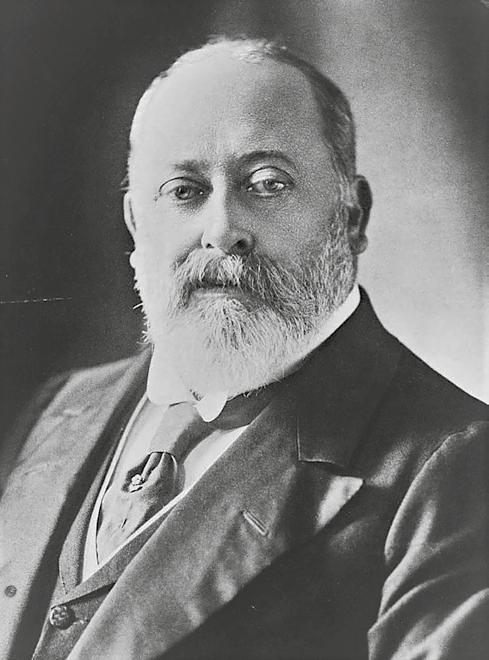
It was said that Queen Victoria’s son ‘Bertie’, later to become King Edward V11, lost his virginiity in Monto.
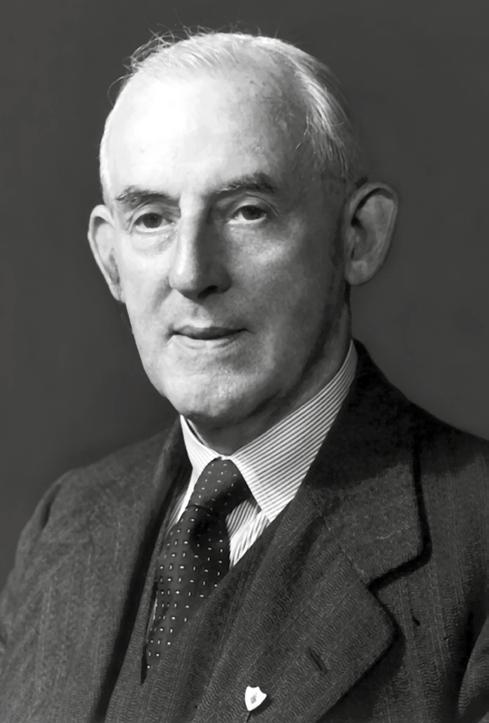
Frank Duff, founder of The Legion of Mary had the greatest impact in shutting down prostitution in ‘Monto’








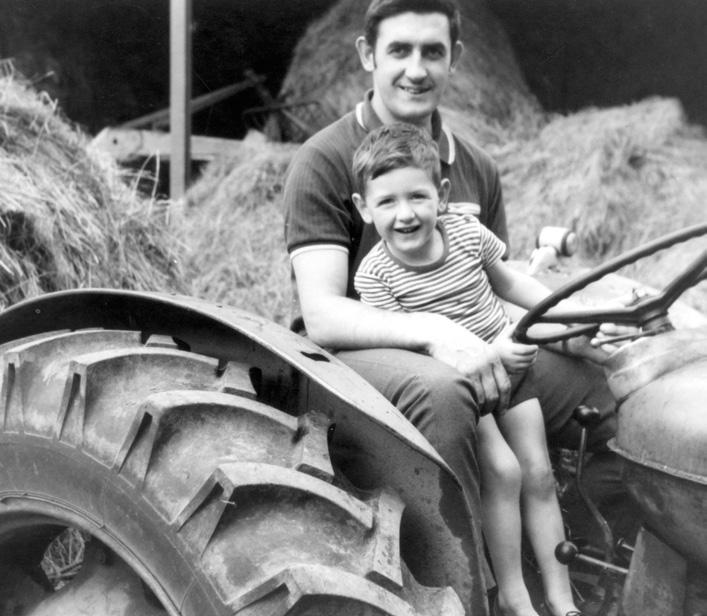














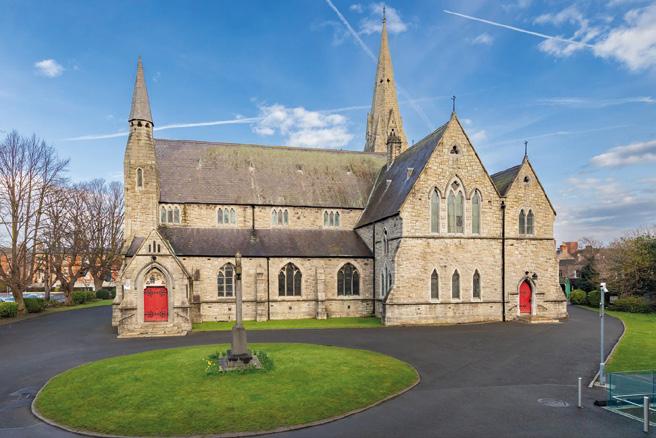
A long time before any of us even attempted to read Joyce’s Ulysses, a good friend and drinking buddy of mine reflected on what he called 'one of the joys of life' - an after drinks urination in the back garden while admiring the heavens above.. When we caught up with the book we were relieved (yes that's the word) to learn we were in fact engaging in a literary deportment. The Ithaca chapter of Ulysses has Leopold Bloom and Stephen Dedalus engaged in 'synchronised urination' while gazing upwards at the stars in the back garden of 7 Eccles Street.
Joyce used a more erudite way: ‘At Stephen’s suggestion, at Bloom’s instigation both, first Stephen, then Bloom, in penumbra urinated, their sides contiguous, their organs of micturition reciprocally rendered invisible by manual circumposition, their gazes, first Bloom’s, then Stephen’s, elevated to the projected luminous and semiluminous shadow’. And so goes on for a further four paragraphs.
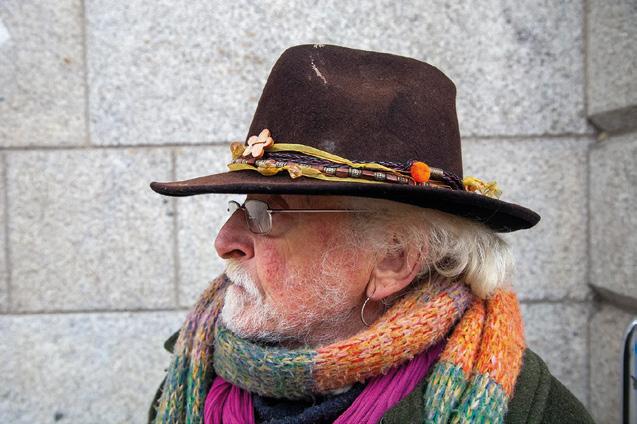
Christ Church Leeson Park, after years of been sort-of closed has been fully deconsecrated by Church of Ireland Archbishop of Dublin Michael Jackson. Originally the Molyneux Asylum for the Female Blind in 1862 and later rebuilt as Christ Church Leeson Park in 1874 catering for a large Church of Ireland congregation that included George Bernard Shaw, who attended Sunday School and worshipped there while living nearby in Hatch Street. Over the years and particularly in the late 20th century the number of worshippers diminished, and in 1972 it united with St Bartholomew’s parish on Clyde Road. That closed as a Church of Ireland parish in 2007 and for a short time was used by the Romanian
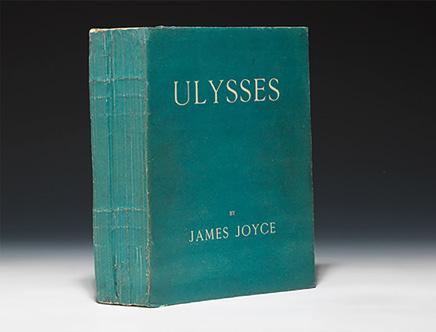
Goodbye to the multi-talented Pat Ingoldsby
Malahide born Pat Ingoldsby died last month fulfilling one of his characteristic quips: ‘if dying was good enough for Johnny Cash, it’ll do me’. Pat was a poet, playwrite, broadcaster and much else. You might also have seen him selling his books and poems on Westmoreland Street and sometimes at College Green.
His first collection of poems entitled You've Just Finished Reading This Title illustrates his imaginative flirtation with the surreal. He sold over a thousand copies selling from door to door. Take some time to visit him online at www.patingoldsby.org




Merrion Square where a café will open later this year
Dublin City Council has announced that work has begun on a new terraced café in Merrion Park near the reclining Oscar Wilde memorial sculpture opposite his childhood home at 1 Merrion Square.
The process has already begun to select a tenant and is set to be complete and
opened in the autumn. There is a growing trend of providing cafes in Dublin public parks. Herbert Park on Dublin’s south side already has a coffee shop, and Palmerston Park in Rathgar is also set to open a park café.
It's all part of Dublin City Council’s
Dublin City Council is celebrating 20 years of their One Dublin One Book enterprise co-ordinated with Dublin UNESCO City of Literature and Dublin City Libraries by publishing a special anthology, Dublin, written in our hearts, edited by Declan Meade and published by The Stinging Fly Press.
The anthology captures Dublin in the first quarter of this century through contributions of 22 poets and writers. Dublin is front and centre the main character of the collection.
Each April, this campaign encourages all Dubliners to get together and read the same book. This year Dublin, Written In Our Hearts has been the chosen book for 2025. The anthology contributors are Kevin Barry, Estelle Birdy, Niamh Campbell, Kevin Curran, Roddy Doyle, Anne Enright, Sarah Gilmartin, Róisín Kiberd, Caitriona Lally, Deirdre Madden, Belinda McKeon, Paula Meehan, Thomas Morris, Niamh Mulvey, Nuala O’Connor, Sean O’Reilly, Keith Ridgway, Peter Sirr, Stephen James Smith, Réré Ukponu and Karl Whitney, some of the many writers who have been writing about the city during the first quarter of the 21st century, a unique snapshot in time and celebrates some of the differing styles and approaches adopted by writers inspired by the city. Reserve a copy of Dublin, Written in Our Hearts from your local library, also available as an ebook, or at your local bookstore. You can listen to a clip from RTÉ Radio 1 Arena at www.rte.ie/radio/radio1/ clips/22504068/
continuing plans for a network of tearooms providing facilities for visitors to Dublin to stay longer and avail of the park amenities. They add "These tearooms also provide a sense of place where the local community can meet and socialize in a family friendly and healthy environment".

Booker prize-winner Anne Enright is a contributor to the Dublin, Written In Our Hearts anthology.
Adam O’Rourke QFA
When most people hear “estate planning,” they think it’s only for the wealthy. But the truth is, if you own a home, have some savings, or simply want peace of mind about your family's future, estate planning is for you.
A good estate plan helps you:
• Protect your family’s financial future
• Pass on assets in a smart and taxefficient way Minimise Capital Acquisitions Tax (CAT)
• Avoid family disputes and costly legal challenges
• Ensure your wishes are clear, legal, and enforceable
With the right plan in place—using tools like wills, trusts, and life insurance— you can take control, reduce stress for your loved ones, and potentially save thousands in tax.
In Ireland, CAT is the tax applied to gifts and inheritances. The amount someone can receive tax-free depends on their relationship to you. Here's a quick guide to the current thresholds (as of Budget 2025):
Group Relationship Tax-Free Threshold
1. Start Early—and Keep It Updated
It pays to start planning early. One example? Certain Irish trusts allow you to gift €3,000 a year—tax-free—and let the money grow over time. When the trust matures, the recipient can receive the funds without paying CAT. This is ideal for gifts to grandchildren, siblings, or others in the lower tax bands. Life changes—so your estate plan should too. We recommend reviewing your plan with your financial advisor at least once a year to stay ahead of legal or tax changes.
2. Make a Will and Use Trusts Wisely

4. Use Gifting and Reliefs to Your Advantage
Strategic gifting—especially early in life—can reduce the size of your taxable estate. Don’t forget about the small gift exemption and specific reliefs for agricultural and business assets, if they apply to you
5. Get Professional Advice
A legally valid will is the foundation of any sound estate plan. Without one, your assets could be distributed in ways you never intended—potentially with a higher tax bill.
Trusts can offer:
• Greater control over how and when assets are distributed
• Protection for vulnerable beneficiaries
• Flexibility in complex family situations
3. Consider Life Assurance to Cover Inheritance Tax
Estate planning isn’t something to leave to chance. Working with professionals— like financial advisors, solicitors, and tax experts—ensures your plan is tailored, tax-efficient, and legally sound. We can assist with everything from setting up trusts to selecting the right life insurance and coordinating with your solicitor
• Estate planning doesn’t have to be daunting—and it’s not just for millionaires. Whether you’re passing on a family home, supporting the grandkids, or avoiding unnecessary tax, a wellcrafted plan can make all the difference.
• A: Children (including adopted, step, and certain foster children)
• B: Siblings, nieces, nephews, grandchildren, etc. €40,000
€400,000
• C: Everyone else (e.g. friends, in-laws)
€20,000
Handy exemptions:
• Gifts between spouses or civil partners are completely tax-free
• You can gift up to €3,000 per person each year, tax-free, to as many people as you like
Section 72 life assurance policies are a game changer. These are specifically designed to cover inheritance tax bills— so your family doesn’t have to sell the home or other assets to pay Revenue. This is particularly relevant if you have an Approved Retirement Fund(ARF). When passed to children over 21, the ARF is taxed as income at40%, not CAT—so normal exemptions don’t apply. A Section 72 policy can help offset that cost.

• If you’re unsure where to start, that’s exactly what we’re here for.
At Ulysses Financial, we offer friendly, practical advice tailored to your situation. There’s no pressure—just a genuine conversation about how to protect what matters most to you.
Want to explore your options? Call us on 01564 5844, email adam. orourke@ulyssesfinancial.ie, or visitwww. ulyssesfinancial.ie/contact-us to book a no-obligation chat.
You can meet Adam at the Galway & Sligo 50 Plus Shows

Hyperbaric oxygenation therapy (HBOT) is breathing oxygen (nearly 100%) in a pressurised chamber. The increased pressure allows more oxygen to dissolve in the blood plasma, enhancing oxygen delivery to tissues. The blood carries this extra oxygen throughout your body which helps fight bacteria and stimulate the release of substances called growth factors and stem cells, which promote healing.
HBOT can also stimulates cellular metabolism and helps reduce inflammation and infection by stopping harmful bacteria and strengthening the body’ immune system. It stimulates the formation of new blood vessels (angiogenesis), new connective tissue (collagen) and new skin cells, thereby accelerating the healing process for various medical conditions.
OxyGeneration is a private state-of-the-art non-emergency hyperbaric oxygenation therapy (HBOT) clinic located on Merchant’s Road, Galway City. We have a purpose build 14seat chamber which safely creates the required pressurised environment and nearly 100% oxygen to breathe during a session.
HBOT is a painless and non-invasive therapy used in hospitals all over the world (including University Hospital Galway) as an adjunct treatment for a range of medical conditions. OxyGeneration is an Irish Life Health approved HBOT provider. HBOT can be used to treat burns, wounds (e.g. diabetic foot ulcers or radiation injury), inflammation issues and sports injury. It is also used to treat skin grafts and skin flaps, so can be used to speed up or improve recovery from surgery and for general health and wellness. HBOT works cumulatively, so the best results are seen when clients consistently attend regularly.
Clients that are currently receiving medical treatment require a letter of referral from their treating physician.
www.oxygeneration.com

Walking the Camino is a big feat, but is made of small steps, every one of which matters - especially when undertaken for a good cause. Irish Hospice Foundation (IHF) have been organising Camino walks for seven years and have launched their route for 2025: Sarria to the historic city of Santiago.
This classic final stretch of the Camino Francés is one of the most popular and rewarding sections, rich in tradition, stunning scenery, and the true spirit of pilgrimage. Those participating in IHF’s Camino Challenge along with their local guides, will take in the spectacular views, delicious food, and unique atmosphere of this ancient route.
Key to the success of Irish Hospice Foundation Camino walks is the camaraderie of those taking part and the memories formed by what is always an incredibly special and moving week. Emma Rock, of IHF’s fundraising team says “People join us as solo travellers wanting to experience the wonders of the Camino but leave having made friendships for life. We also have couples and families that join us year after year. I would encourage anyone wishing to challenge themselves and help us raise vital funds to get in touch with us. It will be your first step to a wonderful and rewarding week”.
Irish Hospice Foundation works to ensure best care at end-of-life and bereavement and rely on events like their annual Camino Challenge to support their work. Many people joining do so in memory of a loved one, others to support areas of IHF’s work like Nurses for Night Care, Caru - supporting care and compassion at end of life in nursing homes, Bereavement Support Line as well as Information and Support Line, recently launched to provide information on end-of-life care, advance care planning and palliative care.
The event takes place 28th September – 5th October and full details are available from Emma on 01 679 3188 or at www.hospicefoundation.ie/camino
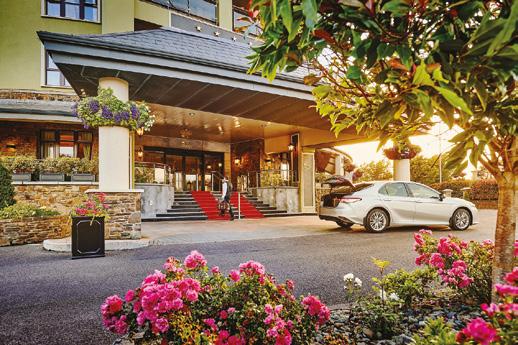



Eileen Casey meets Vincent and Eilish McNally who operate a unique travel initiative aimed at older people which organises trips all over the country
Thanks to Vincent and Eilish McNally, those wishing to enjoy travel outings in a safe, friendly and social environment can do so. The couple, who met sixty years ago on a Legion of Mary outing (appropriately) are the founders of a travel initiative whose membership is increasing year on year. There really is a lot of fun in numbers so what better way to enjoy a communal day out, laughter and good company than a trip by bus, LUAS or train?
Have Pass Will Travel (HPWT) came about via a casual conversation between Vincent and some of his Tallaght neighbours. Retired and keen to get something off the ground that they could all benefit from, the general consensus was, “We have to do something.” This willingness to start an activity translated to Vincent taking the reins and, together with Eilish, brought a travel plan into effect, June 2010. That first outing comprised five people; destination Bray and Wicklow. If the name of this group sounds familiar then it’s because it comes from a television programme Eilish used to watch while growing up in Drimnagh. ‘Have Gun Will Travel,’ a bounty hunter themed programme which saw an individual travelling the length and breadth of America , tracking and capturing wanted criminals. “So it’s a play on words,” Eilish explains.
Travel seems built into this couple’s DNA. Vincent retired from Bus Eireann in 2006 after spending forty years in public transport. Eilish worked in the Civil Service, right up until 2012. The couple have 2 children, 4 fantastic grandchildren and a gorgeous great grandson. When their children were young, the family holidayed in Ireland, especially Baltimore West Cork), a regular favourite. It was in Baltimore in 1954 that Vincent was fostered for seven years. Even now, the whole family visit there every year. When their children got older, Vincent and Eilish began venturing further afield. They’ve been to America several times (New York, Colorado, Up State New York, LA., San Francisco, Boston and Cape Cod and Hawaii). The list goes on. Norway, Sweden, Denmark and Iceland. Scotland is a firm favourite. When Vincent was 60, the couple completed a six
week round the world trip taking in LA. and New Zealand where they travelled in a camper van. They also visited Australia and Hong Kong. When Eilish retired, a coach tour of South Africa followed which included a safari in Kruger National Park. And if that’s not enough, they’ve also been on several cruises including a river cruise on the Danube. The scale of such travel mileage is breath-taking and rather wonderful.
The beauty and strength of HPWT is that there is no membership fee, no rules or regulations. Meetings are held on the LUAS or train. The only requirement is that a member hold the golden ticket…the ‘free travel pass.’ And now, of course, there is the introduction of the Companion Pass. Once a Free Travel holder reaches the three score and ten, he/she is entitled to a Companion Pass. There is of course the organisational end of it, a task Vincent and Eilish gladly do to ensure smooth running of trips. So, how does HPWT function?
“We go out on the first Wednesday of each month,” Eilish says; “We pick a location and work out the logistics and then we
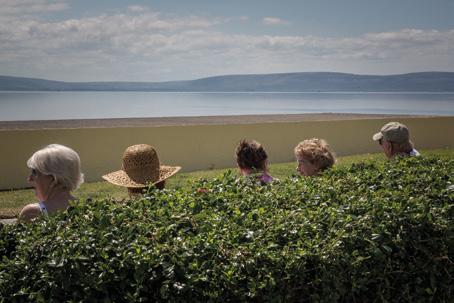
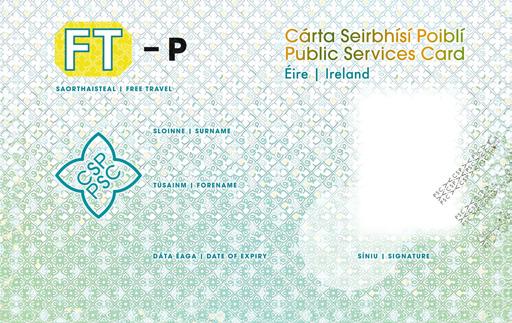


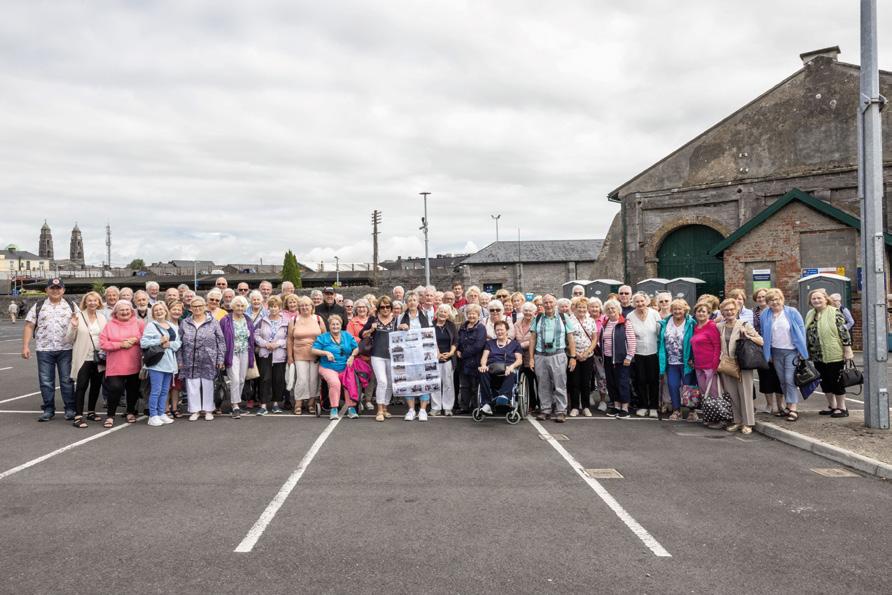
keep them on their mailing list so they are in the loop. When a member passes away, the passing is respectfully marked by the group.
But of course, not all of the membership travel all of the time. The most people that have come on a trip is 85 and that was to Spike Island. Trips offer a variety of theme including culture and education in interesting ways. Fifty people went to the Technological University, Dublin (TU Dublin), Grangegorman Campus while in March this year, fifty people went to the GPO Museum. 2024 trips were no less interesting. In June last year, 75 people went on the Moon River Cruise on the Shannon (from Carrick-on-Shannon). But it’s not just the monthly trips that bond the membership. Each December, there’s a Christmas get together in a local hotel and there’s a fair turn out (usually 80 or so). The evening also includes a raffle, prizes donated by members and any money raised goes to Saoirse Domestic Violence Services (a women’s refuge in Tallaght).
Other places visited include Belfast (The Titanic Experience, City Bus and Black Taxi Tours) and of course, Killarney (jaunting cars to Ross Castle with a cruise on the lake). HPWT have pretty much covered the whole of Ireland. They’ve visited the Arigna Mines, and as mentioned, Spike Island (twice). The itinerary brought HPWT to three goals; Kilmainham, Cork and Wicklow. They’ve gone to the Fleadh Cheoil in Ennis, Mullingar and Wexford and hope to go to the Fleadh in Belfast next year. Nothing daunts this fabulous group of go getters. Vincent and
Have Pass, Will Travel' Photo-Book available to order https://www.instagram.com/havepass_willtravel/ All aboard for another Have Pass Will Travel excursion
What’s really note worthy about the group is that for the past five/six years, a young chap called Ste (Stephen) Murray has been shadowing the trips, documenting the travels. Ste is an architectural and performance photographer based in Dublin. He is also a fine actor. The photographs included with this article are courtesy of Ste Murray. He takes videos, photographs and also interviews. There’s also a photo book Ste compiled which illustrates the travels. It was launched in Dublin Castle three years ago. Last year, in company with Ste, HPWT made a presentation in the Department of Transport, attended by the then Minister for Transport and Senior Officials in Dublin Bus, Bus Eireann, LUAS, Iarnród Eireann and the Department of Transport.
Ultimately, Vincent and Eilish McNally are providing a valuable, community based opportunity for lots of people to enjoy their golden years. The formula is effective but also simple and is not copyrighted. Hopefully, more travel groups will form nationwide. The blueprint devised by Vincent and Eilish has undoubtedly stood the test of time.
Gratitude is owed to Vincent and Eilish McNally and to Emma Barone. Also, Ste Murray for their contributions here. For those wishing to follow HPWT, Ste Murray’s instagram page included below. Also link to Photo Book documenting HPWT’s many trips.
Imagine, through whatever circumstance, we found ourselves in hospital. In the ‘medical zone’ time passes slowly. Early breakfast (to ensure an efficient service) followed by an early lunch, can mean a long stretch in the afternoon towards the evening meal and beyond. Reading is a good way of getting through the hours and of course there’s visiting time and television. However, these can pall after a while. It’s exciting to know that more cultural pursuits are now on offer in the health service in many areas, most definitely in the west where Saolta Arts and Health Programme (SA&HP) is active. Simply explained, SA&HP
is a west of Ireland initiative aimed at improving the hospital experience for patients, staff and visitors.
Tullamore born visual artist Emma Barone is an artist constantly evolving in terms of artistic diversity as well as through working in the community. She’s always been committed to encouraging, inspiring and nurturing art in others. Now that she’s been selected to join the Participatory Artist Panel for

Tullamore born visual artist Emma Barone
SA&HP, her presence will be even more high profile and also, very welcome. It’s a tremendous opportunity and will allow her to contribute as a workshop facilitator







as well as engaging with public initiatives throughout 2025-2026. “As part of this panel, I’ll have the chance to work on various projects across hospital sites in Galway City, Ballinasloe, Castlebar and Roscommon as well as other community settings.” Supported by Galway City Council, Croí Heart and Stroke Charity and HSE West North-West, the future looks bright.
Most of all, Emma looks forward to “applying my participatory and collaborative methodologies to create meaningful artistic experiences that enhance health and well-being in these diverse environments.” There’s a gleam in Emma’s blue eyes which speaks of genuine commitment. She is determined to make this new role a success.
One of Saolta’s aims is to integrate arts into healthcare in order to promote healing and that sense of well-being that releases the body’s own natural endorphins. Result? A happier hospital experience. Emma, as a visual artist, is drawn to such a manifesto for the “powerful opportunity of translating human experience and emotion into visual art within healthcare.” With a farsightedness that is both satisfying and generous, Emma is keen “ to witness art’s direct positive impact on well-being and its ability to foster beauty, agency and connectivity, all of which resonate strongly with my artistic vision.”
Emma recently graduated with a Professional Postgraduate Diploma in Art and Health from NCAD (National College of Art & Design, Dublin). Her studies emphasise the theoretical and practical aspects of arts in a health context, including collaboration with leading practitioners and immersion in hospital settings. She already worked with Anam Beo (Community Cultural Collective Group, County Offaly), an apprenticeship serving her well with regard to empowering individuals in care settings. Using art as a recuperative tool offers a wealth of emotional support, connection and well being.
In 2023, Emma received an Anam Beo mentoring award, an honour she describes as “truly meaningful. It gave me a first hand look at the wonderful work they do in bringing creative engagement to people within our community, particularly in healthcare and social setting. Seeing the joy that their projects foster really struck a chord with me.” The activities participants engage in are many and varied. Painting, drawing and storytelling, to mention a few. Emma is currently engaged in a project called ‘Did I Ever Tell You’, which sounds utterly compelling. Most of us, as we age, want

to share our story. Our stories are our legacies and we need to be authentic as far as they are concerned. ‘Did I Ever Tell You,’ is a tri-county storytelling initiative spanning Kildare, Offaly and Westmeath. The project focuses on collecting thoughts and memories which older individuals in HSE healthcare settings share. Various art forms, as mentioned, help bring the stories to birth. In Offaly, Anam Beo is a key partner, connecting with older adults in care and community settings, like Riada House in Tullamore. Emma works on the practical aspects, ensuring these arts programs run smoothly and are accessible to all who can benefit. “It’s incredibly rewarding to be part of an organisation that recognises the profound positive impact creativity can have, especially as we navigate different stages of life.”
A particular benefit of using various forms of art is that it offers a powerful

non-verbal way to express emotion, especially when illness or ageing makes verbal communication difficult. The arts boost well-being, reduce stress and isolation and bring a much needed human element to clinical environments. The arts also reinforce identity and agency, allowing individuals to create and make choices, fostering a sense of control. No stranger to working in a community setting, Emma volunteered with Avista (Supporting people with disabilities ) for several years in Birr (County Offaly), working as a creative facilitator with special needs adults. This type of work is both “rewarding and challenging. It pushes me while keeping me grounded.” A typical session begins with a goal making plan for that day.
Emma encourages exploration through various mark making techniques. “This might involve getting participants comfortable with markers and just letting loose with scribbling to loosen up and break any initial inhibitions. We might then move onto pencils for more controlled lines and shading.” Emma cannot emphasis enough process over final product . Emma likes to encourage experimentation with different mark making strategies, discovering each medium’s unique qualities. Whether it’s the bleed of watercolour or the layering capability of acrylic.” The benefits for participants are huge. “They feel free to explore and aren’t focused on perfection. That’s when exciting discoveries and personal expression tends to happen.” Emma incorporates mindfulness techniques during a typical session also which adds a therapeutic layer over the aspects of art making.
Beyond the vibrant world of art, Emma’s life is also “richly textured with practices that nourish both body and soul.” For over two decades, she has engaged with yoga, “a cherished anchor, a fluid conversation between breath and movement that brings an exquisite harmony to my physical and mental landscape.” Nature also gifts her a “profound muse.” Fortunately, she has a loyal companion accompanying her on many enjoyable walks in the countryside; her little Jack Russell ‘Boo’.
There’s no denying the bond. Emma got Boo as a five week old pup and they’ve been together for almost eleven years. “She’s my spirit guide in dog form and she brings me unconditional love.”
Emma describes walking in nature as “those gentle pilgrimages.” They enable her to process while she moves. Saolta Arts have chosen wisely in and can only benefit enormously through having an artist of the calibre of Emma Barone onboard.
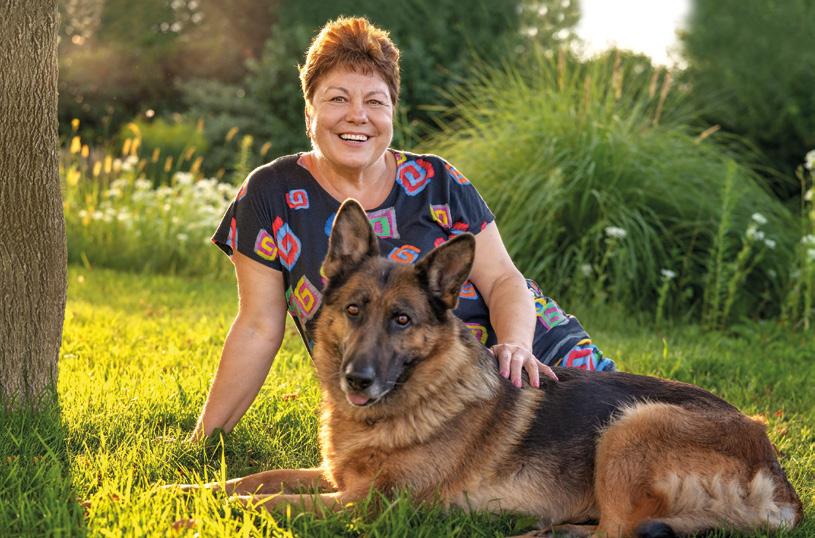




“What I love about dogs is that their love is unconditional. So I want my love to live forever, with a gift in my Will.
“What I love about dogs is that their love is unconditional. So I want my love to live forever, with a gift in my Will.
“What I love about dogs is that their love is unconditional. So I want my love to live forever, with a gift in my Will.
“What I love about dogs is that their love is unconditional. So I want my love to live forever, with a gift in my Will.
When we were making our Wills, it was an easy decision to leave a gift to Dogs Trust.
When we were making our Wills, it was an easy decision to leave a gift to Dogs Trust.
When we were making our Wills, it was an easy decision to leave a gift to Dogs Trust.
When we were making our Wills, it was an easy decision to leave a gift to Dogs Trust.
Now it feels really good, to know that when I’m gone I can still help dogs.”
Now it feels really good, to know that when I’m gone I can still help dogs.”
Now it feels really good, to know that when I’m gone I can still help dogs.”
Now it feels really good, to know that when I’m gone I can still help dogs.”
Ruth, Dogs Trust Ireland Supporter
Ruth, Dogs Trust Ireland Supporter
Ruth, Dogs Trust Ireland Supporter
“What I love about dogs is that their love
Gifts in Wills help Dogs Trust be there for abandoned and surrendered dogs, through this dog crisis, and long into the future.
Gifts in Wills help Dogs Trust be there for abandoned and surrendered dogs, through this dog crisis, and long into the future.
Gifts in Wills help Dogs Trust be there for abandoned and surrendered dogs, through this dog crisis, and long into the future.
Gifts in Wills help Dogs Trust be there for this dog crisis, and long into the future.
Will you leave a gift in your Will today?
Will you leave a gift in your Will today?
Will you leave a gift in your Will today?
Will you leave a gift in your Will today?
To find out more or to have a conversation about leaving a gift in your Will, call Katie on 01 879 1845 or visit DogsTrust.ie/Legacy
To find out more or to have a conversation about leaving a gift in your Will, call Katie on 01 879 1845 or visit DogsTrust.ie/Legacy
To find out more or to have a conversation about leaving a gift in your Will, call Katie on 01 879 1845 or visit DogsTrust.ie/Legacy
To find out more or to have a conversation about leaving a gift in your Will, call Katie on 01 879 1845 or visit DogsTrust.ie/Legacy


After President Trump’s tariff bombshell many small whiskey producers now are in talks with other markets, such as China and Hong Kong as it will no longer be viable for them to continue exporting to the US in the long term should these tariffs come into effect
Mairead Robinson on how the Irish distillers are fighting the tariff threat.
Irish businesses, particularly the whiskey distillers of which we have had a growing number in recent years, were thrown into turmoil when Donald Trump announced his planned tariffs.
The Irish Whiskey Association, the Ibec group that represents the sector has said that it ‘regrets’ the announcement of US President Trump on tariffs. Should a 20% tariff be placed on Irish whiskey, spirits and liqueurs imports in the U.S. or indeed a 10% tariff, it will make things very difficult here.
The total value of the US market for the Irish drinks sector is €865 million per annum, according to Eoin O Cathain, director of Irish Whiskey Association. ‘The effects of this tariff will be immediate’ he added. ‘The US has been the engine of growth for Irish Whiskey and spirits and now represents 41% of Irish drinks exports every year’.
Many small whiskey producers now are in talks with other markets, such as China and Hong Kong as it will no longer be viable for them to continue exporting to the US in the long term should these tariffs come into effect. According to
founder of Clonakility Distillery, Michael Scully, while tariffs are certainly not welcome, they are a resilliant group and will survive the short term. Many of our whiskey producers are small family run businesses and depend heavily on the American market. However looking down the road, the prospect is very uncertain and worrying for Irish whiskey producers.
But on a positive note,Irish whiskey is a hugely successful contender on the world stage, as proven recently at the World Drinks Awards 2025. Three spirits from Boann Distillery,a family owned distiller located on the edge of Drogheda, have been announced as country winners. This has secured their place in the global final to compete for the coveted ‘World’s Best’ titles.’We are incredibly proud to see four of our spirits recognised on the world stage’ said Pat Cooney, founded and CEO of Boann Distillery. We look forward to the global finals and are honoured to represent Ireland among the world’s best’.
We wish them the very best for the World’s Best 2025 titles to be announced on 4th June at the Waldorf Hotel in London.
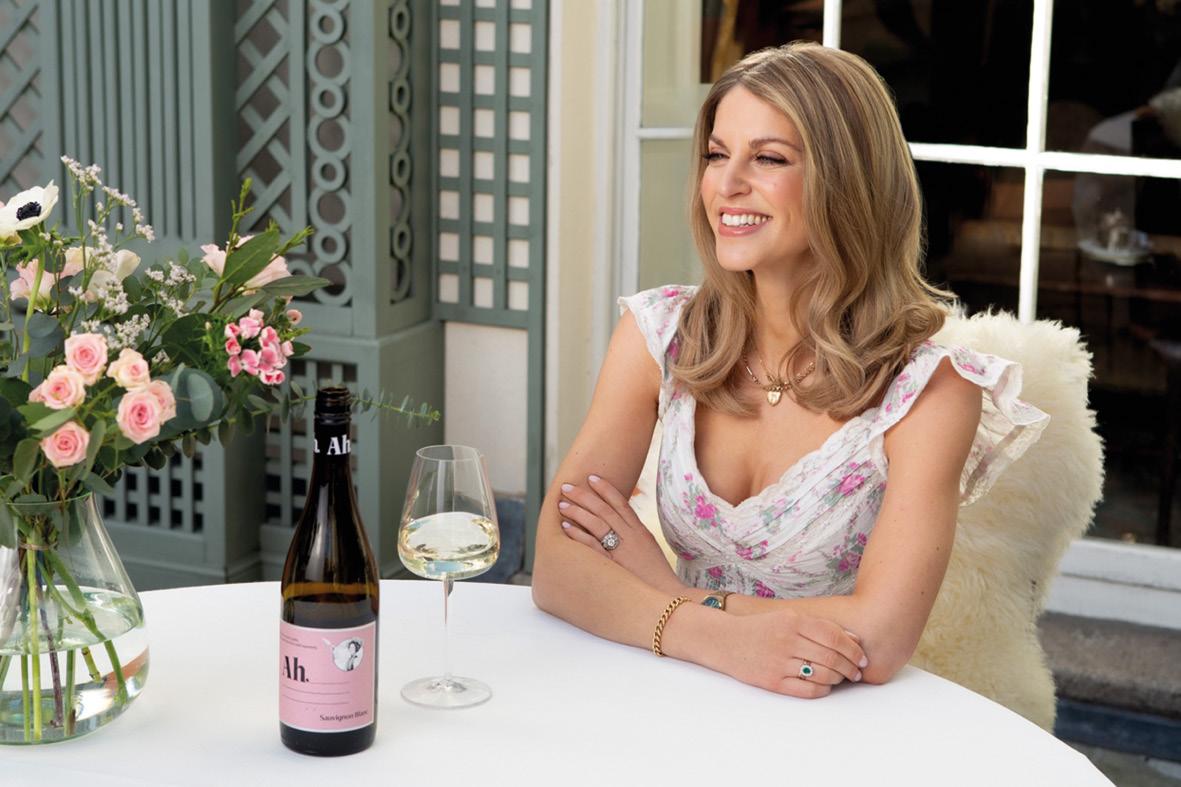
Amy Huberman has partnered with Barry & Fitzwilliam to build her new brand of two crafted wines under the name ‘Ah’
Meanwhile in the world of wine, we have seen a growing number of celebrity endorsed wines appearing in supermarkets and off-licences. Indeed I have highlighted many of them here over the years, particularly Graham Norton’s collection. And now a new range of wine has been launched by Amy Huberman and you can check them out in Tesco, Dunnes and from www.winesoftheworld.ie
Amy has partnered with Barry & Fitzwilliam to build her new brand of two crafted wines under the name ‘Ah’. She explains that she has chosen this name as it is a versatile phrase expressing delight, understanding or eureka moments. The Ah Sauvignon Blanc (RRP €17.95) is a blend specified by Amy with the help of her friends at the vineyard. It has light hints of tropical fruits, apricots and peaches with a long smooth finish.
Her other wines is Ah Cava Brut Rose (€24.95) offers subtle notes of red berries. It is refreshing and not too sweet, and she has chosen this wine as a Cava she would enjoy drinking with friends.
And as to the vineyard, Amy is working with Covinas which is a cooperative of local farmers who all have vineyards in the heart of the Comunidada Valenciana in Spain. These farmers hae tended these vineyards for generations and their knowledge and dedication to sustainable practices ensures the preservation of the land for future generations.
So how did this story begin? Amy explains that nearly three years ago over coffee with friends Shane Davey and Brian Fagan they began to discuss what wines they enjoyed at the weekend, or when having friends over. They each agreed there were so many products on the shelves that it was sometimes difficult to know what to choose. Amy said ‘All you want is a good bottle of wine at a good price that you know you will enjoy.
It is that simple.’ And where did the name ‘Ah’ come from? Amy explained at the launch of her wines – ‘We wanted to incorporate some fun into the label and the branding, offering



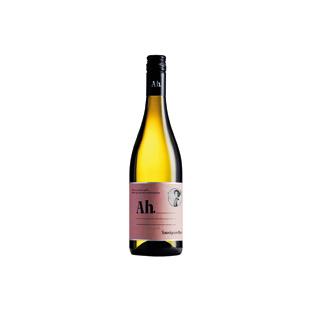


Manahil gently cradles her 6-months-old son Baraa, as he eagerly eats from a sachet of Ready-to-Use Therapeutic Food (RUTF).

When Manahil arrived with him at the UNICEF-supported hospital in the city of Damazine, in the Blue Nile state of Sudan, Barra was already very fragile and weak. He was assessed by the nutrition team, and his mid-upper arm circumference (MUAC) reading was 9.5 cm – within the dangerous red zoneindicating that his life was hanging by a thread.
“I was very scared that Baraa was going to die. He was so sick and malnourished,” recalls Manahil, his mother.
Manahil received supplies of Readyto-use Therapeutic Food (RUTF) to give Baraa at home. This miracle food is a peanut paste which doesn’t require mixing with water or refrigeration and has the perfect nutrient balance to bring children back from the brink of death. Within just two months, Baraa had gained 3 kilograms. “Baraa’s weight and
Show the conflict zones where the two waring military leaders have been fighting for control after they overthrew the Sudan civilian government.
Sudan - The world’s biggest humanitarian disaster
Since the civil war broke out two years ago the situa7on for the
devas7ng. It is now the biggest humanitarian crises on earth. Currently 50 per cent the popula7on – more than 24.8million people - are in desperate need of humanitari assistance.
health have improved after eating RUTF. He loves it. When I give it to him, he eats right away,” Manahil said, and she now has renewed hope that her son will fully recover and thrive again. In Sudan, Manahil is just one of thousands of mothers and caregivers struggling to keep their sick children alive.
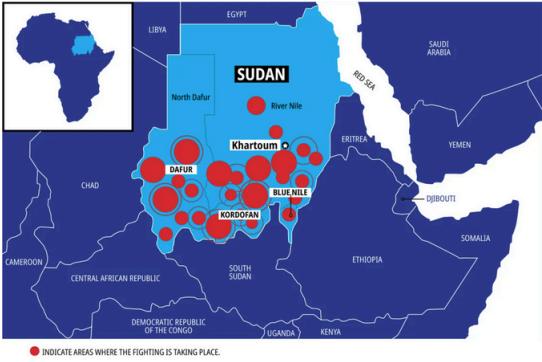
150,000 people been killed and 12 million displaced within Sudan and countries. They endured unimaginable violence and trauma; arriving at camps no food or the
displaced within Sudan and into neighbouring countries. They have endured unimaginable violence and trauma; arriving at camps with no food or the basic necessities for survival.
Famine – the worst form of hunger – has now been declared across five states in and five other regions are on the brink. This is only the third 7me a famine has been declared by The Famine Review CommiCee in the last 20 years
Sudan - The world’s biggest humanitarian disaster in the world.
Sheldon YeC, UNICEF’s Representa7ve in Sudan says, “The rains are coming. And will turn this crisis into a catastrophe.”
Since the civil war broke out two years ago the situation for the people of Sudan is devasting. It is now the biggest humanitarian crisis on earth. Currently 50 per cent of the population – more than 24.8 million people - are in desperate need of humanitarian assistance.
Famine – the worst form of hunger – has now been declared across five states in Sudan and five other regions are on the brink. This is only the third time a famine has been declared by The Famine Review Committee in the last 20 years.
Sheldon Yett, UNICEF’s Representative in Sudan says, “The rains are coming. And they will turn this crisis into a catastrophe.”

UNICEF has been working in Sudan since 1952 and has had a permanent office in Khartoum since 1974.
95% of Ready-to Use Therapeutic Food (RUTF) is supplied into Sudan by UNICEF and last month delivered 1,908 metric tons of humanitarian aid, including 40,000 cartons of RUTF. Each containing 150 sachets - crucial for saving the lives of children like Baraa.

Deliveries, which normally take four days are now taking up to 21 days due to the need to be shipped into Sudan via neighbouring Chad to avoid conflict zones.
Despite the brutal civil war and attacks on humanitarian workers, UNICEF teams remain on the ground delivering education, water, sanitation, health and nutrition programmes.
UNICEF is the lead agency for child nutrition and works in 158 countries to combat food poverty and malnutrition. Working with governments and agencies on the ground, UNICEF has invested in solutions like RUTF which has helped reduce mortality rates in children under 5.
UNICEF relies entirely on voluntary funding. And when the world’s eyes and ears are turned elsewhere, it is gifts left in Wills by our supporters which are helping to provide the flexible funding to reach children where the need is greatest - like in Sudan.
Can you help us rewrite their future?

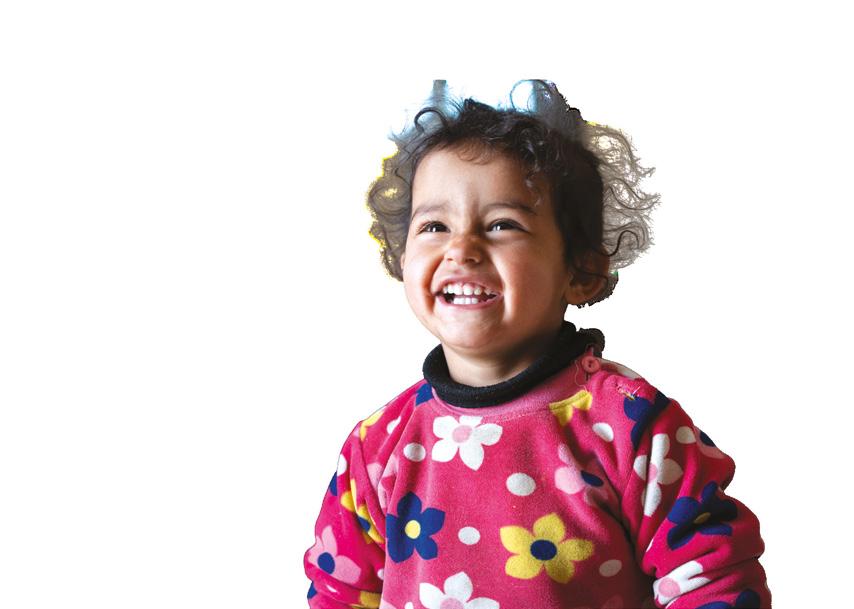

This year nearly 8 million more children in the world will celebrate their fifth birthday compared to 1990. This global effort, which has seen a 60% decline in mortality rates within a generation, gives us hope that in the decades to come, every child will have a chance to grow, thrive and reach their milestones.
Complete the form below to receive a free, no-obligation legacy information pack which includes a Will Planner.
FREEPOST (no stamp required) to: Pauline Murphy, Legacy Gifts Manager, UNICEF Ireland, 33 Lower Ormond Quay, FREEPOST F407, Dublin 1, D01 R283
Having taken care of your loved ones, please consider including a gift in your Will. Let your legacy be a future for children free from food poverty and give every child, peace, hope and love. Learn more on unicef.ie/legacy
If you are meeting your solicitor to include a gift to UNICEF in your Will, the details you will need are as follows:
UNICEF Ireland: Registered Charity Number: 20008727 Revenue Number: CHY NO. 5616
Registered Offices: 33 Lower Ormond Quay, Dublin 1
I am considering leaving UNICEF a gift in my Will. Please send me a Goodwill Legacy Guide and Will Planner.
Name:
Eircode:
My Email:
Address: County:
My Phone Number:
I would like to receive updates on how my support has helped children and information on other ways to help: If you prefer not to be contacted by post in the future, please contact us at info@unicef.ie Visit unicef.ie/about/privacy-policy for information about UNICEF’s data management practices.
Please don’t hesitate to contact us to speak in confidence.

Dermot Gilleece recounts the extraordinary life and achievements of F1 team owner and huge golf enthusiast, Eddie Jordan

My first sight of Eddie Jordan hitting a golf-ball was on the practice ground at Valderrama. This was more than 30 years ago, when he had a home on the Costa del Sol. With a borrowed driver, he began casually to hit shots, good shots, despite the handicap of wearing street shoes. The exercise struck me as so typical of the Dubliner I had come to know and admire. Years later, in an attempt at explaining his success in motor-racing, he said mischievously: “I was consistent in that I robbed everybody, so I didn’t tend to make enemies. This life we live is just one short little trip. And we both know that it flies by. So it's hugely important how you treat people. We all have enemies but I managed to hold onto my big sponsors. That was the key.”
When he died aged 76 on March 20th, his great golfing friend, Paul McGinley, spoke for most of us when he observed on line: "Heartbreaking to lose one of my very best friends to the curse that cancer is. Heaven will be some craic, now you've arrived." Reflecting on a happier time when Jordan had caddied for him in the 2005 BMW International Open, McGinley said: “Eddie was great all that week and I couldn't have asked for a better caddie. In fact I could see why he had been so successful as a Formula One team boss. As a long-time friend, I thought I knew him very well but I saw another side to him in Munich, which thrilled me so much. I'm not going to say what it was. It will remain a secret.”
On getting to know Eddie Jordan, the feeling grew that any challenge, whatever
the circumstances, was to be relished. I especially remember a chat I had with him in 2009, four years after he had sold his Formula-One team in January 2005 for a reported figure of €80 million. He was returning to the motoring limelight in Australia, as a member of BBC Television's presentation team for the Grand Prix season, offering his "expert insight and passionate perspective."
Even in quieter times, there was never the danger of Jordan becoming anonymous, given his connections in golf. This was the man who thought nothing of bribing Nick Faldo so as to acquire car-testing time at Silverstone. And who invited Tiger Woods to a stay at his Wentworth home, only to impose a charge of £30,000 which he then gave to charity. He considered it something of a mixed blessing to have gained international celebrity through motorracing. "While it allows me to meet some of golf's greatest players," he acknowledged, "there's always the problem that while I want to talk golf, all they've wanted to talk to me about has been grand prix cars."
Jordan’s deal with Faldo came early in 1996 when Jordan's chief designer at the time, Gary Anderson, was anxious to do some urgent, pre-season testing. A phone-call to Brian Pallott, the track manager at Silverstone, however, did not deliver the expected response. "Can't be done,” the man with a long-time business attachment to Silverstone was informed. “The track is taken up. A private day." Intrigued by this,
Jordan wanted to know who had booked
it, but Pallott wasn't saying. In typically persuasive fashion, the motoring chief persisted until he was eventually informed that Faldo had taken over the track to put a newly-purchased Porsche 959 through its paces. This, incidentally, was the same, ultra-exclusive car which Faldo's American girlfriend at the time, Brenna Cepelak, severely thumped with a nine iron after the pair split up in October 1998. As she intended, the damage was extensive and quite costly to repair. Meanwhile, a compromise was reached eventually. If Faldo would allow the grand prix car on the track, his reward would be a drive in it. And that's what happened. "We had to take the seat out to allow for Faldo's size (6ft 3ins). The pay-off for me was an invitation to play a round with Nick at Sunningdale a short while afterwards.”
In the week prior to the 2006 Ryder Cup, Jordan had Woods and his caddie, Steve Williams, as guests at his Wentworth home,

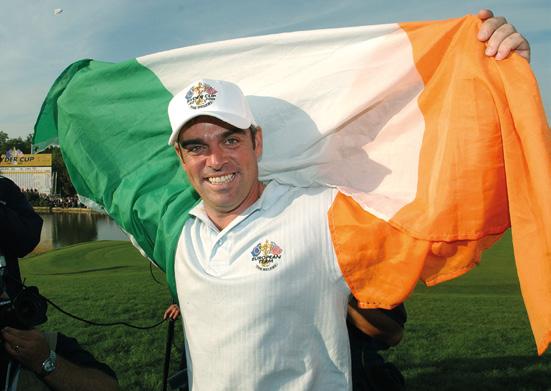
When he died aged 76 on March 20th, his great golfing friend, Paul McGinley, spoke for most of us when he observed on line: "Heartbreaking to lose one of my very best friends to the curse that cancer is. Heaven will be some craic, now you've arrived."
which was located on a corner where the end of the garden looked out on the fourth, fifth and sixth holes of the famous West Course. "Steve was a massive fan of Jordan Grand Prix and he told Tiger about us," said Eddie. "The upshot was that I offered to put them up during the World Matchplay. The two of them, along with a chef and other members of Tiger's team, stayed in the house while myself and Marie (Eddie’s wife) moved into the annexe.
"In the evenings, Tiger used to go out my back garden and practise on hole five where he would acquire quite an audience by the time he reached the green. Then he'd slip away into the trees, with people probably thinking he was going to the loo. Instead, he was heading for the back entrance to my house. "We thought he would leave when he was beaten by Shaun Micheel in the first round on the Thursday, but he stayed in the house for a full week. Then came the really interesting bit. Though Tiger's management company, IMG, had offered to pay us £15,000 for the week, I later told them the price was double that. Then I requested that two cheques be written for £15,000 each, one made out to the Tiger Woods Foundation and the other to my charity CLIC (Cancel Leukaemia in Children). When I told Tiger what I had done, he thought it was classic. A great move. He loved it. Then I explained that this was normal practice in motor racing."
There was always golf. He wanted to know if I still remembered Old Sotogrande all those years ago (1994), when himself, Marie, JP Fitzgerald (before he became Rory McIlroy’s caddie) and myself played the final hole in total darkness, having started the round in the late afternoon. It was an occasion we would remind each other of from time to time, as if to cement the sort of relationship Jordan liked to maintain with long-standing contacts in the media.I can’t remember who won that
particular battle. All I can recall is that Eddie was my partner and with the 18th green engulfed in darkness, he insisted that the winner would be determined by sound. In other words the rattle of a putt against the pin would be decisive. And while I can recall such a sound, I genuinely can’t remember who made it.
As a prelude to the 1998 Grand Prix season, a quintessentially British institution was filled with the plaintive note of the uileann pipes. It was the owner's way of putting his personal stamp on the launch of the Benson and Hedges Jordan MugenHonda 198, at London's Royal Albert Hall. Overall, it made quite a change from the modest gatherings I remembered for earlier launches at Jordan's Silverstone factory. A 20-minute spectacular display of acrobatics from the French Cirque de Soleil, ended with the new, yellow-liveried car being lowered on a platform from 50 feet above 600 assembled media.
Bearing a hornet on its nose _ "ready to sting the big boys!" _ the car represented a triumph for the engineering skills of Jordan designer Gary Anderson, who was forced at short notice to adapt to the most radical technical rule changes for 15 years. The scale of this London showpiece emphasised the remarkable resilience of Jordan. Since breaking into the ridiculously-expensive world of grand prix racing, he would solemnly proclaim each new season as "a make or break year in which I've got to deliver." Seven years on, he was still without a grand prix victory. But 1998 was to change all that, thanks to the coup of landing the 1996 world champion, Damon Hill, along with a works engine deal with Mugen-Honda. There was no hiding Jordan's delight at the presence of Hill on the launch platform close-by Hirotoshi Honda, whose father founded the Japanese giant. In the event, Hill would form a partnership with 22-year-old Ralf
Schumacher, Michael’s younger brother so as to finance a driver with 21 grand prix victories, Jordan employed all his formidable trading skills. He created a vacancy for Hill by collecting $3 million in compensation from Benetton for Giancarlo Fisichella. And he had previously got $4 million from Ferrari for Eddie Irvine along with undisclosed amounts for the contracts of Michael Schumacher and Jean Alesi. So, expensive though it undoubtedly was, it didn’t leave Jordan strapped for cash. "Selling drivers has kept us in business," he explained.
My return to London for the 1999 launch was especially memorable. This time, the host venue was the London Palladium where, for the first time in their history, Jordan Grand Prix would have two drivers with Grand Prix victories to their credit, now that Heinz-Harald Frentzen had joined Damon Hill. Jordan was now one of the so-called top four teams, an elevated status achieved for the first time in the 1998 constructors’ championship. Which lent a piquant touch to the choice of a Pakistani illusionist as the feature entertainer. "Now that we have tasted victory, I feel psychologically stronger." said the owner.
His fortunes were changed utterly by events in Round 13 of the 1998 schedule at SpaFrancorchamps. On August 30th, having had his highest finish of fourth in the two previous races, Hill swept to victory in the Belgian Grand Prix. And, oh happy day!, Ralf Schumacher followed him home for a Jordan 1,2. Lingering doubts were instantly removed about the value of a reported £20 million in sponsorship which Benson and Hedges was now investing in the team for a fourth successive season. And if he had a mind to, Jordan could afford to do some determined arm-twisting of the motoring media, with the £40 million he was reported to have received from equity investor, Warburg Pincus. Further victories, in France and Italy, followed in 1999 and a fourth and final one in Brazil in 2003. Since breaking into the ridiculouslyexpensive world of grand prix racing in 1991, the proud Dubliner had delivered handsomely for his many admirers. Ar dheis Dé go raibh a anam.

Colette Sheridan meets Cork woman Edith Wilkins who has devoted over 40 years of her life fighting for the street children of India
“Where’s your man in all of this?” This was the question that Edith Wilkins, CEO of the Edith Wilkins Street Children Foundation (EWSCF), would sometimes pose to Mother Teresa as the two women, in their own ways, helped to alleviate the suffering of children (in Edith’s case) and the dying and destitute in Mother Teresa’s case in Kolkata. Where is God amid the devastation of sexually abused trafficked children, Edith wanted to know? But moments of despair gave way to heroic work.
Now aged 67 and looking towards retirement in the next few years, Cork humanitarian and nurse, Edith, went to India in 1982 to work with impoverished children. She only intended to stay for a short while but ended up staying for twenty-eight years, dedicating her life to working with some of the poorest and most marginalised children in India. She was the recipient of Rehab International Person of the Year in 2012.
Originally working with GOAL in Kolkata, Edith’s career has taken her to some of the poorest regions on earth, including Sudan. But her heart was in Kolkata. “You know what? Kolkata swallowed me. You either love Kolkata or you hate it. You couldn’t survive there if you didn’t like it. I absolutely fell in love with the city. It’s very overcrowded, absolutely manky and dirty with millions of people living on the streets. There’s a soul in it.”
(Edith had to learn to speak Bengali.)
When she first lived in Kolkata, Edith shared a single folding cot with a nurse friend on the balcony of a family’s home “with mosquitoes everywhere. I hated rice and Indian food. I lived on flatbread, bananas and eggs,” recalls Edith. “But I just went with it.” She came for three months; it would be three years before she left to pay a visit to her family in Douglas, Cork. (At one stage in her career, Edith worked for the Cork-based HOPE Foundation, working in India).
As well as John O’Shea from GOAL, a significant mentor for Edith was Dr Samir Choudhuri, founder of CINI (Children in Need Institute.) His aim was to train mothers in health matters so that they could treat or prevent diseases in their children. It was helping people to help themselves.
“It was a brilliant idea. Samir had a whole training programme set up. I did some training there and helped set up loads of programmes. We had programmes all over in rural areas outside Kolkata, training health care workers to do immunisation in vaccination clinics.
The journey of EWSCF really started at Sealdah Station in Kolkata. Hundreds of children would come into it every day where there was a school. Sister Cyril Mooney, a Loreto nun, ran the school, ‘Loreto Sealadh’ for thirty-two years. There were paying kids and non-paying kids. Nobody knew which pupils paid fees. Sister Cyril had a kitchen from which rations were given to the children.
“I decided to go to the Sealdah station. I met an old man under a bridge there. He had lost his son who ran away from home, a
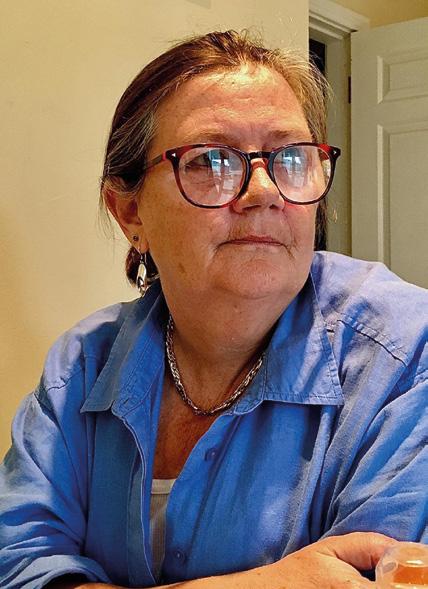
morning to try and find his son. He never did but what he did find were children living there by themselves. He would give them bread and bananas. They loved him and called him their granddad. I started going there every day. The old man said about one of the little girls that something was wrong with her. Her eyes were popping out of her head. She looked absolutely mental. She was about five or six.”
It turned out that Shanti (not her real name) had been raped and contracted gonorrhoea and syphilis. “We knew abuse was happening. She was our first case of a child totally destroyed. A group of children used to hang around with Shanti. They kind of


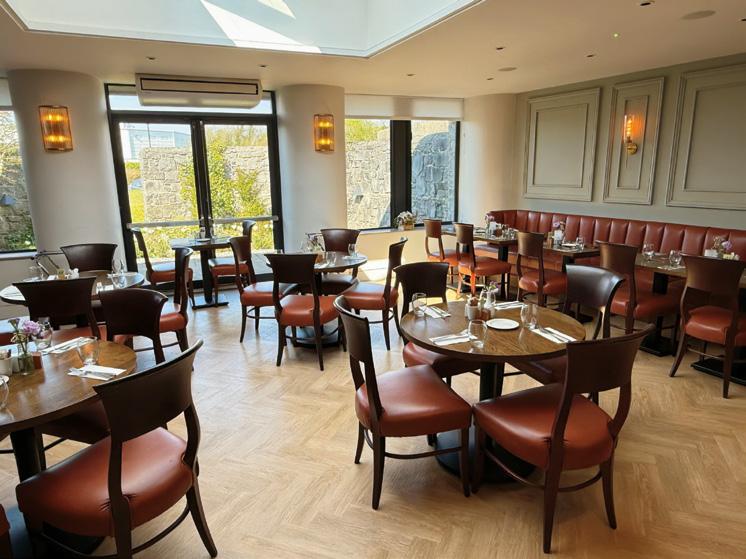
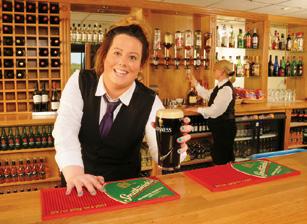




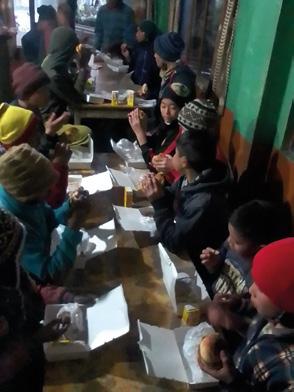


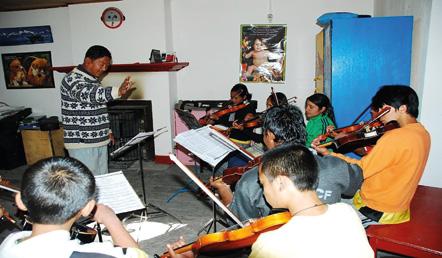
“She had a mother and a father and three brothers. The father was an alcoholic. The mother had been so badly abused that she actually left. One of Shanti’s little brothers had run away to Sealdah Station. To save himself, he would get on a train at night, sleep on it and come back on it in the morning. He was about four. The children were so smart; it was unbelievable. They did what they could to survive. Nobody would take Shanti into their homes as they saw her as tainted.”
Edith realised there was a big problem. “Samir suggested a halfway house. There, the children could be rehabilitated and moved out so we were not left with just one group. That’s how we started the foundation. We opened our first drop-in centre night shelter. It just grew from there. We ended up buying a building. John O’Shea came up trumps. (However, he was not initially happy when it transpired the cost of the building had been under-estimated by €100,000.) He called us ‘f**king eejits.’ But he was brilliant and of course he raised the money. We created eight apartments in the building. I moved into this halfway house. I had kind of created my own family. There were about twenty-five kids that were always with me and had no homes to go to.”
For those children that had parents, the EWSCF was able to reassure them that their kids were being educated and were staying in a boarding school. The foundation would give the parents food rations so they could look after their children during the school holidays. “It was brilliant. This was in the heart of Kolkata. I was in a flat that I was very proud of. My parents came out to see me. There was a red light district down a narrow lane. There was a butcher who had dead goats with the skin hanging out of them. I heard my father on the phone to one of my brothers saying my flat was in a tenement building and there was a brothel next door. I hadn’t copped that. I made great friends with ordinary people on the street; sex workers, drug addicts. They all looked out for me.”
Now, the EWSCF is based in Darjeeling. Due to the proximity of the city to the borders of Nepal, Bangladesh and Bhutan, Darjeeling is a route often used by child traffickers when smuggling children into India. To date, over 2,500 children have come through the foundation’s system in Darjeeling. There are over one hundred children directly in the system. Many more have been relocated to their homes.
These days, Edith lives in a council house in Crosshaven, County Cork, from which she runs the foundation, visiting India at least once a year. She adopted two Indian children; Omar and Karishma, now grown up, rearing them on job seekers allowance
and some help from her family. (She is the proud grandmother of Ethan.) Edith doesn’t take a salary from the foundation.
“Back in the early 90s, you were being offered $60,000 and a scholarship to Harvard. I could have signed up for two years and would have my own accommodation with everything paid for. I baulked at it. It didn’t seem right.”
Edith says she is in the process of handing over the running of the foundation to another bigger organisation that will supervise the programme. (The EWSCF receives Indian government aid.) “And I will retire. I have a grandson now. But I will always be going to India. It’s home to me.”
Does Edith feel that she sacrificed a lot in the interests of her voluntary work? “No. I had the most amazing time. How many people can say they adore what they do? I love what I do. I have the kids. It’s such an honour for those kids to trust us in the foundation and let me into their lives.
When Edith asked Shanti why she came with her on the first day she met her to visit a doctor, she replied: “’It was your eyes, mum.’ They all call me ‘mum.’ Shanti said she knew I was ok. She just felt it. Of all my foster kids, only one didn’t make it and is on the streets in Siliguri. But her son is with us in Darjeeling. Recently, four rapists in Darjeeling got twenty years each for raping our kids. We’re at that level now.”
Edith says that “all the children” the foundation deals with want to do what she does. “I say ‘no’!” She is proud of their achievements as they train and take up careers.
Mother Teresa was “an intense woman and tough...It was said she was Bible-pushing. But you know what, I sat on camp beds in which people were dying and these beautiful nuns (from Mother Teresa’s order) were running around, holding their hands and looking after them. A lot of them were skin and bones and couldn’t do anything.”
While Edith has seen the worst of humanity, she acknowledges “an amazing side too.” And indeed she epitomises the best side herself. She has no regrets. “I would do it all over again. There were bloody hard times and amazing times. You learn the whole time.”
Fundraising is what keeps the foundation going. For anyone wishing to donate, IBAN: IE48AIBK93434821439006. BIC: AIBKIE2D. (Bank account name: Edith Wilkins Foundation.)




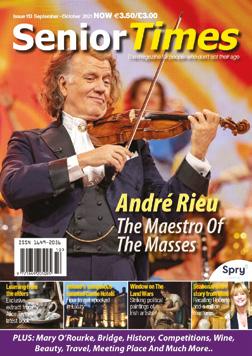





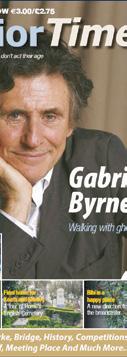


































Tucked away in the peaceful village of Knock, County Mayo, lies a hidden gem that’s capturing the hearts of those seeking rest, relaxation, and meaningful moments — Knock House Hotel.
Renowned for its genuine hospitality and tranquil surroundings, the hotel offers thoughtfully designed holiday packages that cater to a wide range of interests, each one created with comfort, community, and care in mind.
Step into the warm and inviting atmosphere of our newly refurbished Courtyard Restaurant with an in-built Bar, where comfort meets elegance. With its fresh new look and cozy ambiance, it's the perfect setting to enjoy superb home-cooked food, made with care from locally sourced ingredients. Whether you’re sharing stories over a hearty lunch or winding down with a glass of wine in the evening, the Courtyard is where great food and good company come together effortlessly.
Residential Retreat – Pilgrim Breaks
For those looking to nourish both body and soul, our Residential Retreat Pilgrimage Holidays offer a uniquely uplifting experience. Located just a stone’s throw from Knock Shrine, guests can enjoy the serenity of daily Mass, peaceful reflection, and spiritual renewal. This holiday also has a designated Spiritual Director appointed by Knock Shrine and is perfect for reconnecting with your faith in a setting that calms the spirit and inspires the heart.
Our Golden Years breaks are tailored for those aged 55+, combining warm companionship, delicious food and relaxing surroundings. It’s an ideal
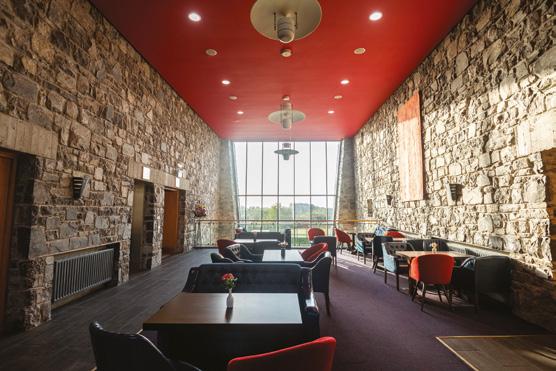
opportunity to take a step back from the bustle of everyday life and unwind in a friendly, relaxed environment where the only rush is for the next cup of tea that is served to you.
Spirit & Soul Holidays – Uplift Your Mind, Body, and Spirit
Our Spirit & Soul Holidays are a unique blend of inspiration, connection, and gentle exploration. This 4-night escape is more than just a getaway — it’s a chance to refresh your outlook and restore your energy in a calm and caring environment. Accompanied by our expert Guide, it includes complimentary guided tours, talks, music, and reflection, everything is thoughtfully arranged to nourish both the spirit and the soul. From delicious home-cooked meals to uplifting entertainment, you can relax knowing every detail is taken care of. Just arrive, settle in, and let the healing pace of Knock work its quiet magic whilst making new friends.
No Single Supplement – Because You Deserve It
Travelling solo should never come with extra costs — and at Knock House Hotel, it doesn’t have to. We’re proud to offer numerous no single supplement holidays throughout the year, so whether you’re travelling independently or just want a little extra space, you can enjoy your break without worrying about added charges. It’s just one more way we make your comfort and peace of mind a priority.
Book Your Magical Christmas Escape – Now with a Festive Bonus –ONE NIGHT FREE INLCUDED! And while the sun may still shine, there’s no better time to start thinking about the sparkle of Christmas. Our Christmas

Holiday Package is on sale now, offering all the warmth, joy, and festive cheer you'd expect — without the hassle of cooking or cleaning. For those who book early, we’re delighted to offer one extra night completely free of charge. It’s our gift to you — a little more time to enjoy fireside chats, gourmet dinners, and the spirit of the season, all wrapped in the comfort of Knock House Hotel.
So whether you seek reflection, companionship, celebration, or simply a break from the day-to-day, your holiday awaits in the heart of Mayo. Let Knock House Hotel be your home for a little while — where time slows down, and every guest becomes part of the family.
Come Say Hello!
We’ll be exhibiting at all the upcoming Senior Times Over 50’s Shows in Galway, Cork, and Limerick, and we’d love to meet you. Whether you're planning a personal getaway or looking to arrange a group booking, pop by our stand for a friendly chat and discover how Knock House Hotel can make your next holiday truly special.
Visit knockhousehotel.ie/offers to explore all our holiday packages and book your well-earned escape.

Phone number: 094 93 88088
Email: reservations@ knockhousehotel.ie

Bealtaine Festival, Ireland’s national celebration of the arts and creativity as we age, has officially launched its highly anticipated 30th-anniversary programme for 2025. This milestone edition will unfold across Ireland throughout May, offering an expansive lineup of performances and activities that both look back and look forward in a celebration of the diversity of ageing.
The Bealtaine Festival, an initiative of Age & Opportunity, is proudly funded by the Arts Council and the HSE, with the support of communities nationwide and a vast network of accomplished local and national bodies.
To kick off the anniversary celebrations, Bealtaine Festival will host an action-packed opening weekend at the Project Arts Centre in Temple Bar, Dublin. From morning to night, visitors can enjoy three days of vibrant and fun arts activities, showcasing a variety of artforms and events. In addition to the opening weekend at Project Arts Centre, events will take place throughout Temple Bar and across the country. For those unable to attend in person, a range of online activities will ensure that everyone can participate in the spirit of Bealtaine.
Following the opening celebrations, the festival will continue throughout May, with creative events held in libraries, arts centres, care homes, and outdoor community spaces nationwide. This year’s programme promises to be a dynamic and engaging celebration of arts and creativity, embodying the Bealtaine Festival theme, Lust for Life, inspired by the iconic Iggy Pop classic.
The 2025 programme comprises a variety of events and workshops across film, literature, music, performing arts, visual arts, and civil society and politics. Standout events include The Human Library, Invisibility: New Superpower, Prom Night Portraits, and much more.
Dr. Tara Byrne, Arts Programme Manager and Bealtaine Festival Artistic Director, Age & Opportunity, said:
“We couldn’t be more excited to launch the Bealtaine Festival 2025 programme, especially as we celebrate 30 incredible years!

The enthusiasm from organisations and artists has been truly inspiring, and we’re delighted to build on past successes to bring even more people together across Ireland this May. With our theme ‘Lust for Life,’ this special anniversary edition will be a joyful tribute to passion, resilience, and creativity at every age. Come celebrate with us and make this 30th birthday one to remember”.
Bealtaine Festival is an initiative of Age & Opportunity, funded by The Arts Council and the HSE. Age & Opportunity is the national organisation working to enable the best quality of life for us all as we age.
Tickets and further information on Bealtaine Festival events are now available via bealtainefestival.ie.
Four copies of A Writers Life by Aubrey Malone
safeguard our
That’s a tough question as the groundrules keep changing hourly.
But here’s the story to date: President Trump caused world markets to plummet by slapping huge tariffs on nearly every country.
Then he reduced most tariffs – while racking up those on China to 145%, a level at which trade is basically impossible.
The resulting mayhem diverted attention from other actions that would’ve been seismic at any other time.
Trump threatened to fire the head of the US Federal Reserve Jerome Powell –which would break a sacred tradition of US central bank independence that’s the bedrock of global financial stability.
Then President Trump seemed to back down on his threat to fire Powell and claimed he would substantially reduce Chinese tariffs as things were going so “well” with China – a claim China instantly rejected as having “no factual basis”
A Chinese State spokesman said: "Any claims about the progress of China-U.S. trade negotiations are groundless as trying to catch the wind."
Where we go from here is anyone’s guess. But the point of view of managing our finances, only one thing is certain –uncertainty.
And that’s bad for business and bad for all our pockets. But here’s what we can reasonably expect to happen – and what we can do about it:
The chances of a global recession were put at 60% recently by US bank JP Morgan Stanley.
But JP Morgan concedes that this figure will fall if Trump rows back his plans, as he is under enormous pressure to do.
However, a lot of damage has already been done, so whatever happens, the global economy is still headed for rocky waters.
Ireland gets over a quarter of its State revenue from corporate taxes on a handful of US companies.
So we are particularly vulnerable, especially to tariffs on pharmaceuticals.
The markets slumped due to Trump’s tariffs.
They would have collapsed altogether, and may still do, but for one thing: markets don’t fully believe the US president will follow through on his plans.


If he does, they will tank further – and if he rows back, they should rise.
In the meantime, investors should liaise with their financial advisors and read our panel on veteran investor Warren Buffett.
When it comes to China, Trump seems to have picked a fight ‘with the wrong dragon’ -and one that he’s finding it hard to disengage from.
A US president who has the worst 100-day approval rating in recent history has to keep an eye on a fickle public and a critical press as US mid-term elections loom in 2026.Chinese Premier Xi Jinping, on the other hand, has just told his people to “eat bitterness”- i.e. tough it out.
After US vice-president JD Vance dubbed the Chinese people “peasants,” Xi now has what every totalitarian leader needs - a handy foreign ‘villain’ to blame all his country’s woes on and unite its people to fight back.
Chinese propaganda has already invested heavily in vilifying Trump and Vance, a position that’ll be hard to row back from.
While Trump’s ‘plans’ seem to change by the hour, China’s are also meticulously prepared decades in advance.
“From the Democratic Republic of Congo (DRC) to Botswana and Zimbabwe, Chinese companies have spent more than US$10 billion acquiring mining and critical mineral assets in Africa. These investments in minerals like cobalt, lithium and rare earths were mostly secured in 2023 and 2024.”
Trump seems to have admitted things are not all going his way by pledging to greatly reduce tariffs, while China continued to play hardball, demanding all tariffs are removed.
Where this goes is up in the air, but to use a Trump analogy, China seems to have a lot of cards to play - unlike the US President.
As we found out during the 2012 financial crisis, you know we’re in trouble when we’re talking about the ‘bonds market’.
And yet, here we are…
Bonds are sort of IOUs issued by Governments to borrow money. And when Government finances get shaky, the rate goes up along with their risk, which can make borrowing unaffordable.
James Carville, former US President, Bill Clinton's political strategist once said: “If there’s reincarnation..I want to come back as the bond market.”
And what he meant was that the bonds
market is the most ruthless and powerful arbiter of political destiny. Nobody, not even a US president with autocratic leanings and control of both houses can control it.
It’s where fanciful policy meets hard reality as Liz “The Lettuce” Truss found out when her UK premiership famously lasted less time, apparently, than the leafy salad plant that inspired her nickname.
Truss unveiled a plan to cut taxes without cutting that much spending. The markets didn’t like it and shoved up interest rates on UK government bonds to a level it couldn’t afford. Bye bye, Liz and her
As stock markets tanked recently following Donald Trump’s onslaught of tariffs, guess who came out on top?
Anyone with a keen interest in investing will probably guess: Warren Buffett.
The wily 94-year-old has been outfoxing the markets for nearly three quarters of a century - and he just did it again. That should be an inspiration to anyone getting on in life who’s worried about how long they can stay on top of their game!
Buffett famously runs his investment empire from the little-known city of Omaha Nebraska, where, like Donald Trump, he likes to dine on MacDonald’s takeaways on his way to work.
But that’s where the comparison ends.
When Trump was elected, the markets soared on the belief that he was ‘good for business’ on the simplistic assumption that a Republican president will help companies make more money by easing regulations and lowering taxes. But Buffett had an inkling of the chaos to come and followed his maxim: “Be fearful when others are greedy and greedy only when others are fearful.”
With stock markets hitting new highs, year after year, Buffett knew it was time to get out of shares – for a while at least – and cash in the enormous profits on some of his long term holdings. So he moved much of his wealth out of shares and into secure investments like cash. And as Trump unleashed chaos on the markets, his wealth soared this year by another $19bn to $161 billion. If you want to literally take a leaf out of Buffett’s book, here are some of his tips for investing:
Focus on value
'Our favourite holding period is for ever'. Berkshire Hathaway's portfolio bears out Buffet’s famous maxim. It has held shares in Coca-Cola for more than 35 years and American Express for 30.
finance minister. We also knew ‘the jig’ was up in the last financial crisis, when Irish bonds hit 14%.
Things didn’t get quite as bad for Donald Trump when he was called to account by the $29 TRILLION market bond market. But even a spike in rates above 5% made him change his tune.
This market relies on trust and goodwill towards the US from a host of debtor countries who lend it money, yet are rapidly losing faith in Donald Trump.
And guess who’s possibly the leading holder of US treasuries? Yep, those
Buffett ignores fads and hype and buys shares in companies in well-regulated markets that make money by doing something useful. He doesn’t, for example, buy cryptocurrencies, which he has described in 2018 as “probably rat poison squared.” Being a value investor like Buffet doesn’t mean buying the cheapest stocks. He targets quality stocks at reasonable prices. He buys into companies with solid profits that will gradually grow and provide capital appreciation for many years into the future.
Don’t try to ‘time’ the market Frequent trading racks up dealing costs – and eats up your time. You’re also competing with professional traders who have speedier platforms – and quicker access to information with the resources to also crunch through it quickly. Betting against them on a daily basis can be a mug’s game – a bit like betting against the bookies.
But Buffett’s philosophy suits amateur investors as it has always been to buy and hold, an approach that has made him the world’s most celebrated investor.
Time - not timing - is the key "If you aren't willing to own a stock for 10 years, don't even think about owning it for 10 minutes." Investors in shares can spare themselves a lot of stress – and make more money – by holding on for the long term as Buffett advises above. Buffett often waxes lyrical about the benefits of long term investing and the magical impact of compound interest if your holdings grow by even a little bit year after year. “In the 20th Century, the US endured two world wars, the depressing, a dozen recessions and financial panics, oil shocks, a flu epidemic…Yet the Dow rose from 66 to 11497,” he once said.
Passive investing
Not everyone can be a stock-picker like Warren Buffett. In fact, building up a portfolio can take a lot of time and research that’s beyond most people.
aforementioned Chinese “peasants” that Trump and Vance have riled so insultingly. Apparently, the Japanese - holders of a trillion bucks worth of US bondswere the most prominent sellers of US treasuries in the market rout that brought Trump to heel.
But the next biggest lender to the US is China – officially – with $760bn worth. Unofficially, though, China may even be the biggest – and therefore most powerful – holder of US treasuries, if unknown indirect holdings are included. And that would place Trump in a very uncomfortable position if they ever decide to sell them off.
As such, Buffett does not decry passive investments for small-time investors, who can buy into low-cost funds that spread their risk.
These usually follow an index – such as the S&P 500, which invests in the 500 largest companies in the US. Despite turbulence on the markets, an S&P investor would have gained 2.6% so far this year (to nearend of April) – and a whopping 91% over five years.
Buy into Buffett
Shares in Berkshire Hathaway are traded on most large investment platforms. Alternatively, you could seek out funds or investment advisors that are aligned with his philosophy, such as Ireland’s Gillen Markets, which expounds the Buffett philosophy of ‘value investing.’
Founder Rory Gillen has even travelled to Berkshire Hathaway’s annual general meetings to hear the Sage of Omaha’s advice first hand!
NOTE: Amateur investors should consult financial advisors before making any decisions with pensions and investments.

Veteran personal finance journalist Bill Tyson writes for the Irish Mail On Sunday and has three national media awards under his belt. Formerly Personal Finance Editor of the Irish Independent and reporter on RTE’s The Consumer Show
Name:
Address:
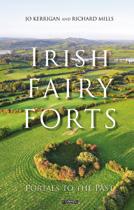
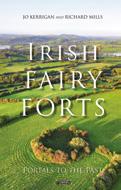
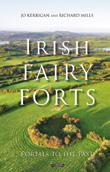
1 Warmest season of the year (6)
4 Black & white bamboo-eating mammal (5)
7 Group that sings as part of religious ceremony (5)
10 City that was once Constantinople (8)
18 SE Europe republic, colours are blue & yellow (7)
19 Slender, graceful young woman (5)
20 Ruth ___, author of Inspector Wexford books (7)
21 Decorate or embellish (5)
22 Law or regulation than can lure you! (4)

23 Arm of the Mediterranean between Greece & Turkey (6,3)
24 Kevin ___, acted in ‘The Bodyguard’ (7)
26 Ages old and wise herb! (4)
30 In France, it is ‘again’ (6)
32 Don’t berate this refund! (6)
34 Enlarge, spread out or stretch (6)
35 Female fox (5)
39 Saint ___, author of first Gospel (7)
40 Boris ___, Russian author of ‘Dr Zhivago’ (9)
42 There’s an alive ant on this Co Kerry Island! (8)
47 Product of human creativity (3)
48 Arachnid with eight legs, spins a web (6)
49 Bill __ sang ‘Rock around the Clock’ (5)
50 Hard substance under a tree’s bark (4)
51 Award or trophy (5)
54 North ___ Island is in Dublin Bay (4)
55 Revere - at an even rate! (8)
56 Its capital city is Cairo (5)
57 Retail merchant selling food (6)
60 Maybe Graham lives in this northern county! (6)
63 Bring together in common purpose (5)
65 Our national plant (8)
67 Is there more to this Italian capital? (4)
71 Large, keen-sighted bird of prey (5)
72 Cairo stands on this river (4)
73 Take a boot to this ban or inhibition! (5)
74 He suffers death for refusing to renounce religion (6)
75 Colour or tone (3)
78 Young person between 12 and 20 (8)
79 Greatly pleased (9)
80 In a hurried manner (7)
84 Official who shows one to a seat in theatre (5)
86 Small node (6)
87 Long seat or sofa (6)
88 Characterised by dignity or propriety (6)
92 Thought or notion (4)
93 Interior passage onto which rooms open (7)
94 One in RTE such as David McCullagh (9)
96 Open vessel with handle and spout (4)
101 Jewelled headdress worn by women (5)
102 Building where plays and operas are performed (7)
104 Sales stand in a market (5)
105 Green jewel or ___ Isle (7)
106 The animals came into it two-by-two (4'1,3)
107 Nation - if you’ve a taste for it! (5)
108 Sheen or glaze (5)
109 The ___ of Moher, at 155m high in Co Clare (6)
Either grey or red - it has a bushy tail (8)
US movie star, ___ Streep (5)
It’s the way out (4)
Responded or replied (8) 6 US songwriter, Bob __ or Welsh poet, __Thomas (5)
Man distinguished by courage & strength (4)
Hotel or lodge providing accommodation (3)
Soft white precious metal or posh cutlery! (6)
Not at home (4)
Thick heavy fabric with raised pattern (7)
Surgical knife (6)
Soft hat worn by French men (5)
Dairy product such as Roquefort or Cheddar (6)
Boyzone singer Ronan __ (7)
Child who has lost both parents (6)
Do potters express opposition? (7) 28
Temporary relief from punishment (8) 29
Fab Four came from this UK city (9)
Located on or near where land meets sea (7)
33
Islands - Inishmore, Inishmaan & Inisheer (4) 36
Italian city built on 118 islands (6)
37 Can this small canine pet sit on your knees? (6) 38
Small mallet using by presiding officer or judge (5) 41 Taunt, pester or persistently annoy (5)
43
Light string (5) 44
45
Type of cat with patterned coat (5)
Republic in S America on the Caribbean (9)
46 Is there a dam rotter in the Netherlands? (9)
52
Leinster county formerly Queen’s County (5)
53 Sinatra sang ‘I did it __ __‘ (2,3)
58
59
61
One hired to look after a property (9)
Annoyed or harassed (5)
Scoundrel or villain (5)
62 German composer of ‘Messiah’ (6)
64 Tester or Munster newspaper? (8)
65
66
Slow-moving mammal - disinclined to work? (5)
Snooze or short sleep (6)
68 Female character in ‘Hamlet’ (7)
69 Triangle where river divides before entering sea (5)
70 20th century English composer, Benjamin ___ (7)
76 Singer ___ Clark, she sang ‘Downtown’ (6)
77 Hole for escape of air (4)
81
Very large rock or mass of stone (7)
82 Taoiseach 1992-94, Albert ___ (8)
83 Is there a beer dish on islands off Scotland? (8)
85 19th c. Czech composer of ‘Má Vlast’ (7)
87
89
Emphasise or single out as important (6)
Journalist and drama critic ___ O’Toole (6)
90 He serves in a restaurant (6)
91 Insurgent or freedom fighter (5)
95
97
98
Cloak used to cover head & shoulders (5)
Quay or platform for ships to access (5)
Sweet potatoes (4)
99 There are three in a yard (4)
100
103
Small room in a prison or monastery (4)
Small amount of alcohol or young child (3)

Mairead Robinson checks out the importance of collagen in our skin care regime.
When it comes to looking after our skin, and using products that we hope will help to keep our skin fresher and younger looking as the years go by, there is one ingredient that we are always hearing about that is key to plump, healthy, youthful looking skin. And that is collagen. So what is it, and why is it so important?
Basically collagen is a protein in the body which is key in keeping the skin looking youthful and healthy. However, what most people do not realize is that by the time most of us begin to take our skin care seriously and apply a regime that will help to keep us looking youthful, we have already lost a huge amount of the collagen protein. It can start to decrease in our twenties and by the time we reach forty, we have already lost a significant amount of this vital protein.
In recent years we have seen and heard a lot about using collagen as part of our skin care regime. What is interesting is that many people are now ingesting collagen, and not just using creams that contain it as an ingredient. More and more people are claiming that the secret to their plump healthy skin is that they put a few drops into their morning coffee!
Some years ago I was sent little sample tubes of collagen to try, and while I was excited about the possible benefits, I could not stomach the thick sticky liquid, and so I did not make it a regular part of my regime. However now, I am very excited to see a range of products from favourite beauty brand, Clarins, which include a herbal tea that promotes collagen production and improves skin elasticity! This Extra Firming Blend Herbal Tea really does support your skin from the inside out, it is infused with nettle and horsetail and it definitely tastes lovely!
I have been a fan of Clarins’ day and night moisturisers for some years now, but their new range contains collagen for ‘extra-firming technology’ and it really does lift the range on to a whole new level.
Basically their research has found a way to act on collagen, to preserve and boost the skin’s youth by simultaneously targeting its quality, quantity and structure. This is a new way to increase the skin’s collagen reserves. Good news for those of us who have not been topping up our collagen reserves since our 20s!

This new Extra-Firming range is a complete rejuvenating skin care with a triple pro-collagen action to stimulate the skin’s own resources and help it increase its collagen reserves. It contains a trio of pro-collagen key ingredients to help fight loss of skinfirmness. These are Pecan Tree Extract, Collagen Polypeptide and Organic Mitracarpus Extract. The result of this research has found that the skin’s collagen reserves are increased by 53%.
These new skin creams are proven extra effective in Clarins’ laboratories’ tests. They have produced a day cream and a night cream as our skin has different needs during the day and at night. At night our skin is at rest, so this is an opportunity to renew itself. Known as the Golden Hours – between 11pm and 2am, the skin benefits from Avocado peptides. The extra-firming day cream has a creamy texture that is quickly absorbed so there is no need to wait before applying make-up.
Check out your local pharmacy for Clarins Extra-Firming day and night creams with their lift-effect, wrinkle-smoothing and revitalizing results. Your skin will feel the difference.

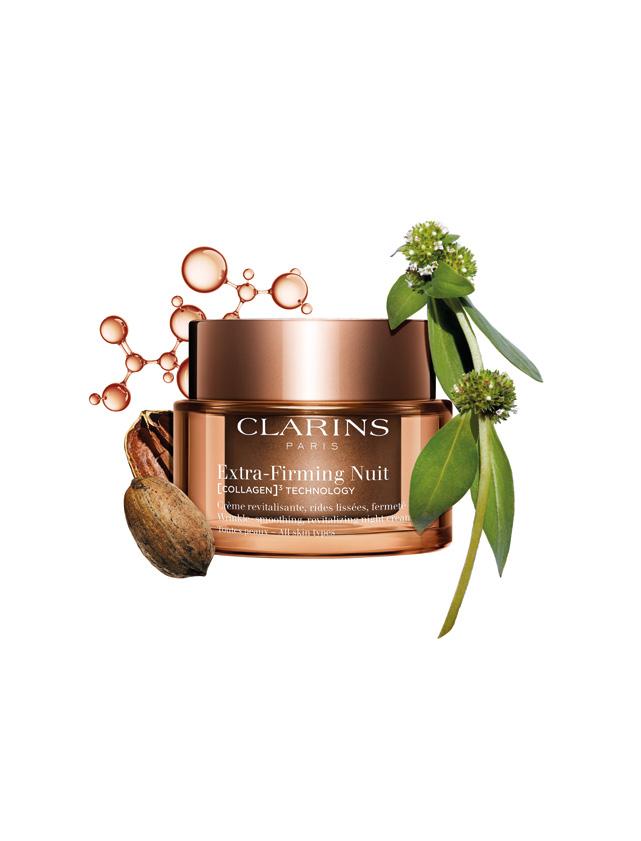
stylish, family-run 4-star boutique hotel, making it a popular choice for exploring Donegal or enjoying a relaxing getaway. Guests can unwind at the award-winning V Spa, indulge in delicious dining with both casual and à la carte options, and experience a warm, welcoming atmosphere.
An Chúirt Hotel, Gweedore
Discover the perfect over-50s getaway with one of the Gallen Group’s three exceptional hotels nestled in the heart of Donegal. Our hotels provide the ideal setting for your next adventure. Explore the Wild Atlantic Way and enjoy countless beautiful scenic locations, golf, walking, shopping & spa relaxation.
Jackson's Hotel, Ballybofey
Situated along the tranquil River
Finn & Drumboe Woods, Jackson's Hotel is a family-run 4-star Hotel in Ballybofey. With a heated indoor pool and gym, and dining & drinks options like Fara’s Bar and The Thirsty Trout, Jackson's is the perfect base for exploring Donegal and the Wild Atlantic Way.
Villa Rose Hotel & Spa, Ballybofey
The Villa Rose Hotel & Spa is a
For an authentic Donegal experience, An Chúirt Hotel is situated at the foot of Errigal Mountain, surrounded by rugged coastlines, lakes, and beaches. This 4-star hotel offers spacious accommodation, socialising & dining opportunities at Fara Óg’s Bar & Restaurant, and the Duck Restaurant. The Earagail Health Club provides facilities including a sauna, Jacuzzi, hydro pool, and swimming pool, ensuring a rejuvenating stay.
For more details go to www.gallengroup.com

NORTH WEXFORD LADY 65 NS, SD own house and ca, WLTM a kind and honest gentleman of similar age (ie umder 70) with similar interests I like walking in nature, travelling at home and abroad, eating out, coffee in nice surroundings, reading, social dancing etcv. Am seeking a long-term respectful relationship.
REPLY TO BOX NUMBER B1
DUBLIN GENT 72 retired professional, 5ft 11in, good appearance, NS, SD. Many interests including music, dancing, walking, current affairs, reading, cinema, eating out, bridge, travel home and abroad etc. Sociable, kind and loving personality. WLTM warm hearted educated lady with some of these interests.
REPLY TO BOX NUMBER B2
CORK LADY 72 WLTM gent for outings and events, theatre etc and craic.
REPLY TO BOX NUMBER B3
I AM A RETIRED PROFESSIONAL WOMAN in my seventies living in South Dublin. I am fit and healthy and enjoying my retirement to the full. I play golf and enjoy going to the National Concert Hall for various events. I enjoy history, literature and philosophy and popular sciences events and various life-long learning classes I also enjoy good conversation on a range of topics including politics. I am divorced for over 20 years and have, I’m told , a nice smile. WLTM gent of similar age and interests
REPLY TO BOX NUMBER B4
SOUTH DUBLIN WIDOW LATE 70s.NS SD WLTM gent of similar age to share the simple things in life..coffee, chats, walks. theatre etc. Also to soak up the sun on trips abroad and do the things that are not fun doing alone. REPLY TO BOX NUMBER B5
VIVACIOUS SDOUTH DUBLIN LADY 60s WLTM gent late 60s early seventies, NS SD . Interests include music, eating out, travel at home and abroad. Looking for someone to share all the good things life has to offer. REPLY TO BOX NUMBER B6
PROFESSIONAL LADY, TALL, SINGLE, RC WLTM a single gent 5ft 11-6ft with good dress sense for social outings . Many interests including world travel, concerts, reading, theatre, cinema, cooking, animals, charity work, current affairs, swimming, ballroom dancing , A big plus if you can dance. Must be of a generous nature and have a car. REPLY TO BOX NUMBER A1
LADY, 69, VERY YOUNG AT HEART living in Dublin.Originally from Meath. NS, SD, Very witty. I would like to meet a nice
NB: When replying to advertisements give only your phone number and/or your email address. Do not give your postal address!
guy who is interested in movies, plays, concerts, travel home and abroad, walks, swimming, dining out and relaxing . Yippee! REPLY TO BOX NUMBER A2
MID WEST WIDOW, caring, a good listener having a positive outlook, enjoying travel, gardening, art, current affairs, armchair sports and socialising.. WLTM a good natured, kind happy and interesting good humoured NS gent in 70s for developing friendship and companionship and shared activities.
REPLY TO BOX NUNBER A3
SOUTH EAST GENUINE, SINCERE LADY, 70s, ND, NS, slim, kind, loving and caring, pleasant personality/ Interests include cooking, music, entertainment, dining out, travelling and sight seeing. WLTM catholic gent 70 - 75 with similar interests for companionship.
REPLY TO BOX NUMBER A4
KEEN PHOTOGRAPHER WLTM those with similar interest in photography for meetings, outings etc.
REPLY TO BOX NUMBER A5
SEMI-RETIRED BUSINESSMAN 70s living in the Midlands. Tall, slim and of good appearance. Very kind and generous. Interests include most type of music, dancing, cycling and walking, eating out and short breaks. WLTM lady with similar interests.
REPLY TO BOX NUMBER A6
LADY 69 young at heart living in Dublin but originally from Meath. WLTM a nicer guy who is interested in movies, concerts, travel home and abroad, walking, swimming, dining out and relaxing.
REPLY TO BOX NUMBER A7
DUBLIN PROFESSIONAL GENT EARLY 70s. GSOH, NS< SD medium height, neat appearance. Interests include ,music, social dancing, travel home and abroad, current affairs, reading, theatre, cinema, eating out and sport. WLTM lady 65-with similar interests and zest for life.
REPLY TO BOX NUMBER A8
NORTH CO DUBLIN BASED LADY slim, 5ft 4in WLTM a superbly compatible gentleman. My interests are varied but include walking, dancing, reading, classical and 60S music, travel. Someone well educated and with a GSOH to boot would be appreciated. REPLY TO BOX NUMBER A9
KILDARE MAN MID 70s fit and slim and good appearance WLTM a lady 65-75 to share music, dancing and eating out REPLY TO BOX NUMBER A10
NORTH DUBLIN WOMAN LATE 60s WLTM social gent. All my life I have been involved in sport, playing coaching etc. I play golf now. Major rugby fan, Have worked and still work as movie extra and sometimes appear in ads. Love to dance when the knees allow Moderate drinker, but like a G&T. The ball is in your court now. Cheers! REPLY TO BOX NUMBER A11
PROFESSIONAL LADY, TALL, SINGLE, RC WLTM a single gent 5ft 11-6ft with good dress sense for social outings . Many interests including world travel, concerts, reading, theatre, cinema, cooking, animals, charity work, current affairs, swimming, ballroom dancing , A big plus if you can dance. Must be of a generous nature and have a car. REPLY TO BOX NUMBER A1
LADY, 69, VERY YOUNG AT HEART living in Dubli.Originally from Meath. NS, SD, Very witty. I would like to meet a nice guy who is interested in movies, plays, concerts, travel home and abroad, walks, swimming, dining out and relaxing . Yippee! REPLY TO BOX NUMBER A2
MID WEST WIDOW, caring, a good listener having a positive outlook, enjoying travel, gardening, art, current affairs, armchair sports and socialising.. WLTM a good natured, kind happy and interesting good humoured NS gent in 70s for developing friendship and companionship and shared activities. REPLY TO BOX NUMBER A3
SOUTH EAST GENUINE, SINCERE LADY, 70s, ND, NS, slim, kind, loving and caring, pleasant personality/ Interests include cooking, music, entertainment, dining out, travelling and sight seeing. WLTM catholic gent 70 - 75 with similar interests for companionship.
REPLY TO BOX NUMBER A4
KEEN PHOTOGRAPHER WLTM those with similar interest in photography for meetings, outings etc.
REPLY TO BOX NUMBER A5
SEMI-RETIRED BUSINESSMAN 70s living in the Midlands. Tall, slim and of good appearance. Very kind and generous. Interests include most type of music, dancing, cycling and walking, eating out and short breaks. WLTM lady with similar interests.
REPLY TO BOX NUMBER A6
LADY 69 young at heart living in Dublin but originally from Meath. WLTM a nicer guy who is interested in movies, concerts, travel home and abroad, walking, swimming, dining out and relaxing.
REPLY TO BOX NUMBER A7
DUBLIN PROFESSIONAL GENT EARLY
70s. GSOH, NS, SD medium height, neat appearance. Interests include ,music, social dancing, travel home and abroad, current affairs, reading, theatre, cinema, eating out and sport. WLTM lady 65-with similar interests and zest for life.
REPLY TO BOX NUMBER A8
NORTH CO DUBLIN BASED LADY slim, 5ft 4in WLTM a superbly compatible gentleman. My interests are varied but include walking, dancing, reading, classical and 60S music, travel. Someone well educated and with a GSOH to boot would be appreciated. REPLY TO BOX NUMBER A9
KILDARE MAN MID 7Os fit and slim and good appearance W;TM a lady 65-75 to share music, dancing and eating out
REPLY TO BOX NUMBER A10
NORTH DUBLIN WOMAN LATE 60s
WLTM social gent. All my life I have been involved in sport, playing coaching etc. I play golf now. Major rugby fan, Have worked and still work as movie extra and sometimes appear in ads. Love to dance when the knees allow Moderate drinker, but like a G&T. The ball is in your court now. Cheers! REPLY TO BOX NUMBER A11
RETIRED GENT living in D4 and a Dubliner, by birth, born in 1954. I worked for the UK and EU civil service in a professional inspection role throughout my career. My interests are various including keeping fit, going for a pint (moderately), dancing. I can play golf also. I read a fair bit too.WLTM lady of similar age and with similar interests for socialising and perhaps a relationship.
REPLY TO BOX NUMBER U3
DUBLIN MALE, SEPARATED. 72 YEARS YOUNG. Young at heart, slim built and fairly fit, NS SD. Good conversationist, neat appearance, GSOH. Like the great outdoors, country walks and weekends away, Interests include traditional and classical music and fine dining. WLTM a nice lady with similar tastes and zest for life who would like some male company.
REPLY TO BOX NUMBER U4
DUBLIN FEMALE EARLY 60s, ND seeking new genuine companions either sex. Interests include cinema, theatre, music and outings. Friendly GSOH. REPLY TO BOX NUMBER P1
CORK MALE 60s seeking female companion. Interest include walking, cycling, yoga and dancing . Also I enjoy concerts, film theatre and dancing. Enjoy cooking healthy food at home and eating out and the odd drink or two. Would like to share my interests with a suitable female. REPLY TO BOX NUMBER P2
MID WEST RETIRED PROFESSIONAL LADY, slim and active with a wide range of interests including walking, travel, current affairs, cultural events, WLTM sincere gentleman of similar disposition.
REPLY TO BOX NUMBER P3
MIDLANDS WIDOW EARLY 70s Down to earth with good witty sense of humour, WLTM smart, humble gentleman/ companion who likes good chats, laughs, coffee, music and culture. Preferably Midlands area or near abouts.
REPLY TO BOX NUMBER P4
RETIRED TIPPERARY-BASED BUSINESSWOMAN, 70s, seeks male companion. Interests include travel at home and abroad, good conversation, reading and gardening. WLTM male with similar interests for relationship.
REPLY TO BOX NUMBER P5
CORK LADY 70 WLTM sincere gentleman with a good sense of humour for socialising, theatre, dancing, travel, theatre etc. REPLY TO BOX NUMBER P7.
SINCERE KIND MIDLANDS WIDOW WLTM a warm-hearted, educated gentleman, preferably a widower, for coffee and chats. I’ve a GSOH and am a good listener. REPLY TO BOX NUMBER P8
MID-ATLANTIC WAY PROFESSIONAL LADY, NS, 60s WLTM LADIES of similar age for coffee, outings, dance classes, music events, sun holidays etc.
REPLY TO BOX NUMBER P9
KEEP IT COUNTRY. LADY, sincere, NS. Interests include ceili music, a little gardening, reading etc. WLTM gent 65-72 for companionship.
REPLY TO BOX NUMBER P10
GENTLEMAN EARLY 70’s in Clare/ Galway area. GSOH. NS. Interests include social dancing, hiking, sport, cinema and travel. Separated for many years. WLTM genuine lady with similar interests and a ‘can do’ attitude. Age range 65-75. REPLY TO BOX NUMBER L1
RETIRED? ENJOY TRAVEL? And would like to meet new female travelling companions, particularly from Mid-West general area? Let's meet, connect in a small group and share travel ideas and plans. REPLY TO BOX NUMBER L2
PROFESSIONAL, FIT AND ATTRACTIVE LADY (widow 65yrs), Dublin- based, Enjoys travel, sailing, dining out etc GSOH. WLTM single sincere gentleman for friendship.REPLY TO BOX NUMBER L3
SOUTH EAST LADY 64 WLTM sincere, kind, good humoured gentleman around same age group. Interests include music,
cinema, walking, dancing and holidays at home and abroad. Own car. NS SD GSOH. REPLY TO BOX NUMBER L4
SOUTH DUBLIN BASED PROFESSIONAL man, 72, NS, SD GSOH, fairly tall, medium build, good appearance. Interests include various types of music, ballroom dancing, walking, theatre, cinema, current affairs, reading, gardening, eating out travel at home and abroad. Outgoing, kind and loving personality. Happy to exchange recent photos. WLTM lady 65-75 to share some of those interests. REPLY TO BOX NUMBER L5
TO PLACE AN ADVERTISEMENT
If you are interested in meeting someone of the opposite or same sex, send your advertisement, with four stamps (which is the average reply rate) enclosed in the envelope, to:
Meeting Place, Senior Times, PO Box 13215, Rathmines, Dublin 6
Or email: john@slp.ie
NOTE: When submitting advertisements ensure you include your surname as well as your christian name.
Ensure you give your approximate age and the area you live, noting your interests. The advertisement should not be more than 60 words.
If you are replying to the advertisement via Senior Time’s email, ensure you include your postal address for those not on the Net. (Only Senior Times will have these details).
Deadline for receipt of advertisements for the next issue is June 24th 2025.
TO REPLY TO AN ADVERTISEMENT
Each reply to an advertisement should be enclosed in a plain, stamped envelope, with the box number marked in pencil so that it can be erased before being forwarded to the advertiser. Send these envelopes in a covering envelope to the address , above, so that we can forward them to the advertiser. There is no limit to the amount of advertisements to which you can reply, provided each one is contained in a plain, stamped envelope. Ensure you give your approximate age and the area you live.
For those submitting their advertisements by email ensure that you also supply Senior Times with your postal address so that we can post replies from those who have replied by post. (Only Senior Times will have your postal address).
One of the great contributions of this country to humour is the Limerick, probably named after our own beloved city and county of Limerick. I remember first hearing them when I was a teenager and I was entranced by their cleverness and wit. Two of the first ones I heard, told to me by my father, were the following:
There was a young lady of Riga Who smiled as she rode on a tiger They returned from the ride
With the lady inside And the smile on the face of the tiger
By Des MacHale
There was a young lady of Ryde Who ate too many apples and died The apples fermented Inside the lamented She had cider inside her inside
It is said that an author once wrote a Complete Book of Limericks in three volumes. Volume One was Limericks You Can Tell to Your Maiden Aunt; Volume Two wasLimericks You Can Tell to Clergymen, and Volume Three was just Limericks, and it must be admitted that the vast proportion of Limericks are unprintable. Inevitably, there are several excellent Limericks drawing attention to this fact. Here are a few of the best of them
The Limerick is furtive and mean
You must keep it in close quarantine Or it sneaks to the slums Where at once it becomes Disorderly, drunk and obscene
The Limerick packs laughs anatomical Into space that is quite economical
But the good ones I’ve seen So seldom are clean And the clean ones so rarely are comical
The Limerick tells of a scene Which often is crude or obscene But if filth’s what you’re after To bring about laughter Then tough, because this one is clean
Anon., Idem, Ibid, and Trad Wrote much that is morally bad
Some ballads and shanties
All poems about panties And Limericks too one must add
The Limerick’s admitted a verse form A terse form,a curse form,a hearse form It may not be lyric And at best it’s satyric But a whale of a tale in perverse form
Well, it’s partly the shape of the thing That gives the old Limerick its swing Its rhythm and metre Which couldn’t be sweeter Take it up like a kite on a string
My grandchildren, Becky, Josef, Elly and Emily absolutely love Limericks, especially if they have just a hint of rudeness, so one has to be very careful. Here are two that made them laugh uproariously;
A wonderful bird is the pelican
His beak can hold more than his belican
He can hold in his beak
Enough food for a week And I’m darned if I know how the helican
Consider the poor hippopotamus His life is extremely monotonous
He lies half asleep
At the edge of the deep And his face is as big as his bottom is
The Limerick is callous and crude Its contents distressingly lewd It should not be read By people well-bred It’s designed for the vulgar and rude
Not everybody loves Limericks. The great Sir W. S. Gilbert of Gilbert and Sullivan fame was pestered by people asking him to compose Limericks on their favourite topics. Here are two he came up with:
There was an old man of the Lee, Who was stung on the arm by a wasp
When asked ‘Does it hurt?’ He replied, ‘No, it doesn’t
But I’m glad it wasn’t a hornet’
Oh, my name is John Wellington Wells I’m a dealer in magic and spells
In blessings and curses And ever-filled purses In prophecies, witches and knells
The Limerick’s an art form complex Whose contents run chiefly to sex It’s famous for virgins And masculine urgins And vulgar erotic effects
I must admit that my favourite Limericks are not the rude or obscene ones, but the really clever ones where the final line comes as a complete surprise that provokes sudden laughter. Here are a few examples:
I sat next the Duchess at tea It was just as I feared it would be Her rumblings abdominal Were simply phenomenal And everyone thought it was me!
I once had a classmate called Guesser Whose knowledge grew lesser and lesser Till finally one day It vanished away And now he’s a college professor
There once was a lady called Bright Who travelled much faster than light She set out one day In a relative way And returned on the previous night (With apologies to Albert Einstein)
An indolent vicar of Bray His roses allowed to decay His wife more alert
Bought a powerful squirt And said to her spouse, ‘Let us spray’
There was a young fellow of Preston Who had nearly a mile of intestine
Though a famous success
In the medical press It wasn’t much good for digestion
There was an old lady of Harrow Whose views were exceedingly narrow At the end of her paths She had a pair of bird baths For the different sexes of sparrow
There once was a leader named Gandhi Who stopped by in a pub for a shandy He wiped off the froth With his gleaming loin cloth And the barman said, ‘Blimey, that’s handy’
A prudish old lady named Muir
Had a mind so incredibly pure That she fainted away At a friend’s house one day When she saw some canary manure
Said an ape as he swung by his tail
To his offspring both female and male ‘From your children my dears Over millions of years May evolve a professor at Yale’
There was an old fellow of Lyme Who married three wives at a time
When asked, ‘why the third?’
He replied, ‘one’s absurd And bigamy, sir, is a crime’
In the early years of the last century, magazines ran Limerick competitions with huge cash prizes for the winners. Four lines of the Limerick would be given by the magazine and the prize would go to the submitter of the cleverest or funniest final line. One was:
There was a young lady of Ryde Whose locks were considerably dyed The hue of her hair
Made everyone stare
And the winning entry was ‘She’s piebald, she’ll die bald’, they cried.
A favourite ploy of Limerick writers is to experiment with the Limerick structure to produce ludicrous examples such as:
There was a young man of Japan Who wrote Limericks that just wouldn’t scan When they said , ‘but the thing Doesn’t go with a swing’ He replied, ‘But that’s just because I always try to fit as many words in the last line as I possibly can
There was an old man from Nantucket Who kept all his cash in a bucket His daughter named Nan Ran away with a man And as for the bucket, Nan took it
A student at college named Breeze Weighed down by BA’s and Litt. D’s Collapsed from the strain Alas it was plain She was killing herself by degrees
There once was a hairy baboon Who often breathed down a bassoon For he said, ‘it appears That in millions of years I shall certainly hit on a tune’
There’s an old man who lives in St. Brize Who thinks he is wondrous and wise And what do you think He saves gallons of ink By simply not dotting his i’s
Two cheeky ladies of Birmingham I know a sad story concerning ‘em They stuck needles and pins In the right-reverend shins Of the bishop engaged in confirming them
There was an old man of Darjeeling Who travelled by train down to Ealing A sign on the door Read, ‘Don’t spit on the floor’ So he carefully spat on the ceiling
Everyone should try to compose a Limerick about their own surname beginning There was an old lady (or fellow)called X, so do have a go. One of my proudest memories is that many years ago I entered such a competition in a magazine and won a small prize. My entry went like this:
There was a young man called MacHale Who bought a used car at a sale He said with a hiss I’ll do ninety in this But the ninety he did was in jail
Not bad for a teenager!
And how about:
There was an old monk of Corfu
Whose Limericks just stopped at line two! Funnily enough, nobody seems to have written a Limerick about the old man of Abdero. There was an old monk of Verdun
Finally, a challenge—write a Limerick about Limerick. Here are two poor examples, but surely some reader can do better.
There was a young farmer of Limerick Who set out one day to trim a rick But the rick tumbled down
On top of his crown It killed him,I don’t know a grimmer trick
If you search all this land with a glimmer stick
There must be a poet with a primer trick Who when pressed can supply
A lot better than I
An acceptable word rhyming with Limerick

Ah Darragh you’ve truly broken my heart! Those are the only words I could utter when I saw what that storm during December 5th 2024 had done to my beautiful Clematis Montana, as that was the first sight that greeted me each morning when I drew back the kitchen window curtains probably since the late 1990’s.
Having directed a week long freestyle embroidery class of 14 students including two nuns from a convent in Leitrim at An Grianan ICA college Termonfeckin during the last years of James Creed’s term of management there. When class ended on Friday evening I was presented, as was usual then, with a potted plant that the students had purchased in the Grianan garden centre, that gift –a wee Clematis Montana was the one that Darragh singled out in my garden.
In memory pf her beloved Clematis Montana, wrecked by Storm Darragh last December, Connie McEvoy features it in one of her latest projects

Montana project
Time: a weekend, expertise: challenging.

No design outline is needed for this freestyle embroidery project as the trellis frame acts as a base.
You will need-
·1piece of fine white fabric measuring 14x10cms [Irish linen was used in this project]
·A piece of fine wadding 14x10cms
·1 single fold card blank with oval aperture measuring 15x10cms pink [unless the necessary card making equipment is available]
tiny straight stitches at intersections. Clematis; stem- stem stitch overcast, leaves needlewoven, blooms buttonhole loops and French knots.
Flowers at base of trellis; leaves straight stitches in varying lengths, flowers bullion knots [5 twists each].
Step 1 work the trellis frame first, then the clematis stem with a few branches before working the leaves, the flowers can then be added and the extra spray which was worked on the pin cushion in order to give the project extra depth.
When my Husband Mickey saw it he was delighted and planted it against the wall of his shed, it bloomed the following year and Mickey trained it to grow in a heart shape, I worked an embroidered card depicting the first blooms (using some of the embroidery threads that the nuns had asked me to use in future classes) Mickey took some photos of a pink heart in full bloom as it has appeared annually until 2025 and my son Jerome took a photo of Darragh’s workmanship. I will miss my pink heart but there are some leaves and buds starting to appear on one side at present so fingers crossed it will survive.
One of the nuns Sr Colman sent me a large parcel afterwards full of skeins of embroidery threads to be gifted to future students and I was so happy to oblige-happy memories of happy times and generous hearts.
·1 gold coloured frame measuring 17x12cms
Prittstick, scissors pincushion, pins and an iron
·Anchor stranded cotton in the following colours:
Green no 267- 1 strand for clematis leaves and stem.
Pink no 074- 1 strand for clematis blooms. Green no 269- 2 strands for leaves at base of trellis,
Dark Pink no 042- 2 strands for flowers at base of trellis.
A spool of Tootal lurex thread or any available gold thread, a fine crewel needle and a fine tapestry needle for needleweaving and a thimble.
Stitch key as follows- trellis frame; needlewoven on 4 laid threads, inner section single threads laid diagonally from frame edges and secured with
Work the leaves at base of trellis next and lastly the flowers.
Step 2 wash the embroidery in a bowl of tepid suds, rinse and roll in a soft towel in order to remove excess moisture. Iron while damp on several layers of towel.
Step 3 smear Prittstick on the inside of the aperture section of the single fold card, and place it centrally over the embroidered project, lay the wadding which has been trimmed to fit on the back of the embroidery and secure by folding the back section of the card which has been liberally smeared in prittstick over it.
Step 4 place the project in the gold frame. All requirements can be purchased in most craft/fabric shops.
